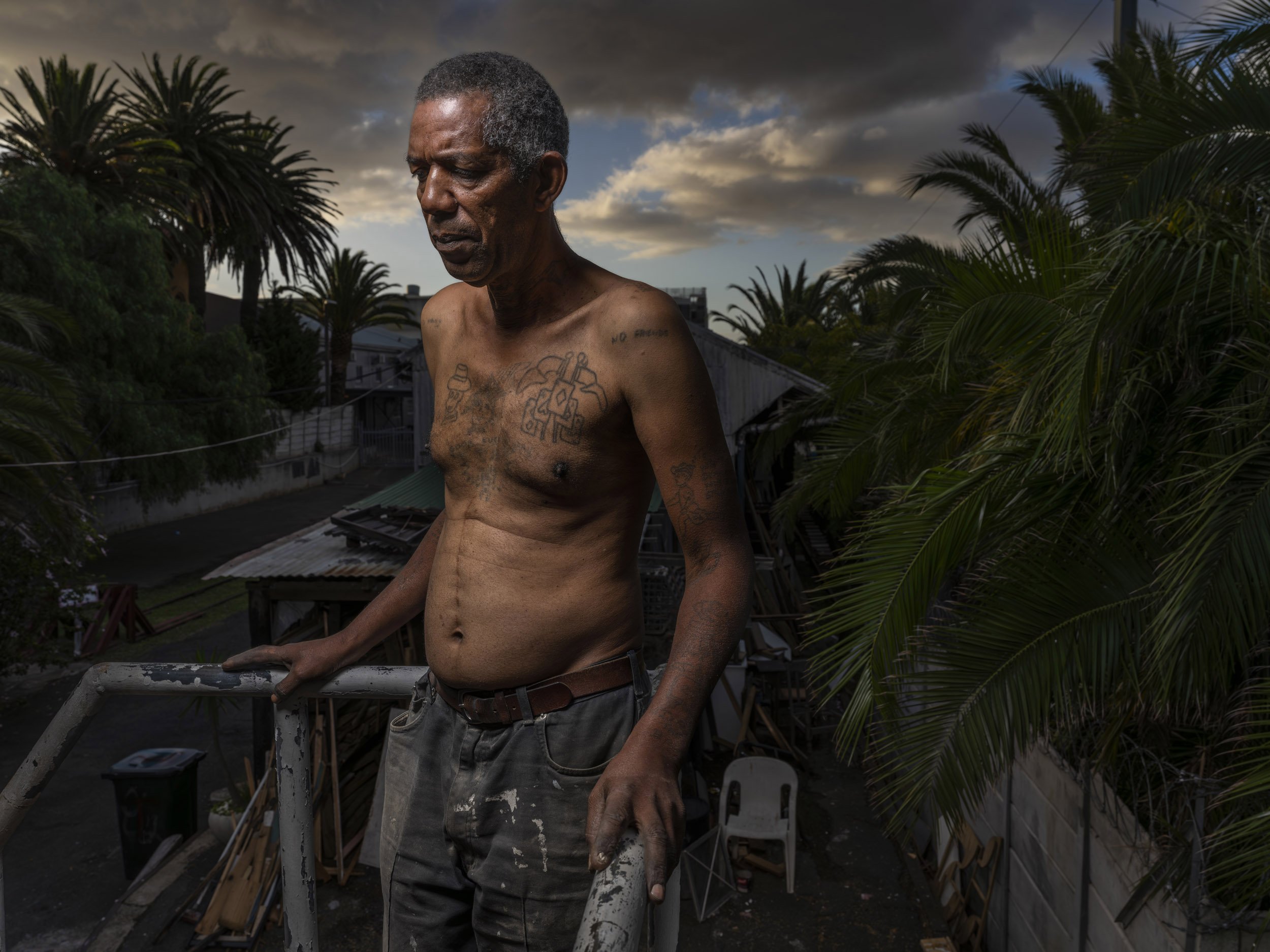
In South Africa the term ‘Coloured’ is used without offence and refers to five million plus people who have multiple heritages. One of the most traumatic events to happen to the coloured nation was the 1968 forced removal of more than 60,000 Coloured people from District 6, a traumatic decision by the Apartheid government that displaced people from their homes and business in the heart of Cape Town over to the Cape Flats in townships like Hanover Park and Mitchell’s Plain. This destroyed their economy, deeply affected extended family and threatened social order within the Coloured community. Gang culture and other forms of resistance emerged. Today, many Coloured people feel that after democracy came in 1994, they were once again thrown away by the ANC government, who many feel prioritized blacks over Coloureds. Today the murder rate in Cape Town averages 10 per day, many of those on the Cape Flats. The drug trade is a mainstay of gang income and there are thousands of addicts. Intergenerational trauma is a strong feature for many Coloured familes on the Cape Flats. That said, there are many successful Coloured people all over South Africa. One of the most significant movements amongst Coloured people today is recognition of their identity beyond the classification first given them by the British and then cemented under Apartheid. This section of the Coloured nation wants to be identified as Khoi and connected to the First People of South Africa. First image: Trevor Alexander Classen, 60, is supposedly the longest serving prisoner in South African history. Trevor feels today that the forced removal of coloured people from District 6 in Cape Town from 1968 was a huge factor in creating a territory mentality in coloured people in the Cape and subsequently laying the foundation for gangs across the Cape Flats. He says it was a case of “you say we are bad, let us show you how bad we can be.”
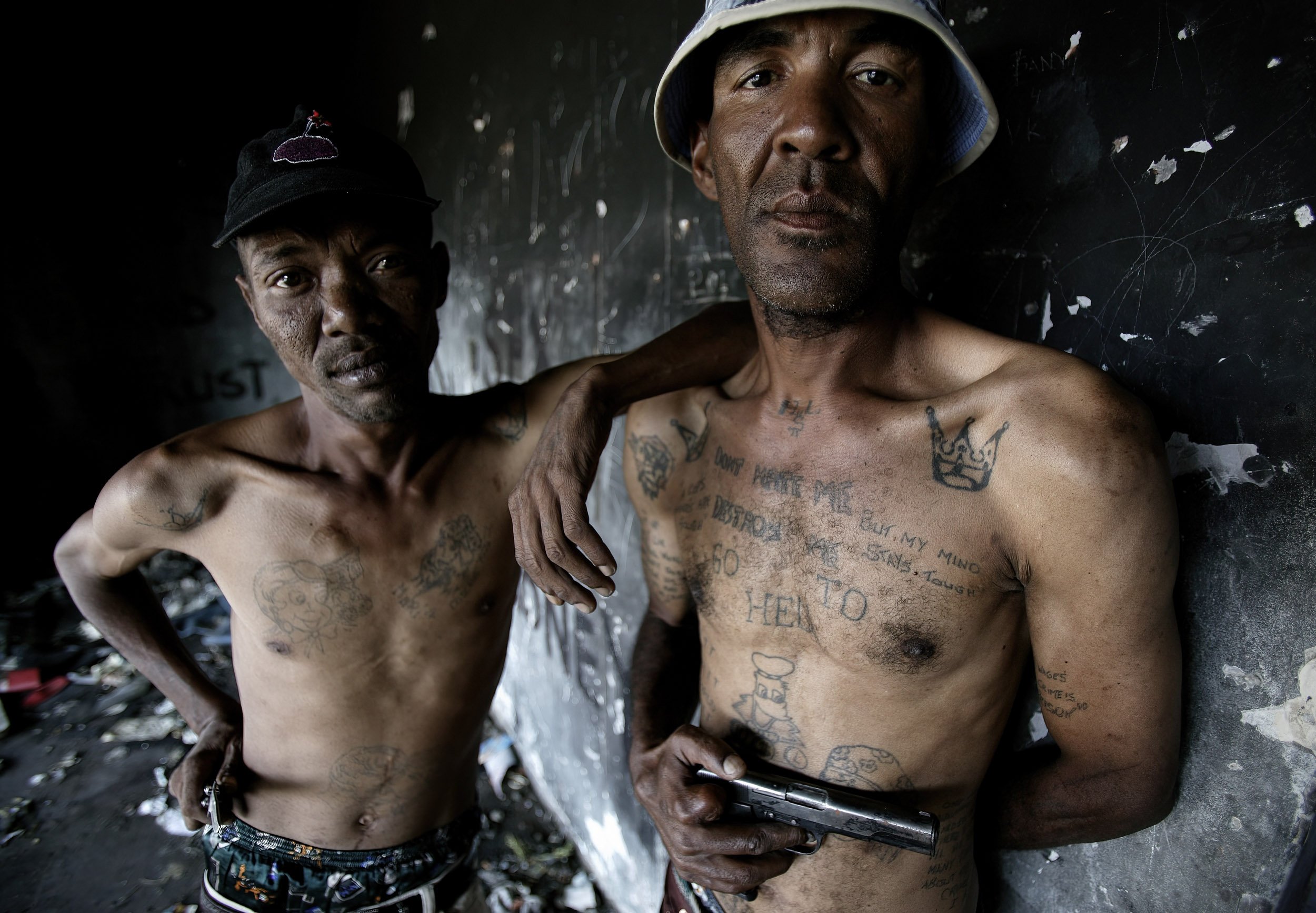
LAVENDER HILL, CAPE FLATS, SOUTH AFRICA: Two senior members of the Americans gang guard an area where there are frequent drug transactions. Both men show tattoos also connecting them to the 26’s, a numbers gang from South African prisons. These tattoos show their status as accomplished thieves. Gangs on the Cape Flats have long been a feature of the coloured community. They are a classic example of the consequences of drug use, the legacy of apartheid and the ongoing social crisis for many coloured people living on the Cape Flats. (Photo by Brent Stirton/Getty Images)

HANOVER PARK, CAPE TOWN, SOUTH AFRICA: Tasleem Johnson, 36, is a long-time member of the Mongrels Gang, one of the oldest and most notorious gangs on the Cape Flats. He has been with them since he was a young teenager, with family links to the Mongrels. He has tried to step back from active gang life but still lives in the same street as the HQ of the Mongrels, making it very difficult. He currently lives with his pregnant wife and 5 children in one bedroom in one of the most dangerous gang areas in South Africa. Hanover Park has seen over 16, 000 gunshots fired in the last 4 years. Tasleem works as a volunteer “interuptor” for “Ceasefire” an organization that seeks to reconcile gang conflict on the Cape Flats. Seen here with his twin daughters and his wife, Tasleem’s hand was cut last night when he tried to calm a gangster who was “freaking out.” Gang culture is a strong feature of life for many coloured people. In South Africa the term ‘coloured’ is used without offence and refers to people who have multiple heritages. Coloured was a legally defined racial classification during apartheid referring to anyone not white or not a member of one of the aboriginal groups of Africa on a cultural basis, which effectively largely meant those people of colour not speaking any indigenous languages. The Cape Coloured community is predominantly descended from numerous interracial sexual unions, primarily between Western European men and Khoisan or mixed-race women in the Cape Colony from the 17th century onwards and then from Malay workers who came to the Cape. There are close to 5 million coloured people in South Africa, with the majority language being Afrikaans. Most of these people are poud to call themselves coloured and do not see this as a derogatory term. (Photo by Brent Stirton/Getty Images)
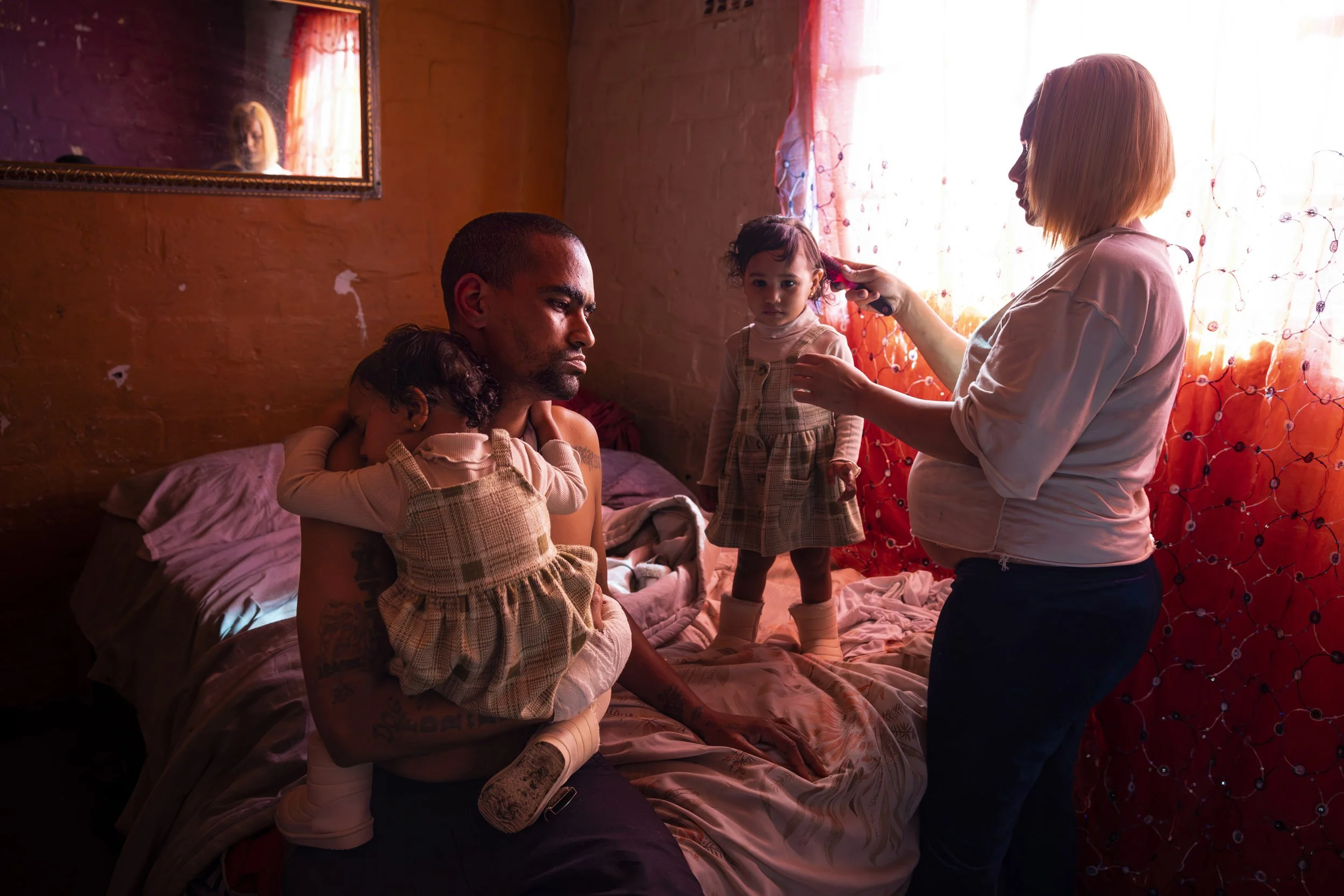
HANOVER PARK, CAPE TOWN, SOUTH AFRICA: Tasleem Johnson, 36, is a long-time member of the Mongrels Gang, one of the oldest and most notorious gangs on the Cape Flats. He has been with them since he was a young teenager, with family links to the Mongrels. He has tried to step back from active gang life but still lives in the same street as the HQ of the Mongrels, making it very difficult. He currently lives with his pregnant wife and 5 children in one bedroom in one of the most dangerous gang areas in South Africa. Hanover Park has seen over 16, 000 gunshots fired in the last 4 years. Tasleem works as a volunteer “interuptor” for “Ceasefire” an organization that seeks to reconcile gang conflict on the Cape Flats. Seen here with his twin daughters and his wife, Tasleem’s hand was cut last night when he tried to calm a gangster who was “freaking out.” Gang culture is a strong feature of life for many coloured people. In South Africa the term ‘coloured’ is used without offence and refers to people who have multiple heritages. Coloured was a legally defined racial classification during apartheid referring to anyone not white or not a member of one of the aboriginal groups of Africa on a cultural basis, which effectively largely meant those people of colour not speaking any indigenous languages. The Cape Coloured community is predominantly descended from numerous interracial sexual unions, primarily between Western European men and Khoisan or mixed-race women in the Cape Colony from the 17th century onwards and then from Malay workers who came to the Cape. There are close to 5 million coloured people in South Africa, with the majority language being Afrikaans. Most of these people are poud to call themselves coloured and do not see this as a derogatory term. (Photo by Brent Stirton/Getty Images)

HANOVER PARK, CAPE TOWN, SOUTH AFRICA: Tasleem Johnson, 36, is a long-time member of the Mongrels Gang, one of the oldest and most notorious gangs on the Cape Flats. He has been with them since he was a young teenager, with family links to the Mongrels. He has tried to step back from active gang life but still lives in the same street as the HQ of the Mongrels, making it very difficult. He currently lives with his pregnant wife and 5 children in one bedroom in one of the most dangerous gang areas in South Africa. Hanover Park has seen over 16, 000 gunshots fired in the last 4 years. Tasleem works as a volunteer “interuptor” for “Ceasefire” an organization that seeks to reconcile gang conflict on the Cape Flats. Seen here with his twin daughters and his wife, Tasleem’s hand was cut last night when he tried to calm a gangster who was “freaking out.” Gang culture is a strong feature of life for many coloured people. In South Africa the term ‘coloured’ is used without offence and refers to people who have multiple heritages. Coloured was a legally defined racial classification during apartheid referring to anyone not white or not a member of one of the aboriginal groups of Africa on a cultural basis, which effectively largely meant those people of colour not speaking any indigenous languages. The Cape Coloured community is predominantly descended from numerous interracial sexual unions, primarily between Western European men and Khoisan or mixed-race women in the Cape Colony from the 17th century onwards and then from Malay workers who came to the Cape. There are close to 5 million coloured people in South Africa, with the majority language being Afrikaans. Most of these people are poud to call themselves coloured and do not see this as a derogatory term. (Photo by Brent Stirton/Getty Images)

STRANDFONTEIN, CAPE TOWN, SOUTH AFRICA: Jonathan, 36, is a former member of the Americans gang and also a member of the notorious 27’s prison gang. He is seen at Camp Joy shortly after completing a 10 year sentence. Camp Joy focuses on rehabilitation and restoration as a guideline to quality of life, healthy living, and re-integration for drug users, ex-prisoners, gang members and vulnerable people. Rehabilitation, to combat drug addiction and to rid communities on all echelons of society of violence, and gangsterism. They are connected to CEASEFIRE, an organization that seeks to intervene and end gang violence on the Cape Flats. Jonathan says he has killed 3 people, and hurt many others. He ran away from an abusive home when he was 11 and by the time he was 12, he was recruited into the Americans gang on the Cape Flats. He became a “hitter” for them, where he says being white was a source of status for the primarily coloured gang. Jonathan says they used him because he felt nothing and was good at crime. His tatoos speak to his gang career and his time in prison. He was a ranking member of the 27’s in prison, the most violent of prison gangs in South Africa and known as “men of blood.” They reinforce gang law in prison and mediate between the 26’s and the 28’s. Jonathan is currently waiting for his UK passport so he can rejoin his mother in Manchester, England, where he hopes to work with gang counselling. (Photo by Brent Stirton/Getty Images)

STRANDFONTEIN, CAPE TOWN, SOUTH AFRICA: Jonathan, 36, is a former member of the Americans gang and also a member of the notorious 27’s prison gang. He is seen at Camp Joy shortly after completing a 10 year sentence. Camp Joy focuses on rehabilitation and restoration as a guideline to quality of life, healthy living, and re-integration for drug users, ex-prisoners, gang members and vulnerable people. Rehabilitation, to combat drug addiction and to rid communities on all echelons of society of violence, and gangsterism. They are connected to CEASEFIRE, an organization that seeks to intervene and end gang violence on the Cape Flats. Jonathan says he has killed 3 people, and hurt many others. He ran away from an abusive home when he was 11 and by the time he was 12, he was recruited into the Americans gang on the Cape Flats. He became a “hitter” for them, where he says being white was a source of status for the primarily coloured gang. Jonathan says they used him because he felt nothing and was good at crime. His tatoos speak to his gang career and his time in prison. He was a ranking member of the 27’s in prison, the most violent of prison gangs in South Africa and known as “men of blood.” They reinforce gang law in prison and mediate between the 26’s and the 28’s. Jonathan is currently waiting for his UK passport so he can rejoin his mother in Manchester, England, where he hopes to work with gang counselling. (Photo by Brent Stirton/Getty Images)

STRANDFONTEIN, CAPE TOWN, SOUTH AFRICA: Ashtivon and Tyrees Jansen, 15 and 13, come from very poor circumstances. Their mother, a long time drug user, had 5 kids and told them to go live with their grandmother in gang-heavy Hanover Park when they were 7 and 10. They walked over 150 kilometers alone to get to their grandmother. Once there they were told they had to go on a few occasions, for the last year they have lived on the street in a rough suburb, these kids are ideal recruits for the coloured gangs on the Cape Flats. This kind of targeted recruitment helps to ensure the gang’s survival and they use kids for jobs where they know the kids will only be lightly prosecuted whereas if they did those crimes, it could mean life in prison. Shortly before this image, a social worker tried to help Ashtivon, 13, who was picked up in a sweep of streetkids. He panicked that they would separate him from his brother and stabbed the social worker to try to get away. Both boys have been kicked out of many schools and its hard to get them housed. They are a classic example of the consequences of drug use, the legacy of apartheid and the ongoing socio-economic crisis for many coloured people living on the Cape Flats. (Photo by Brent Stirton/Getty Images)

MITCHELL'S PLAIN, CAPE TOWN, SOUTH AFRICA: Members of the Dirty Bastards gang sell drugs in a park in a part of Mitchell's Plain known for gang activity and drugs. Gangs on the Cape Flats have long been a feature of the coloured community. They are a classic example of the consequences of drug use, the legacy of apartheid and the ongoing social crisis for many coloured people living on the Cape Flats. (Photo by Brent Stirton/Getty Images)

MITCHELL'S PLAIN, CAPE TOWN, SOUTH AFRICA: Members of the Dirty Bastards gang sell drugs in a park in a part of Mitchell's Plain known for gang activity and drugs. Gangs on the Cape Flats have long been a feature of the coloured community. They are a classic example of the consequences of drug use, the legacy of apartheid and the ongoing social crisis for many coloured people living on the Cape Flats. (Photo by Brent Stirton/Getty Images)

HANOVER PARK, CAPE TOWN, SOUTH AFRICA: Addicts use Meth, Heroin and a local opiod called Mandrax. They are doing this in a drug house run by the Mongrels, one of Cape Town’s oldest and most notorious gangs. Hanover Park is one of the most dangerous gang areas in South Africa and is a hotbed of drug use which has ravaged many parts of the Coloured community. Hanover Park has seen over 16,000 gunshots fired in the last 4 years, according to locals monitoring group Ceasefire. (Photo by Brent Stirton/Getty Images)

HANOVER PARK, CAPE TOWN, SOUTH AFRICA: Local mothers form a community watch group in a dangerous part of Hanover Park, the most dangerous part of the Cape Flats. They are doing this in a neighborhood run by the Mongrels, one of Cape Town’s oldest and most notorious gangs. These mothers have considerable local power and can do things the police cannot. Gang members tend to co-operate with these women on a mutual respect basis. Hanover Park is one of the most dangerous gang areas in South Africa and is a hotbed of drug use which has ravaged many parts of the Coloured community. Hanover Park has seen over 16,000 gunshots fired in the last 4 years, according to locals monitoring group Ceasefire. (Photo by Brent Stirton/Getty Images)

BEAUFORT WEST, NORTHERN CAPE, SOUTH AFRICA: A senior member of the American's Gang seen inside the courtyard of a prison in South Africa. Gangs in the coloured community often have a relationship with prsion gangs, increasing violence both inside and outside of prison. (Photo by Brent Stirton/Getty Images.)

DRAKENSTEIN PRISON, SOUTH AFRICA: A young coloured woman from an HIV organization lectures coloured juvenile sex offendors on sexual crimes. Sexual violence towards women on the Cape Flats is one of the highest in South Africa, with poverty, a lack of gender empowerment and gang violence behind this statistic. A number of these young men are in prison because of sex crimes, something many of them never really thought about until they were themselves the subject of unwelcome sexual interest in prison. (Photo by Brent Stirton/Getty Images.)

STRANDFONTEIN, CAPE TOWN, SOUTH AFRICA: Sherwin Julius, 27, volunteered to go for rehab at Camp Joy, a halfway house on the Cape Flats that focuses on rehabilitation and restoration as a guideline to quality of life, healthy living, and re-integration for drug users, ex-prisoners, gang members and vulnerable people. Sherwin is a former shooter for the Americans gang on the Cape Flats. He said he came from a good home but was attracted to the excitement of the gangers lifestyle and the respect it brought him. He was shot a number of times and considers himself luck to have survived. He nearly lost his leg after two shots in his calf. Sherwin likes working with the rabbits because he feels they are better than people and its good to feel he is successful in something other than crime. Behind Sherwin is Siphumelo Ludidi, 34, a meth user who came to Camp Joy for help. Siphumelo says he moved to Hanover park, a dangerous gang area, because he felt safer there as he had a relationship with the gangs. If something happened to him, he says he could go to the gang leaders and they would help him. He had multiple criminal skills and musical ability so he felt the gangs respected him. Camp Joy is connected to CEASEFIRE, an organization that seeks to intervene and end gang violence on the Cape Flats. (Photo by Brent Stirton/Getty Images)

NEWLANDS FOREST, CAPE TOWN: Men from Camp Joy walk slowly up a path to the top of Table Mountain as part of a rehabilitation exercise. Camp Joy is a halfway house on the Cape Flats that focuses on rehabilitation and restoration as a guideline to quality of life, healthy living, and re-integration for drug users, ex-prisoners, gang members and vulnerable people. Camp Joy is connected to CEASEFIRE, an organization that seeks to intervene and end gang violence on the Cape Flats. (Photo by Brent Stirton/Getty Images)

HANGBERG, HOUTBAY, CAPE TOWN, SOUTH AFRICA: Chief Regan James, of the Katzkorana Royal house of Khoi, is seen in his community in Hangberg, Hout Bay. Chief Regan is representative of a large South African population group previously designated as “coloured.” This group are now looking further back in their lineage and identifying as Khoi people. When the Dutch arrived in the Cape in 1652, they wrote of over 15,000 people living at the foot of Table Mountain, Chief Regan and his followers believe those people are their direct ancestors. They see themselves as amongst the first nations people of South Africa and think of land rights though that lens. Chief Regan is part of the Hangberg community that has occupied land high on the mountainside of Houtbay, above the area where “coloured” fisherman were traditionally housed by the Apartheid government. They occupied the land after years of waiting for RDP housing from the SA government, housing that for most has never been given. (Photo by Brent Stirton/Getty Images.)

HANGBERG, HOUTBAY, CAPE TOWN, SOUTH AFRICA: Chief Regan James, of the Katzkorana Royal house of Khoi, is seen in his community in Hangberg, Hout Bay. Chief Regan is representative of a large South African population group previously designated as “coloured.” This group are now looking further back in their lineage and identifying as Khoi people. When the Dutch arrived in the Cape in 1652, they wrote of over 15,000 people living at the foot of Table Mountain, Chief Regan and his followers believe those people are their direct ancestors. They see themselves as amongst the first nations people of South Africa and think of land rights though that lens. Chief Regan is part of the Hangberg community that has occupied land high on the mountainside of Houtbay, above the area where “coloured” fisherman were traditionally housed by the Apartheid government. They occupied the land after years of waiting for RDP housing from the SA government, housing that for most has never been given. (Photo by Brent Stirton/Getty Images.)

HANGBERG, HOUTBAY, CAPE TOWN, SOUTH AFRICA: Chief Regan James, of the Katzkorana Royal house of Khoi, is seen in his community in Hangberg, Hout Bay. Chief Regan is representative of a large South African population group previously designated as “coloured.” This group are now looking further back in their lineage and identifying as Khoi people. When the Dutch arrived in the Cape in 1652, they wrote of over 15,000 people living at the foot of Table Mountain, Chief Regan and his followers believe those people are their direct ancestors. They see themselves as amongst the first nations people of South Africa and think of land rights though that lens. Chief Regan is part of the Hangberg community that has occupied land high on the mountainside of Houtbay, above the area where “coloured” fisherman were traditionally housed by the Apartheid government. They occupied the land after years of waiting for RDP housing from the SA government, housing that for most has never been given. (Photo by Brent Stirton/Getty Images.)

HANGBERG, HOUTBAY, CAPE TOWN, SOUTH AFRICA: Chief Regan James, of the Katzkorana Royal house of Khoi, is seen in his community in Hangberg, Hout Bay. Chief Regan is representative of a large South African population group previously designated as “coloured.” This group are now looking further back in their lineage and identifying as Khoi people. When the Dutch arrived in the Cape in 1652, they wrote of over 15,000 people living at the foot of Table Mountain, Chief Regan and his followers believe those people are their direct ancestors. They see themselves as amongst the first nations people of South Africa and think of land rights though that lens. Chief Regan is part of the Hangberg community that has occupied land high on the mountainside of Houtbay, above the area where “coloured” fisherman were traditionally housed by the Apartheid government. They occupied the land after years of waiting for RDP housing from the SA government, housing that for most has never been given. (Photo by Brent Stirton/Getty Images)
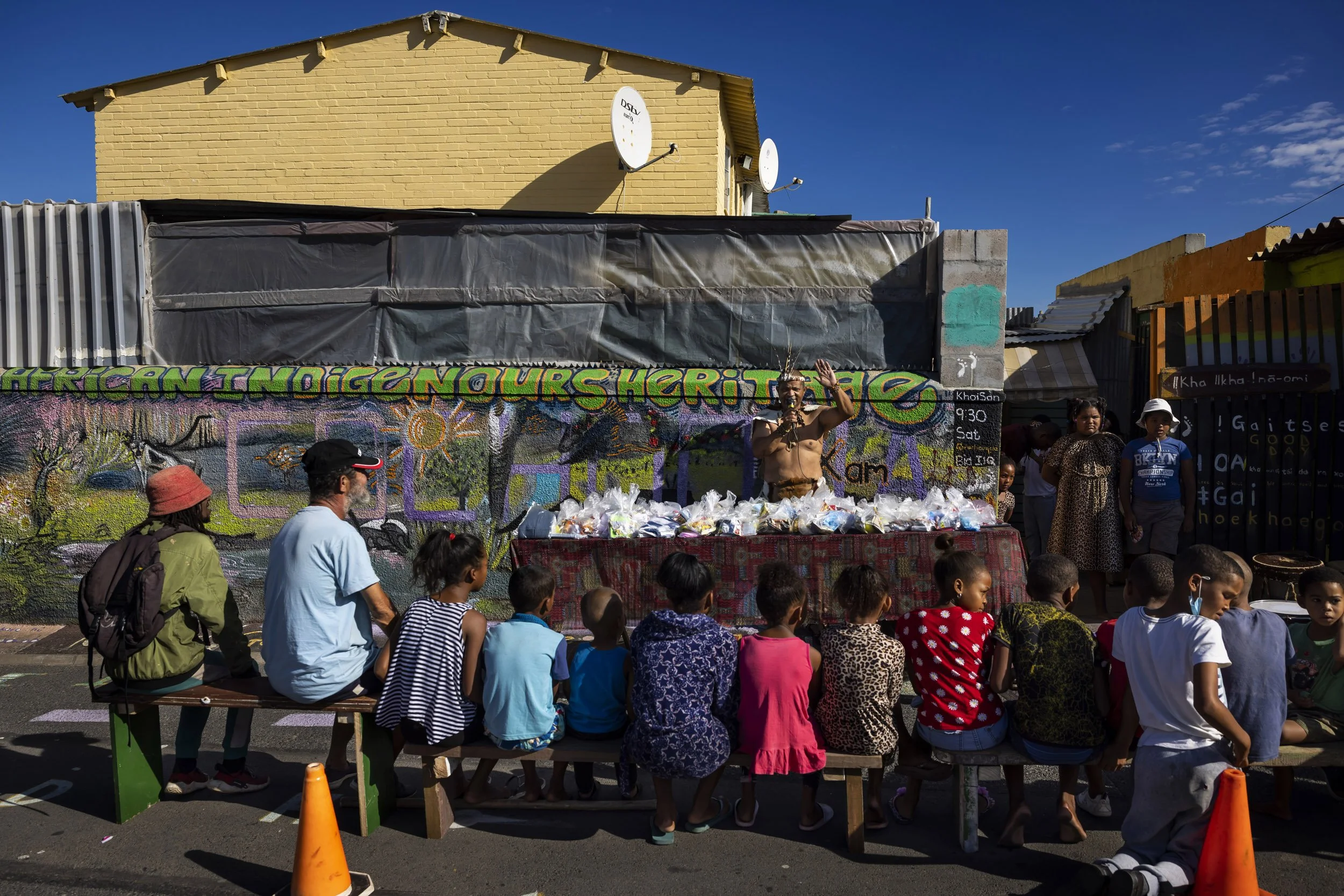
OCEANVIEW, CAPE TOWN SOUTH AFRICA, MARCH 12, 2022: Chief Bi’a Ishsaqua Sabodien is seen educating children and youth in Oceanview township about their Khoi first people’s heritage. His children are seen wearing leopard print dresses. Chief Ishsaqua is representative of a large South African population group previously designated as “coloured.” This group are now looking further back in their lineage and identifying as Khoi people. When the Dutch arrived in the Cape in 1652, they wrote of over 15,000 people living at the foot of Table Mountain, Chief Ishaqua and his followers believe those people are their direct ancestors. They see themselves as amongst the first nations people of South Africa and think of land rights though that lens. Chief Ishaqua is involved in land claims for land in nearby Witsands that he believes his ancestors were robbed of by colonialism. He says his mother was a Khoi chief’s daughter and his grandmother taught him that he was Khoi. He has been wearing skins for the last few years as he consolidates his beliefs. (Photo by Brent Stirton/Getty Images)

OCEANVIEW, CAPE TOWN SOUTH AFRICA, MARCH 12, 2022: Chief Bi’a Ishsaqua Sabodien is seen educating children and youth in Oceanview township about their Khoi first people’s heritage. His children are seen wearing leopard print dresses. Chief Ishsaqua is representative of a large South African population group previously designated as “coloured.” This group are now looking further back in their lineage and identifying as Khoi people. When the Dutch arrived in the Cape in 1652, they wrote of over 15,000 people living at the foot of Table Mountain, Chief Ishaqua and his followers believe those people are their direct ancestors. They see themselves as amongst the first nations people of South Africa and think of land rights though that lens. Chief Ishaqua is involved in land claims for land in nearby Witsands that he believes his ancestors were robbed of by colonialism. He says his mother was a Khoi chief’s daughter and his grandmother taught him that he was Khoi. He has been wearing skins for the last few years as he consolidates his beliefs. (Photo by Brent Stirton/Getty Images)

OCEANVIEW, CAPE TOWN SOUTH AFRICA, MARCH 12, 2022: Chief Bi’a Ishsaqua Sabodien is seen educating children and youth in Oceanview township about their Khoi first people’s heritage. His children are seen wearing leopard print dresses. Chief Ishsaqua is representative of a large South African population group previously designated as “coloured.” This group are now looking further back in their lineage and identifying as Khoi people. When the Dutch arrived in the Cape in 1652, they wrote of over 15,000 people living at the foot of Table Mountain, Chief Ishaqua and his followers believe those people are their direct ancestors. They see themselves as amongst the first nations people of South Africa and think of land rights though that lens. Chief Ishaqua is involved in land claims for land in nearby Witsands that he believes his ancestors were robbed of by colonialism. He says his mother was a Khoi chief’s daughter and his grandmother taught him that he was Khoi. He has been wearing skins for the last few years as he consolidates his beliefs. (Photo by Brent Stirton/Getty Images)

CAPE TOWN, SOUTH AFRICA, MARCH 22, 2022: Chief Autshumao, a prominent leader of the Khoisan Legislative Council and on the Goringhaicona Khoi Khoi Indigenous Traditional Council, is against the building of a new Amazon headquarters in Cape Town as it is on land sacred to the Khoi people. He is seen arguing with another Khoi group that wants the Amazon building project and the jobs it may provide. The $300 million development had fueled a nasty feud within Indigenous, or First Nations, communities over whether building on what many consider sacred land would desecrate their history and culture, or uplift it, since the developer had promised to include an Indigenous heritage center. A judge temporarily halted construction of Amazon’s first Africa headquarters, in Cape Town, saying the developer didn’t properly consult Indigenous people about building on sacred ground. Judge Patricia Goliath of the Western Cape High Court said the consultation process for the project, a $300 million development on a former golf course, was biased because it omitted many Indigenous groups. She ordered work to be stopped and said its owner must talk again with Indigenous people. Work has since resumed on the Amazon campus and it is now near completion. Cape Town officials last year celebrated Amazon’s decision to choose Cape Town as “a base of operations on the African continent.” They said the development would create 19,000 jobs, almost 500,000 square feet of residential and commercial space, and bolster the region as a technology hub. According to the modern Khoi, most South Africans have been conditioned either by historic colonialist indoctrination or by contemporary Black African nationalist propaganda that this land either belongs exclusively to European imperialists or to the Bantu immigrants. Both claims are factually incorrect and are a gross historical travesty. In contrast to every black, white or brown South African, the Khoisan alone are indigenous to this land.

OBSERVATORY, CAPE TOWN, SOUTH AFRICA, MARCH 22, 2022: Prominent members of the Goringhaicona Khoi Khoi Indigenous Traditional Council, are seen performing a cleansing ceremony against the building of a new Amazon headquarters in Cape Town as it is on land sacred to the Khoi people. This stands in contrast to another Khoi group that wants the Amazon building project and the jobs it may provide. The $300 million development had fueled a nasty feud within Indigenous, or First Nations, communities over whether building on what many consider sacred land would desecrate their history and culture, or uplift it, since the developer had promised to include an Indigenous heritage center. A judge temporarily halted construction of Amazon’s first Africa headquarters, in Cape Town, saying the developer didn’t properly consult Indigenous people about building on sacred ground. Judge Patricia Goliath of the Western Cape High Court said the consultation process for the project, a $300 million development on a former golf course, was biased because it omitted many Indigenous groups, the New York Times reported. She ordered work to be stopped and said its owner must talk again with Indigenous people. Work has since resumed on the Amazon campus and it is now near completion. Cape Town officials last year celebrated Amazon’s decision to choose Cape Town as “a base of operations on the African continent.” They said the development would create 19,000 jobs, almost 500,000 square feet of residential and commercial space, and bolster the region as a technology hub. According to the modern Khoi, most South Africans have been conditioned either by historic colonialist indoctrination or by contemporary Black African nationalist propaganda that this land either belongs exclusively to European imperialists or to the Bantu immigrants. Both claims are factually incorrect and are a gross historical travesty. In contrast to every black, white or brown South African, the Khoisan alone are

GRASSY PARK, CAPE FLATS, SOUTH AFRICA: The funeral of Desmond Charles Dreyer, a leader in the Goringhaicona Khoi Khoin Indigenous tribal council. Other members of the council are seen graveside burning herbs in a traditional ceremony to commemorate him. Most of the crosses in this cemetery are new and the consequence of many Covid deaths within the coloured community in the cape. Many coloured familes have mutligenerational family members inside small homes, making disease transmission easier. (Photo by Brent Stirton/Getty Images)

CAPE TOWN, SOUTH AFRICA,: A dancer enacts a lamentation ceremony against the building of a new Amazon headquarters in Cape Town as it is on land sacred to the Khoi people. The $300 million development had fueled a nasty feud within Indigenous, or First Nations, communities over whether building on what many consider sacred land would desecrate their history and culture, or uplift it, since the developer had promised to include an Indigenous heritage center. A judge temporarily halted construction of Amazon’s first Africa headquarters, in Cape Town, saying the developer didn’t properly consult Indigenous people about building on sacred ground. Work has since resumed on the Amazon campus and it is now near completion. Cape Town officials last year celebrated Amazon’s decision to choose Cape Town as “a base of operations on the African continent.” They said the development would create 19,000 jobs, almost 500,000 square feet of residential and commercial space, and bolster the region as a technology hub. According to the modern Khoi, most South Africans have been conditioned either by historic colonialist indoctrination or by contemporary Black African nationalist propaganda that this land either belongs exclusively to European imperialists or to the Bantu immigrants. Both claims are factually incorrect. In contrast to every black, white or brown South African, the Khoi San alone are indigenous to this land. Everyone else, came from somewhere else. Thousands of years before the all-conquering Black settlers from West Africa crossed the Limpopo in the 10th century on their militant southward sweep down the continent, and long before the White explorers arrived by ship at the Cape of Good Hope in the 15th century, the whole of Southern Africa was inhabited exclusively by the native Khoi and San peoples. Significantly, the roaming Black tribes from the north did not cross the Fish River nor did they settle in the Western Cape. The only locals were the Khoi, San

PLATFONTEIN, SOUTH AFRICA: Wentzel Katjarra is a former special forces soldier for 31 Battalion, the bushman battalion of the South African Defence Force during the Angolan war. He lives in poverty in Platfontein, the Khoi San Khwe settlement for former bushmen members of the elite bushman brigades of the South African Defence Force under Apartheid. He tries to keep alive his original bushman skills and teaches local boys some of these. The men from these units were recruited first by the Portugese and then joined to SADF because of their exceptional bush craft skills and served with distinction amongst the tip of the spear units of the South African Defence force during the Angolan wars. When democracy came to South Africa, they were seen as fighting for the wrong side and the ANC disbanded their battalions and placed them in very poor conditions in a settlement outside of Kimberley in the middle of South Africa. There are very few jobs and rampant alcoholism. They feel they are “pariahs in the land of their birth” and are calling for the urgent implementation of the Traditional and Khoi-San Leadership Act. The residents of Platfontein say that if the act is implemented, the budget allocated to the House of Traditional Leaders will assist them in creating jobs and deliver them from poverty. Many who live here feel the ANC has failed them and that they need representatives who will preserve their traditions and advocate for their language to be made one of the official 11, before it dies out completely. The act, which was signed into law in November, proposes to recognize all legitimate Khoi-San communities. No commencement date has been announced. The people in this settlement are part of the original bushman nomadic groups that trekked inland from the Cape coast ending up in the border region of Angola to escape persecution from the different race groups that attempted to exterminate them. (Photo by Brent Stirton/Getty Images.)

PLATFONTEIN, SOUTH AFRICA: Wentzel Katjarra is a former special forces soldier for 31 Battalion, the bushman battalion of the South African Defence Force during the Angolan war. He lives in poverty in Platfontein, the Khoi San Khwe settlement for former bushmen members of the elite bushman brigades of the South African Defence Force under Apartheid. He tries to keep alive his original bushman skills and teaches local boys some of these. The men from these units were recruited first by the Portugese and then joined to SADF because of their exceptional bush craft skills and served with distinction amongst the tip of the spear units of the South African Defence force during the Angolan wars. When democracy came to South Africa, they were seen as fighting for the wrong side and the ANC disbanded their battalions and placed them in very poor conditions in a settlement outside of Kimberley in the middle of South Africa. There are very few jobs and rampant alcoholism. They feel they are “pariahs in the land of their birth” and are calling for the urgent implementation of the Traditional and Khoi-San Leadership Act. The residents of Platfontein say that if the act is implemented, the budget allocated to the House of Traditional Leaders will assist them in creating jobs and deliver them from poverty. Many who live here feel the ANC has failed them and that they need representatives who will preserve their traditions and advocate for their language to be made one of the official 11, before it dies out completely. The act, which was signed into law in November, proposes to recognize all legitimate Khoi-San communities. No commencement date has been announced. The people in this settlement are part of the original bushman nomadic groups that trekked inland from the Cape coast ending up in the border region of Angola to escape persecution from the different race groups that attempted to exterminate them. (Photo by Brent Stirton/Getty Images.)

PLATFONTEIN, SOUTH AFRICA: Wentzel Katjarra is a former special forces soldier for 31 Battalion, the bushman battalion of the South African Defence Force during the Angolan war. He lives in poverty in Platfontein, the Khoi San Khwe settlement for former bushmen members of the elite bushman brigades of the South African Defence Force under Apartheid. He tries to keep alive his original bushman skills and teaches local boys some of these. The men from these units were recruited first by the Portugese and then joined to SADF because of their exceptional bush craft skills and served with distinction amongst the tip of the spear units of the South African Defence force during the Angolan wars. When democracy came to South Africa, they were seen as fighting for the wrong side and the ANC disbanded their battalions and placed them in very poor conditions in a settlement outside of Kimberley in the middle of South Africa. There are very few jobs and rampant alcoholism. They feel they are “pariahs in the land of their birth” and are calling for the urgent implementation of the Traditional and Khoi-San Leadership Act. The residents of Platfontein say that if the act is implemented, the budget allocated to the House of Traditional Leaders will assist them in creating jobs and deliver them from poverty. Many who live here feel the ANC has failed them and that they need representatives who will preserve their traditions and advocate for their language to be made one of the official 11, before it dies out completely. The act, which was signed into law in November, proposes to recognize all legitimate Khoi-San communities. No commencement date has been announced. The people in this settlement are part of the original bushman nomadic groups that trekked inland from the Cape coast ending up in the border region of Angola to escape persecution from the different race groups that attempted to exterminate them. (Photo by Brent Stirton/Getty Images.)

PLATFONTEIN, SOUTH AFRICA: The Khoi San Khwe settlement for former bushmen members of the elite bushman brigades of the South African Defence Force under Apartheid. The men from these units were recruited because of their exceptional bush craft skills and served with distinction amongst the tip of the spear units of the South African Defence force during the Angolan wars. When democracy came to South Africa, they were seen as fighting for the wrong side and the ANC disbanded their battalions and placed them in very poor conditions in a settlement outside of Kimberley in the middle of South Africa. There are very few jobs and rampant alcoholism. They feel they are “pariahs in the land of their birth” and are calling for the urgent implementation of the Traditional and Khoi-San Leadership Act. The residents of Platfontein say that if the act is implemented, the budget allocated to the House of Traditional Leaders will assist them in creating jobs and deliver them from poverty. Many who live here feel the ANC has failed them and that they need representatives who will preserve their traditions and advocate for their language to be made one of the official 11, before it dies out completely. The act, which was signed into law in November 2020, proposes to recognize all legitimate Khoi-San communities. No commencement date has been announced. The people in this settlement are part of the original bushman nomadic groups that trekked inland from the Cape coast ending up in the border region of Angola to escape persecution from the different race groups that attempted to exterminate them. (Photo by Brent Stirton/Getty Images.)

PLATFONTEIN, SOUTH AFRICA: The Khoi San Khwe settlement for former bushmen members of the elite bushman brigades of the South African Defence Force under Apartheid. The men from these units were recruited because of their exceptional bush craft skills and served with distinction amongst the tip of the spear units of the South African Defence force during the Angolan wars. When democracy came to South Africa, they were seen as fighting for the wrong side and the ANC disbanded their battalions and placed them in very poor conditions in a settlement outside of Kimberley in the middle of South Africa. There are very few jobs and rampant alcoholism. They feel they are “pariahs in the land of their birth” and are calling for the urgent implementation of the Traditional and Khoi-San Leadership Act. The residents of Platfontein say that if the act is implemented, the budget allocated to the House of Traditional Leaders will assist them in creating jobs and deliver them from poverty. Many who live here feel the ANC has failed them and that they need representatives who will preserve their traditions and advocate for their language to be made one of the official 11, before it dies out completely. The act, which was signed into law in November 2020, proposes to recognize all legitimate Khoi-San communities. No commencement date has been announced. The people in this settlement are part of the original bushman nomadic groups that trekked inland from the Cape coast ending up in the border region of Angola to escape persecution from the different race groups that attempted to exterminate them. (Photo by Brent Stirton/Getty Images.)

BOTSWANA: Severely impoverished Khoi San people, formerly known as bushmen, seen in a small settlement they were moved to when they were moved off their traditional land to make way for diamond mining. They now live in an area where they cannot hunt and where water is in short supply. This is despite winning their case against government in a London court. All Khoi San people were originally at the coast but moved inland to escape persecution from various colonial and Bantu groups. (Photo by Brent Stirton/Getty Images)

BOTSWANA: Severely impoverished Khoi San people, formerly known as bushmen, seen in a small settlement they were moved to when they were moved off their traditional land to make way for diamond mining. They now live in an area where they cannot hunt and where water is in short supply. This is despite winning their case against government in a London court. All Khoi San people were originally at the coast but moved inland to escape persecution from various colonial and Bantu groups. (Photo by Brent Stirton/Getty Images)

BOTSWANA: Severely impoverished Khoi San people, formerly known as bushmen, seen in a small settlement they were moved to when they were moved off their traditional land to make way for diamond mining. They now live in an area where they cannot hunt and where water is in short supply. This is despite winning their case against government in a London court. All Khoi San people were originally at the coast but moved inland to escape persecution from various colonial and Bantu groups. (Photo by Brent Stirton/Getty Images)

KALAHARI DESERT, SOUTH AFRICA: A San bushman pretends to hunt for a documentary for the Discovery Channel. This man lives in Kalahari Gemsbok National Park where he and his group are part of the tourism attraction of the park. They will occasionally participate in films or documentaries on the lifestyle of the San. The San are the far spectrum of people in South Africa who were collectively called Coloured, first by the colonial British and then under the Apartheid regime. In recent years, there has been more of a focus on the rights of First People’s but there is some dispute as to who that is amongst the Coloured groups of South Africa. (Photo by Brent Stirton/Getty Images)

KALAHARI DESERT, SOUTH AFRICA: A San bushman leans against a fence which now separates him from his former hunting grounds. This man lives in Kalahari Gemsbok National Park where he and his group are part of the tourism attraction of the park. They will occasionally participate in films or documentaries on the lifestyle of the San. The San are the far spectrum of people in South Africa who are collectively called Coloured, first by the colonial British and then under the Apartheid regime. In recent years, there has been more of a focus on the rights of First People’s but there is some dispute as to who that is amongst the Coloured groups of South Africa. (Photo by Brent Stirton/Getty Images)

TOKAI, CAPE TOWN SOUTH AFRICA, 6TH APRIL 2023: The graduation of Charlie 22 company, a group of young women who have graduated in security training from the Chrysalis Academy. Chrysalis Academy is an academy geared towards the development of young adults between the ages of 18-25. It provides a platform for youth to deepen their resilience and unleash their potential through mental, physical, emotional and spiritual development, enabling them to be role models and agents of positive change. These women come from home situations where they are at risk and have just completed 12 weeks training. They will now go on to placements in the police, local municipality and other branches. (Photo by Brent Stirton/Getty Images.)

TOKAI, CAPE TOWN SOUTH AFRICA, 6TH APRIL 2023: The graduation of Charlie 22 company, a group of young women who have graduated in security training from the Chrysalis Academy. Chrysalis Academy is an academy geared towards the development of young adults between the ages of 18-25. It provides a platform for youth to deepen their resilience and unleash their potential through mental, physical, emotional and spiritual development, enabling them to be role models and agents of positive change. These women come from home situations where they are at risk and have just completed 12 weeks training. They will now go on to placements in the police, local municipality and other branches. (Photo by Brent Stirton/Getty Images.)

TOKAI, CAPE TOWN SOUTH AFRICA, 6TH APRIL 2023: The graduation of Charlie 22 company, a group of young women who have graduated in security training from the Chrysalis Academy. Chrysalis Academy is an academy geared towards the development of young adults between the ages of 18-25. It provides a platform for youth to deepen their resilience and unleash their potential through mental, physical, emotional and spiritual development, enabling them to be role models and agents of positive change. These women come from home situations where they are at risk and have just completed 12 weeks training. They will now go on to placements in the police, local municipality and other branches. (Photo by Brent Stirton/Getty Images.)

CAPE TOWN, SOUTH AFRICA: Two recent graduates at the Chrysalis Academy show affection as they wait to perform during their passing out parade. The Chrysalis Academy was established to give severely disadvantaged and vulnerable teens and young adults a way out of life on the Cape Flats and surrounding townships. Around 70% of candidates are coloured, the remainder are black. Upon graduation, students are placed in a 12-month work placement to gain work experience. They are also provided with five years after care support. Chrysalis Academy students are not homogenous, and their qualifications range from a minimum Grade 9 to Matric, as well as a post matric qualification. The Academy has three intakes per year - 2 male intakes and 1 female intake. Training is geared towards joining the police or security services and they are guaranteed a work placement if they graduate. The applications are heavily oversubscribed and there is a particular emphasis on vulnerable female empowerment. (Photo by Brent Stirton/Getty Images)

CAPE TOWN, SOUTH AFRICA: Dr Lucille Meyer, CEO of the Chrysalis Academy and former aide to former South African President Thabo Mbeki. The Chrysalis Academy was established to give severely disadvantaged and vulnerable teens and young adults a way out of life on the Cape Flats and surrounding townships. Around 70% of candidates are coloured, the remainder are black. Upon graduation, students are placed in a 12-month work placement to gain work experience. They are also provided with five years after care support. Chrysalis Academy students are not homogenous, and their qualifications range from a minimum Grade 9 to Matric, as well as a post matric qualification. The Academy has three intakes per year - 2 male intakes and 1 female intake. Training is geared towards joining the police or security services and they are guaranteed a work placement if they graduate. The applications are heavily oversubscribed and there is a particular emphasis on vulnerable female empowerment. (Photo by Brent Stirton/Getty Images)

MITCHELL'S PLAIN, CAPE FLATS, SOUTH AFRICA: Men play a saturday morjning drinking game in a park in Mitchell's Plain before 10 am in the morning. Alcohol abuse is a problem amongst many in the coloured community, something that dates back to the Dop system, where coloured wine farm workers were paid in wine as part of their wages. (Photo by Brent Stirton/Getty Images.)

JONKERSDAM, TABLE MOUNTAIN NATIONAL PARK, CAPE TOWN SOUTH AFRICA, MARCH 12, 2022: A drunk young “coloured” man passed out at the entrance to Jonkersdam, a part of Table Mountain National Park where there are land claims from so-called coloured people who see their lineage as going much further back than that apartheid designation and identify as Khoi. Alcohol abuse is a problem amongst many in the coloured community, something that dates back to the Dop system, where wine farm workers were paid in wine as part of their wages. (Photo by Brent Stirton/Getty Images.)

JONKERSDAM, TABLE MOUNTAIN NATIONAL PARK, CAPE TOWN SOUTH AFRICA, MARCH 12, 2022: A drunk young “coloured” man passed out at the entrance to Jonkersdam, a part of Table Mountain National Park where there are land claims from so-called coloured people who see their lineage as going much further back than that apartheid designation and identify as Khoi. Alcohol abuse is a problem amongst many in the coloured community, something that dates back to the Dop system, where coloured wine farm workers were paid in wine as part of their wages. (Photo by Brent Stirton/Getty Images.)

STELLENBOSCH, CAPE TOWN, SOUTH AFRICA, MARCH 22, 2022: A young woman picks grapes on a wine farm in Stellenbosch, she is wearing a traditional sunblock on her face. The Dop system on wine farms created many problems for workers. This was a recently-condemned practise where employees used to receive part of their wages in wine. This is seen to have created many problems for those farm workers and normalized heavy drinking. Many issue persistent today with alcohol and the coloured nation (Photo by Brent Stirton/Getty Images)
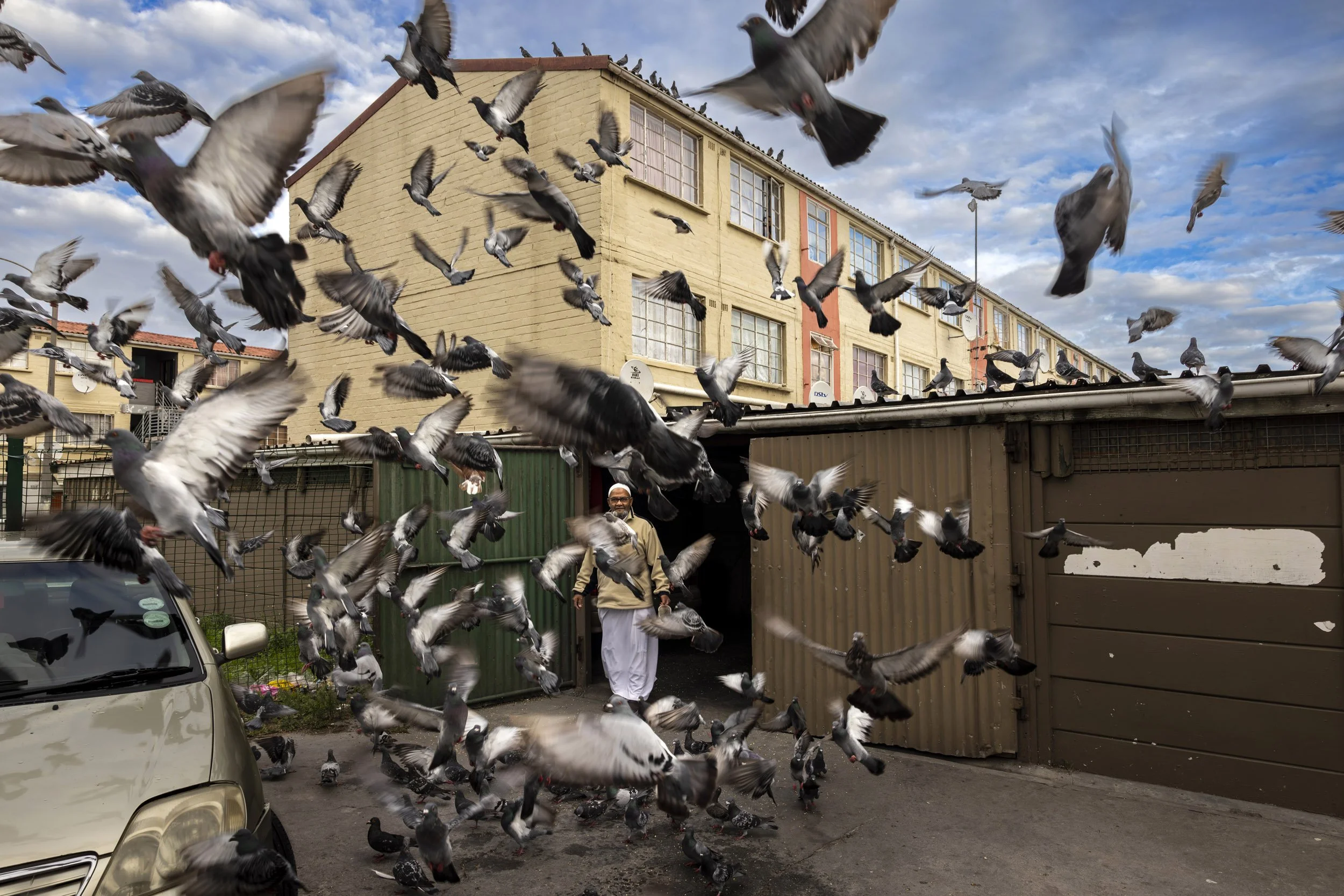
HANOVER PARK, CAPE TOWN, SOUTH AFRICA: Sahid Mohammed feeds pigeons in a dangerous part of Hanover Park, one of the most dangerous gang areas in South Africa and a hotbed of drug use and violence. Hanover Park has seen over 16000 gunshots fired in the last 4 years. Shafiek was disabled in an accident in 2014 and now rents out his horses for parties in order to make a living. He lost his sister to gang fighting and now tries to get teenagers to care about animals as an alternative to the gang lifestyle. (Photo by Brent Stirton/Getty Images)

HANOVER PARK, CAPE TOWN, SOUTH AFRICA: Three ladies who live above a burned out former “Tik” house come down to the street in their dressing gowns early in the morning. Tik is the local Afrikaans word for meth amphetamine, which is a cheap and popular drug on the Cape Flats.The burnt out house is underneath the ladies rooms and even though the fire occurred over a year ago, nothing has been done to safeguard the building and its upstairs residents. Hanover Parks is one of the most dangerous gang areas in South Africa and is a hotbed of drug use. Hanover Park has seen over 16000 gunshots fired in the last 4 years. (Photo by Brent Stirton/Getty Images)

HANOVER PARK, CAPE TOWN, SOUTH AFRICA: Shafiek Gamiet, 50, tends to his horses outside a block of flats in a dangerous part of Hanover Park, one of the most dangerous gang areas in South Africa and a hotbed of drug use and violence. Hanover Park has seen over 16000 gunshots fired in the last 4 years. Shafiek was disabled in an accident in 2014 and now rents out his horses for parties in order to make a living. He lost his sister to gang fighting and now tries to get teenagers to care about animals as an alternative to the gang lifestyle. (Photo by Brent Stirton/Getty Images)

HANOVER PARK, CAPE TOWN, SOUTH AFRICA: Two boys look at a small group of horses outside a block of flats in a dangerous part of Hanover Park, one of the most dangerous gang areas in South Africa and a hotbed of drug use and violence. Hanover Park has seen over 16000 gunshots fired in the last 4 years. Shafiek was disabled in an accident in 2014 and now rents out his horses for parties in order to make a living. He lost his sister to gang fighting and now tries to get teenagers to care about animals as an alternative to the gang lifestyle. (Photo by Brent Stirton/Getty Images)

HANOVER PARK, CAPE TOWN, SOUTH AFRICA: Hanover Park boxing academy is inside Igshaan Nazier home in a dangerous part of Hanover Park, one of the most dangerous gang areas in South Africa and a hotbed of drug use and violence. Hanover Park has seen over 16000 gunshots fired in the last 4 years. Igshaan tries to get kids interested in boxing and athletics as an alternative to the gang lifestyle. There is a meth house situated on both sides of his home yet he has succeeded in raising all of his 4 boys without any joining the gangs or becoming involved in drugs. Over the last 25 years he has trained thousands of kids in his improvised Gym, including his son who turns professional in May. (Photo by Brent Stirton/Getty Images)

MITCHELL’S PLAIN, CAPE TOWN, SOUTH AFRICA: Phoebe Rademeyer, 13, is seen in a new RDP housing development on the outskirts of Mitchell’s Plain. RDP housing is meant to address the problem of housing for millions of the poor in South Africa but is hopelessly backlogged. It takes an average of 5-10 years before housing becomes available to those on the list. Its is meant for people who earn below a certain amount and is an upliftment policy of the South African government. (Photo by Brent Stirton/Getty Images)

WOODSTOCK, CAPE TOWN, SOUTH AFRICA:: Cissie Gool House is an abandoned mental hospital that has been occupied by members of Reclaim the City, a movement to secure housing for people within Cape Town. Exorbitant rents, gentrification and high transport costs have meant that many minimum wage workers can no longer afford to live close to where they work. High unemployment rates have done the same for many families. The city of Cape Town has not done an adequate job of providing affordable housing for people of low economic means. There are more and more people in this position, occupations are one of the few solutions open to impoverished people in the city but they need solidarity to avoid eviction. Currently 350 families of over 1500 people live at Cissie Gool House where occupancy is full. There is an ongoing battle against eviction and issues of fire, drug use and violence exist inside Cissie Gool. (Photo by Brent Stirton/Getty Images.)

LAVENDER HILL, CAPE TOWN SOUTH AFRICA: Kaylinn Jacobs celebrates her 21st birthday at her aunt’s home in Lavender Hill. The 21st birthday is seen as a rite of passage to adulthood and is a celebrated occasion in the Coloured community. Earlier, the photographer had asked if Kaylin could go outside to a park 100 meters from this home but Kaylin refused, saying “There are gangster’s there, they will rob you if they see us there.” (Photo by Brent Stirton/Getty Images.)

HANOVER PARK, CAPE TOWN, SOUTH AFRICA: An Islamic funeral in Hanover Park, a large percentage of Coloured people can trace their heritage to Malay slaves who were imported into the Cape via the Dutch East India Company. This is how Islam was first introduced to South Africa. Hanover Park this is one of the most dangerous gang areas in South Africa, a hotbed of drug use which has ravaged many parts of the Coloured community. Hanover Park has seen over 16,000 gunshots fired in the last 4 years, according to locals monitoring group Ceasefire. (Photo by Brent Stirton/Getty Images)

GRASSY PARK, CAPE FLATS, SOUTH AFRICA: An undertaker waits for a funeral party at a gravesite in Grassy Park cemetery. Cape Town has one of the highest murder rates in the world, with an average of ten per day. Many of those murders are gang and crime related. (Photo by Brent Stirton/Getty Images)

GRASSY PARK, CAPE FLATS, SOUTH AFRICA: Christian choir girls are seen just before a Sunday service in the Cape Flats. Christianity is the majority religion for Coloured people in South Africa. (Photo by Brent Stirton/Getty Images)

HANOVER PARK, CAPE FLATS, SOUTH AFRICA: A Christian group performs in the carpark of a small supermarket in Hanover Park in the Cape Flats. Christianity is the majority religion for Coloured people in South Africa. (Photo by Brent Stirton/Getty Images)

KALK BAY, CAPE TOWN, SOUTH AFRICA: Colored men seen busking before the annual Tweede Nuwe Jaar carnival in Cape Town. Typically the minstrels come from the Afrikaans-speaking Cape coloured communities, who compete in a series of competitions. Although the parade takes place over just one day, the competitions continue into February at the Athlone Stadium. The carnival’s history is tainted to say the least, stemming from colonial times when slaves were only permitted one day off per year – 2 January or Tweede Nuwe Jaar. The carnival united the whole Cape creole community for that solitary day. Although folklore has it that the slaves were given the day off as their masters were too wasted from their celebrations of the day before, the official line is that the Governor at the time wished for the slaves to join in the New Year celebrations. When slavery was abolished in 1834 the carnival continued, although during the Apartheid regime it was called the Coon Carnival, apparently after the white American minstrels who painted their faces like raccoons. Traditionally the Kaapse Klopse minstrels also blacken their faces, probably to reflect the American minstrels, although there is an alternative view that it was to preserve their anonymity from their masters. Unsurprisingly, the carnival changed its name to the Cape Town Minstrel Carnival to avoid derogatory racial slurs. (Brent Stirton for Getty Images)
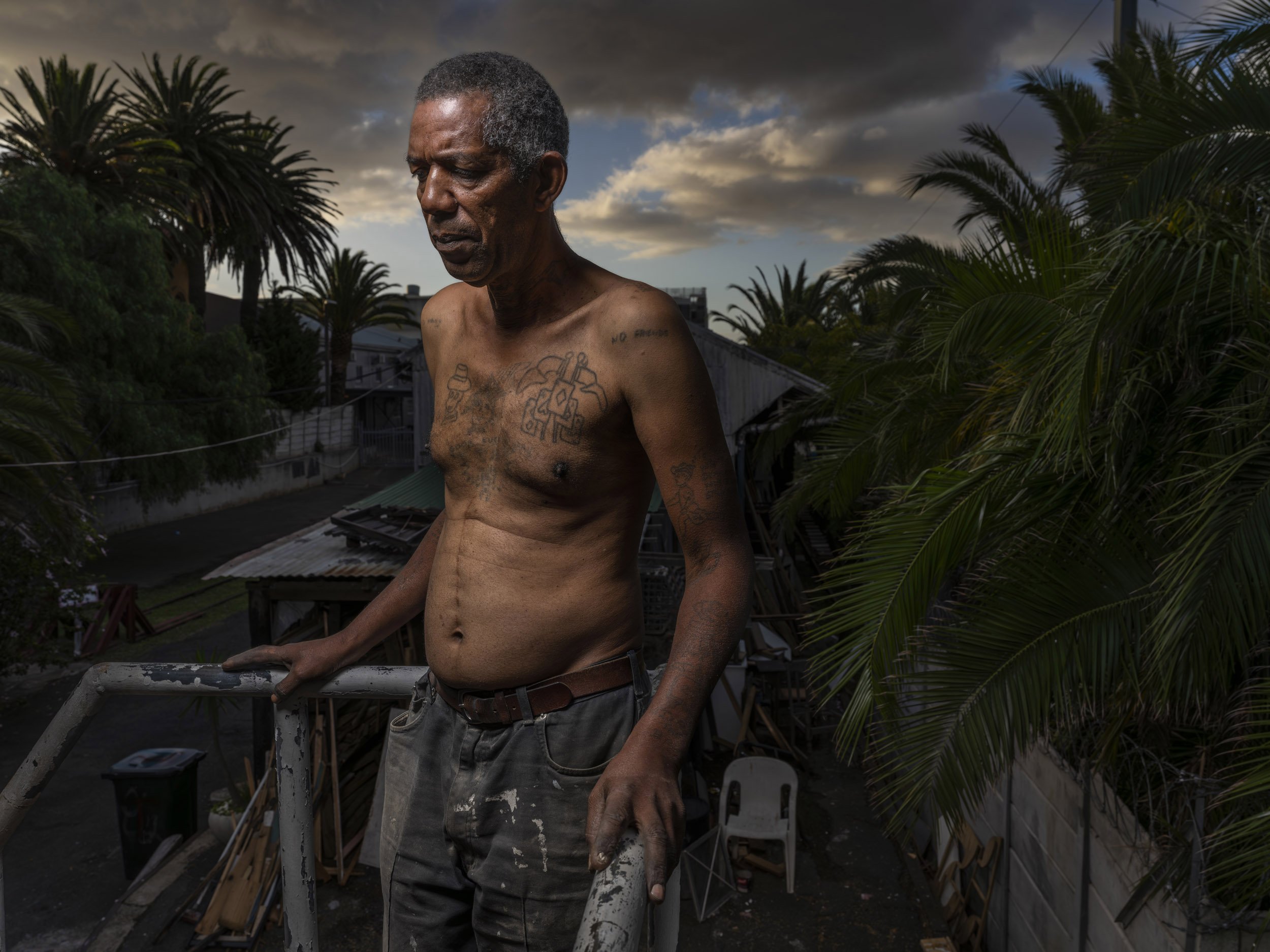
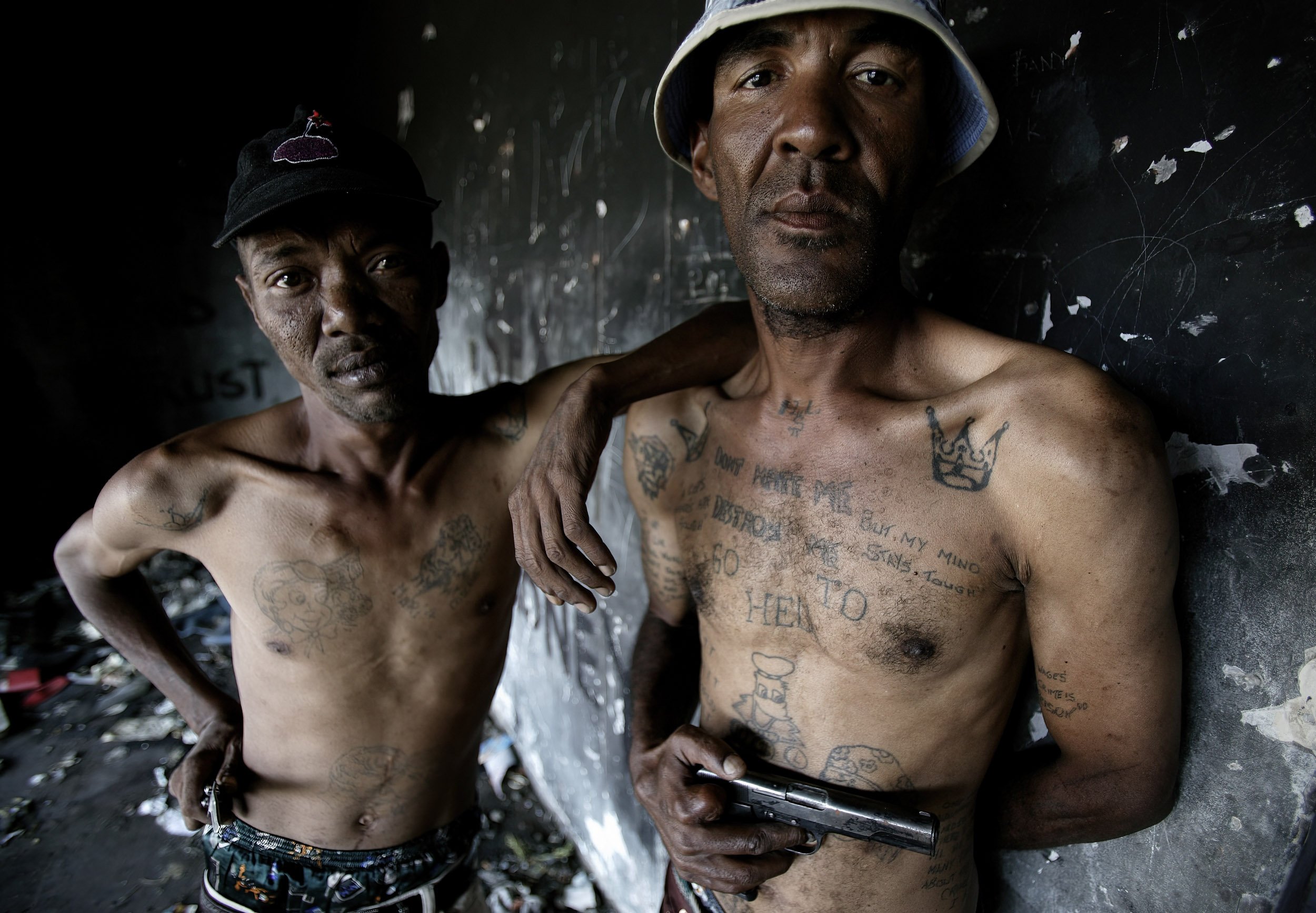
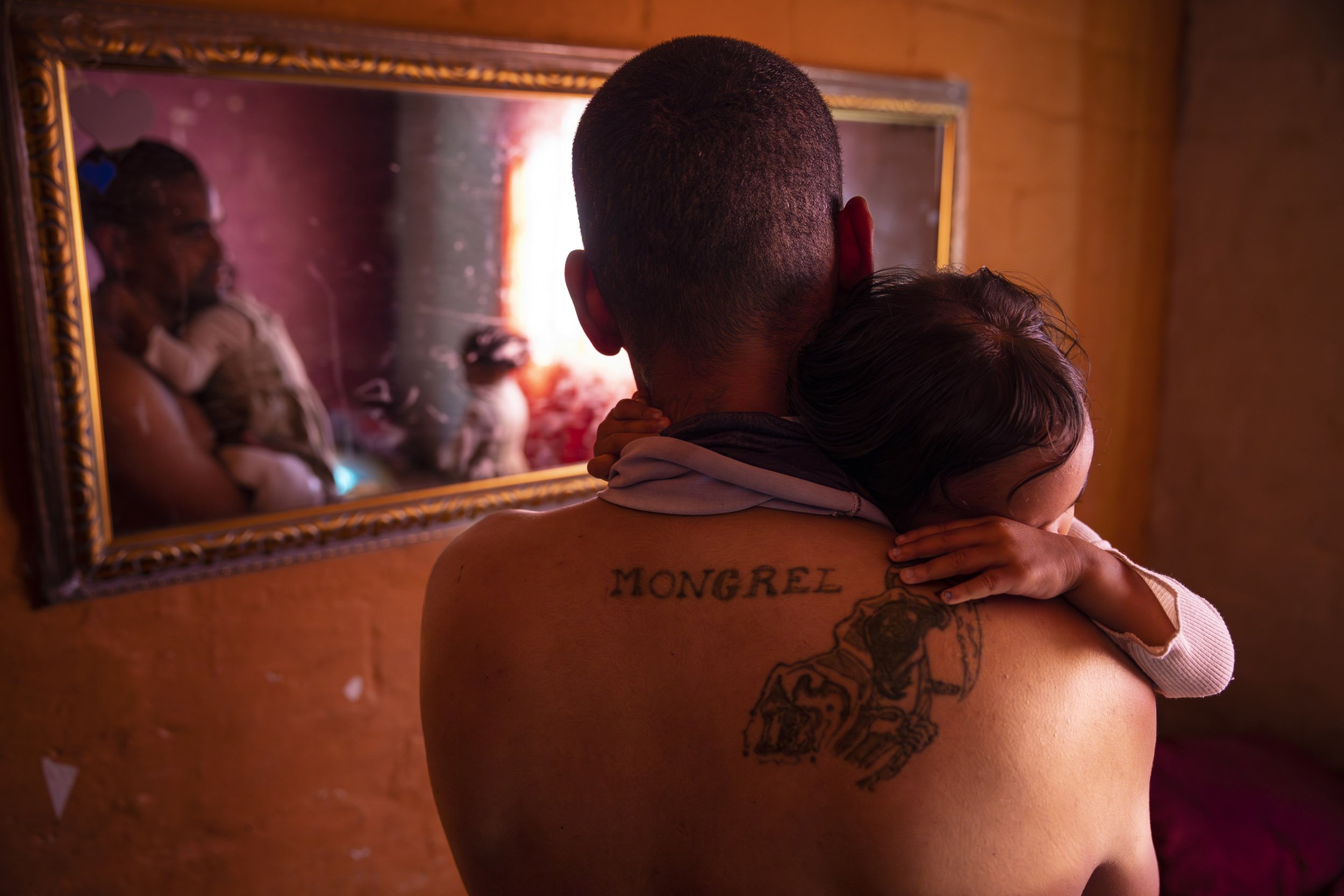
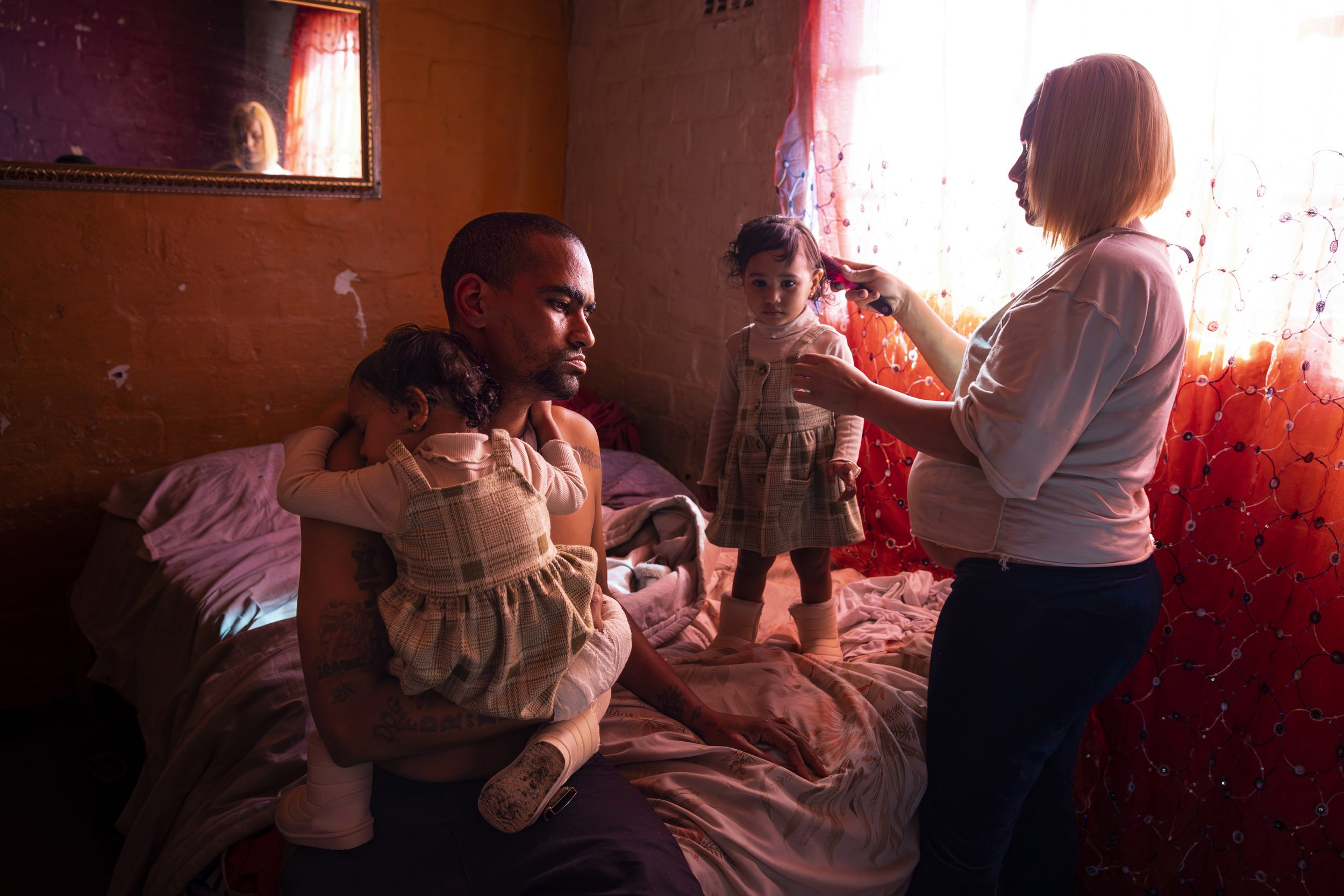
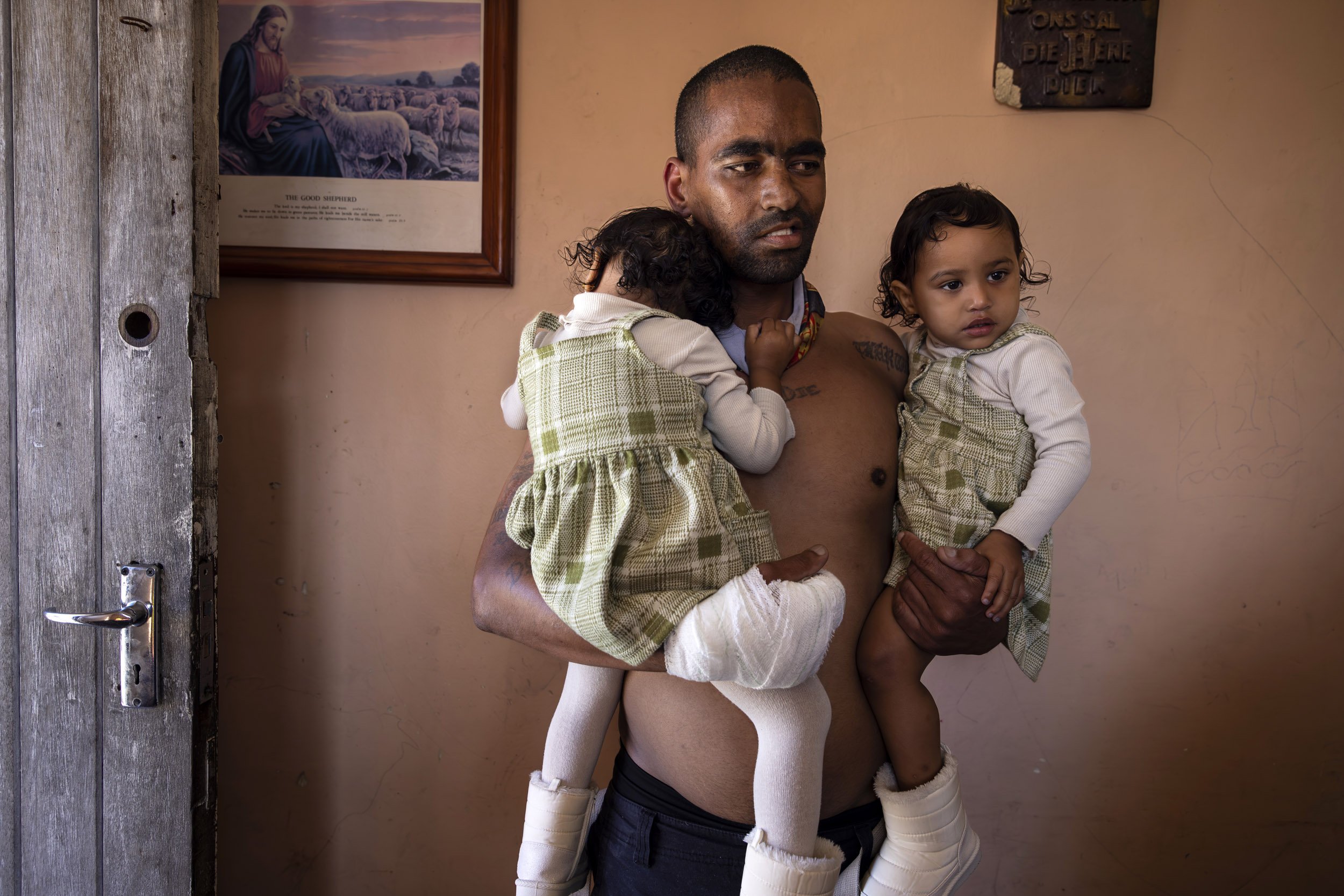
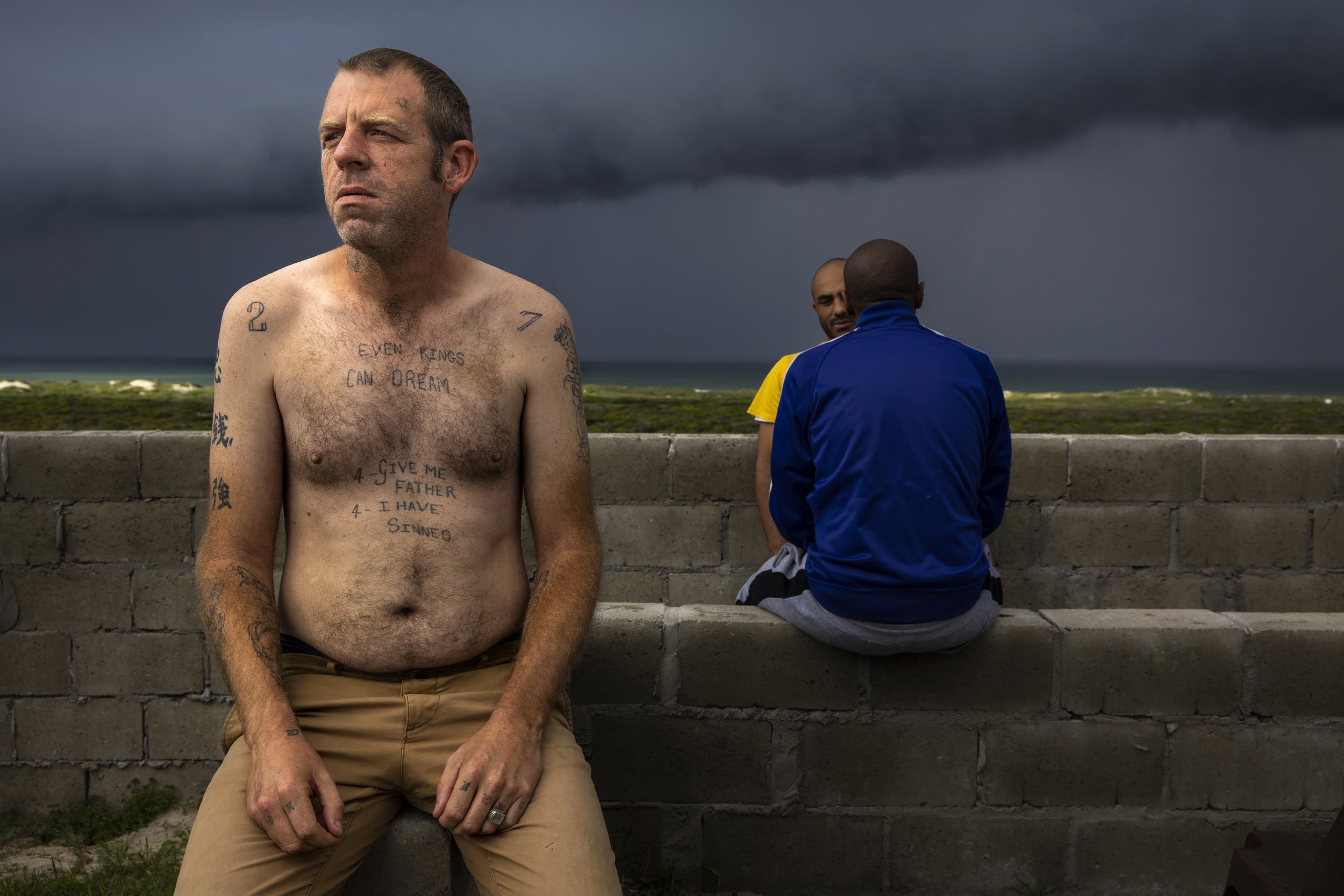
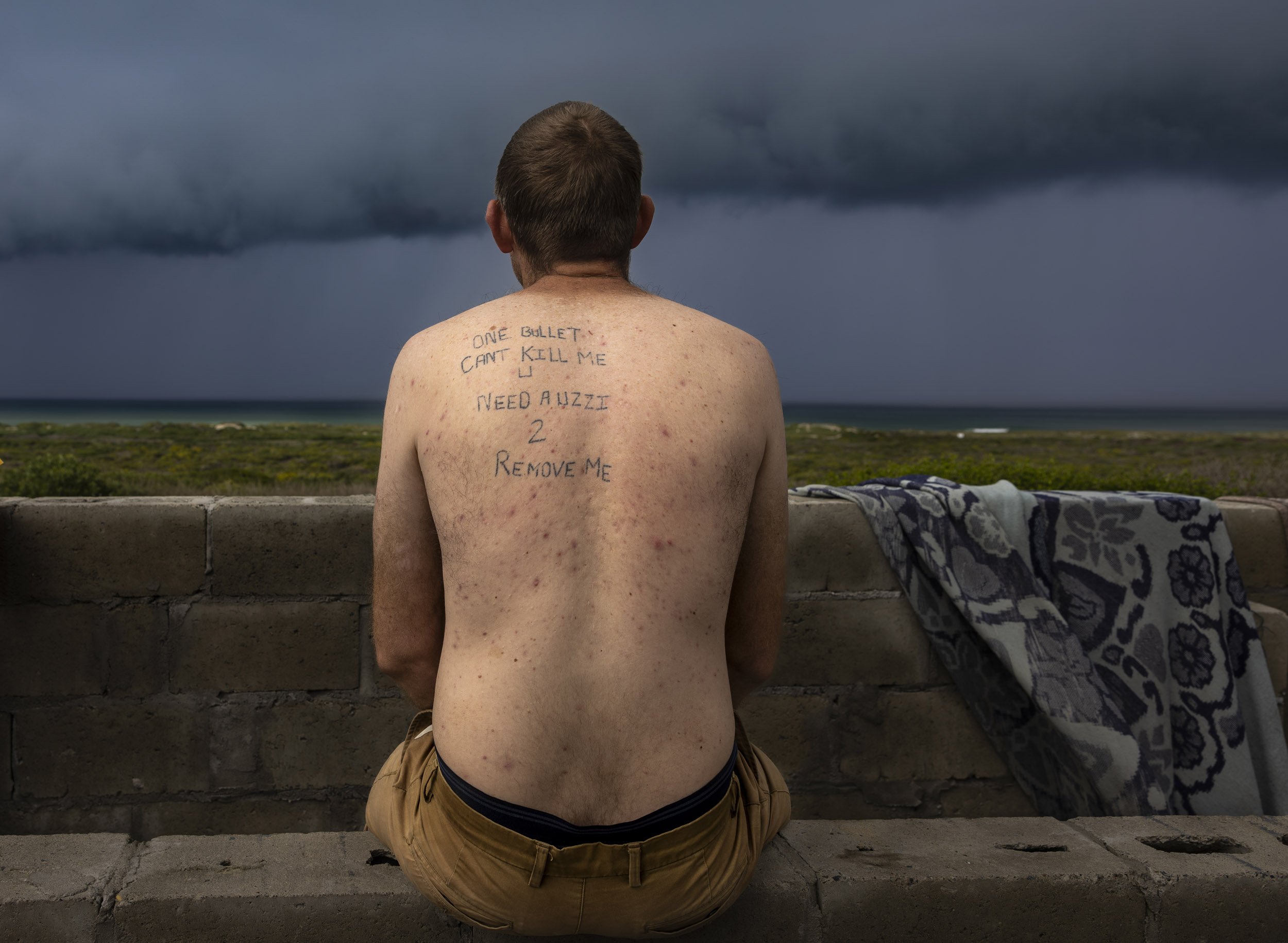
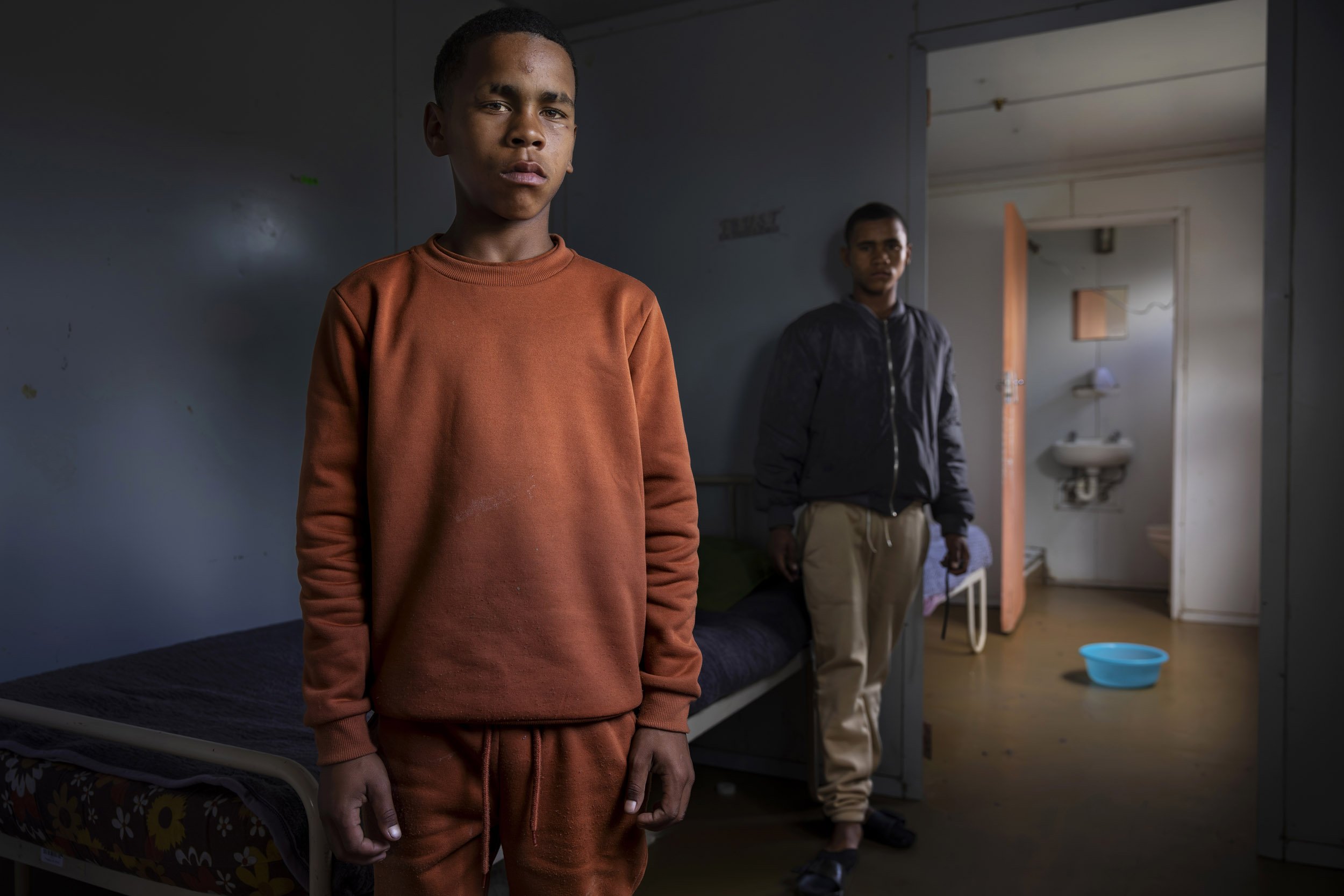
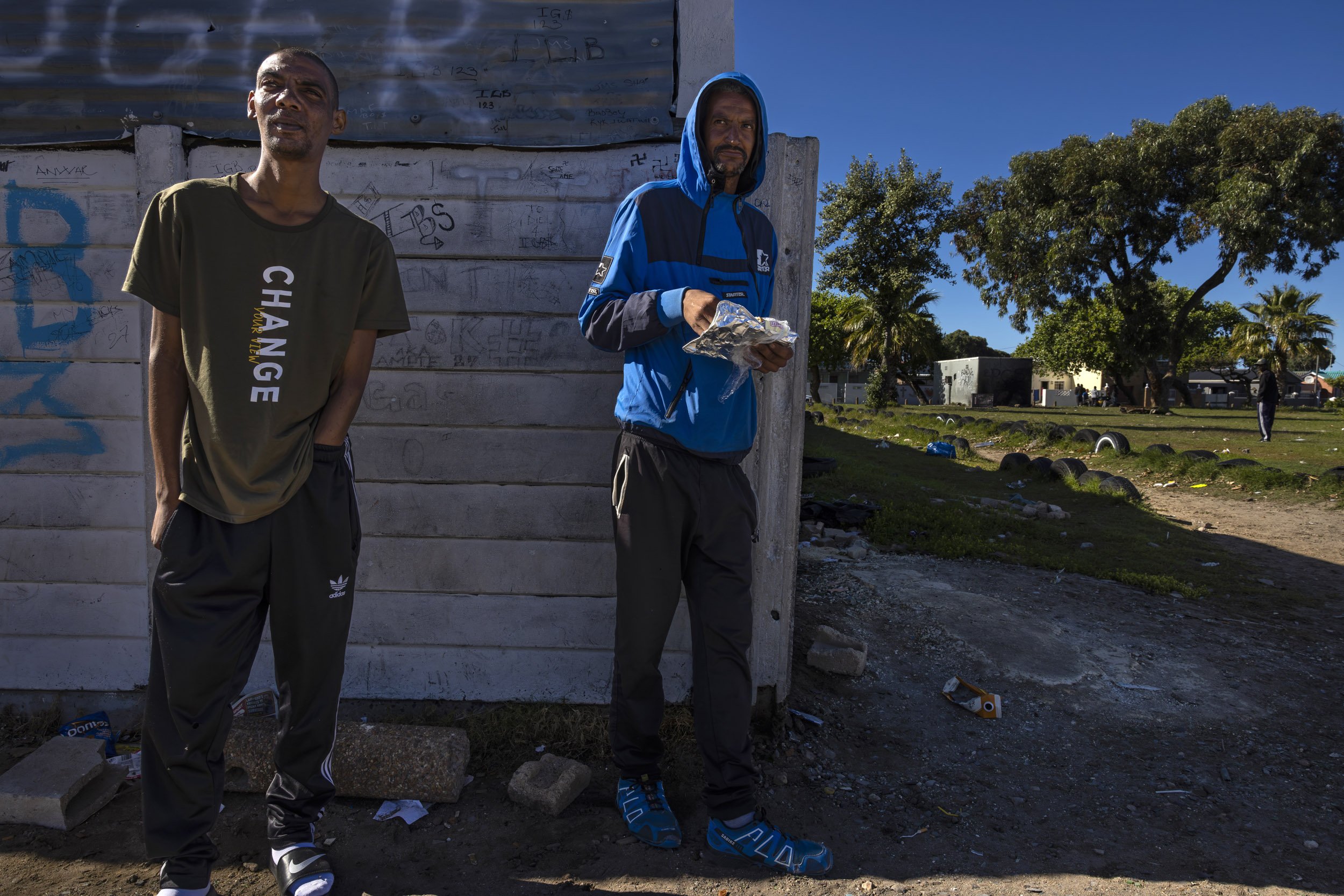
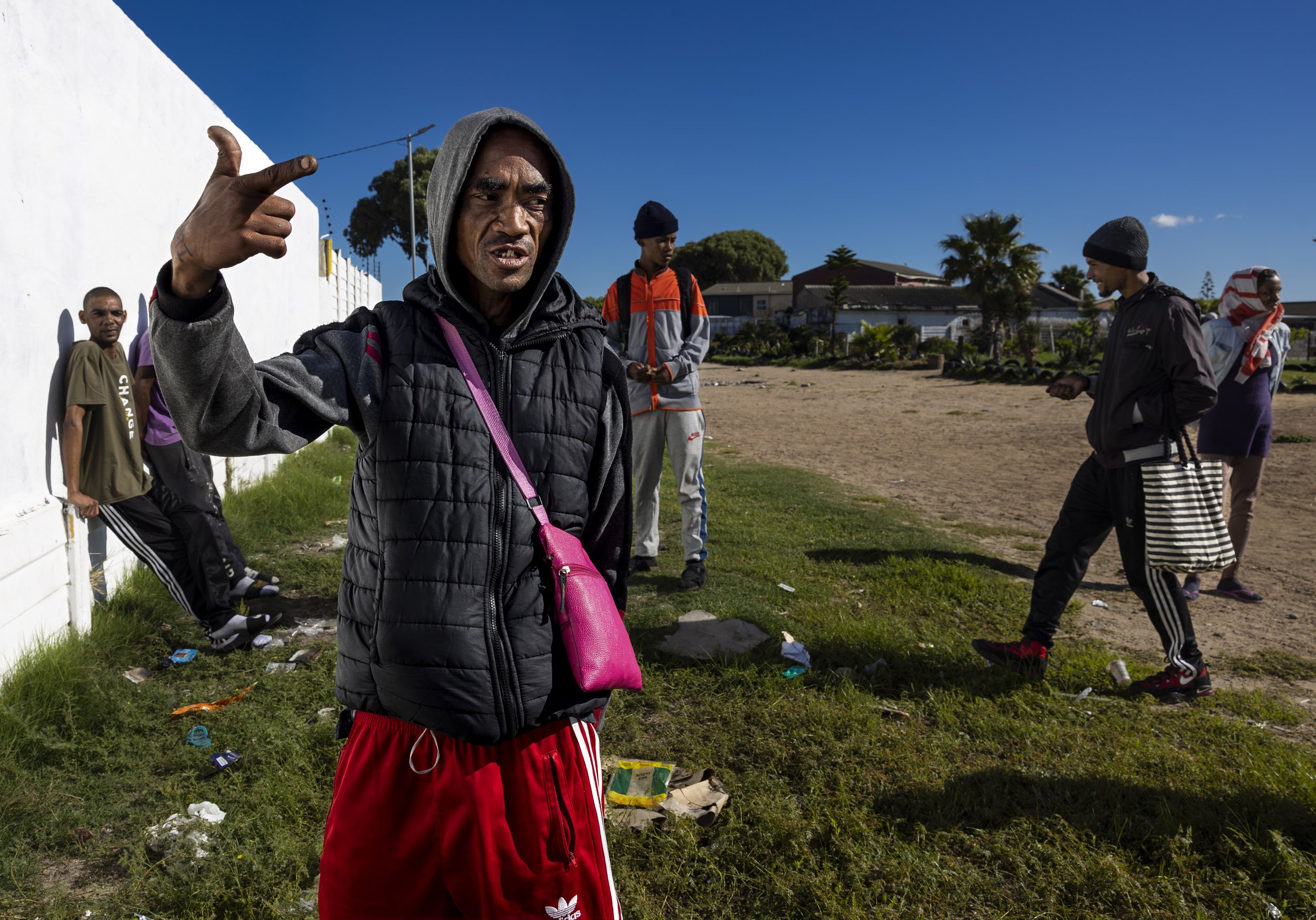
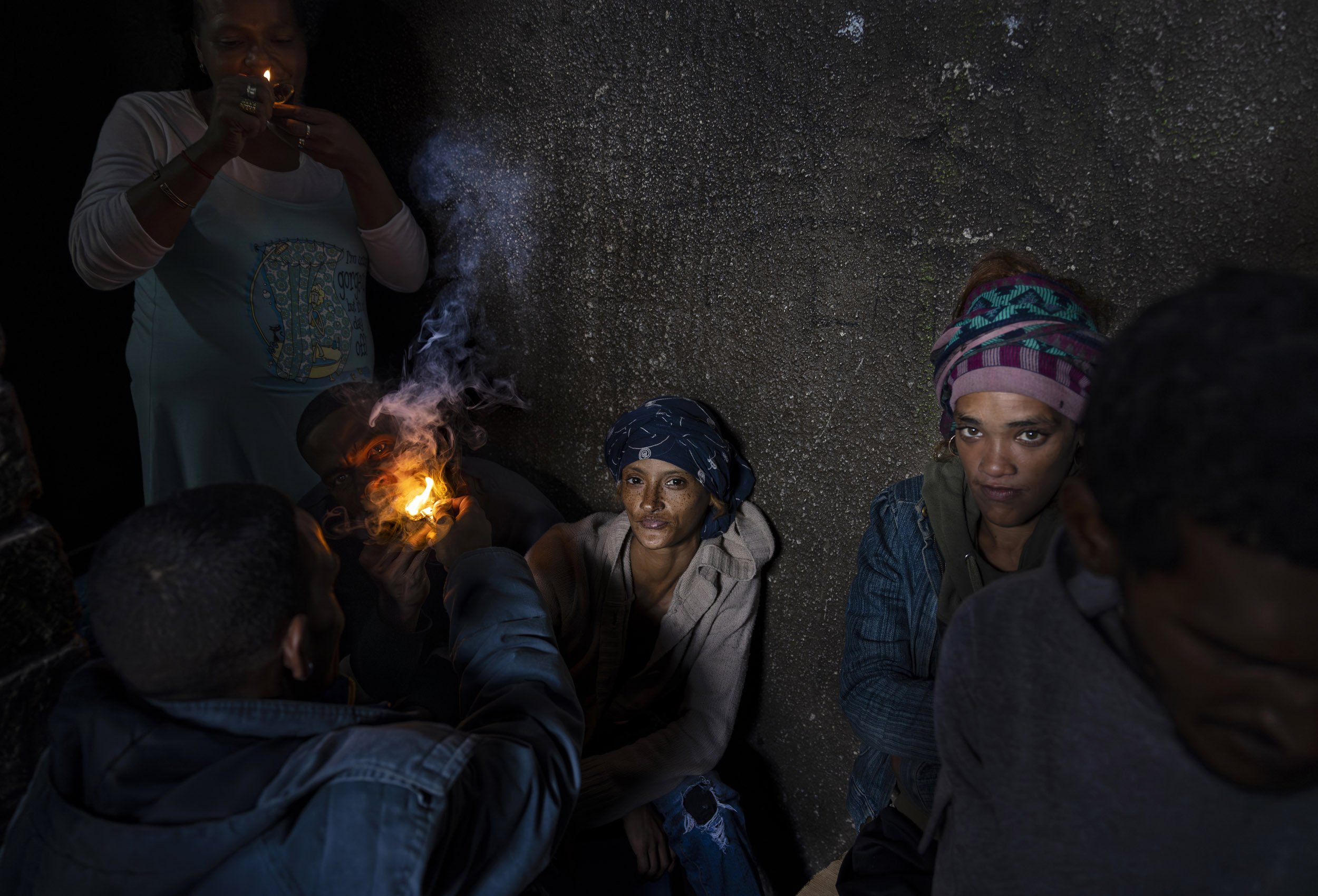

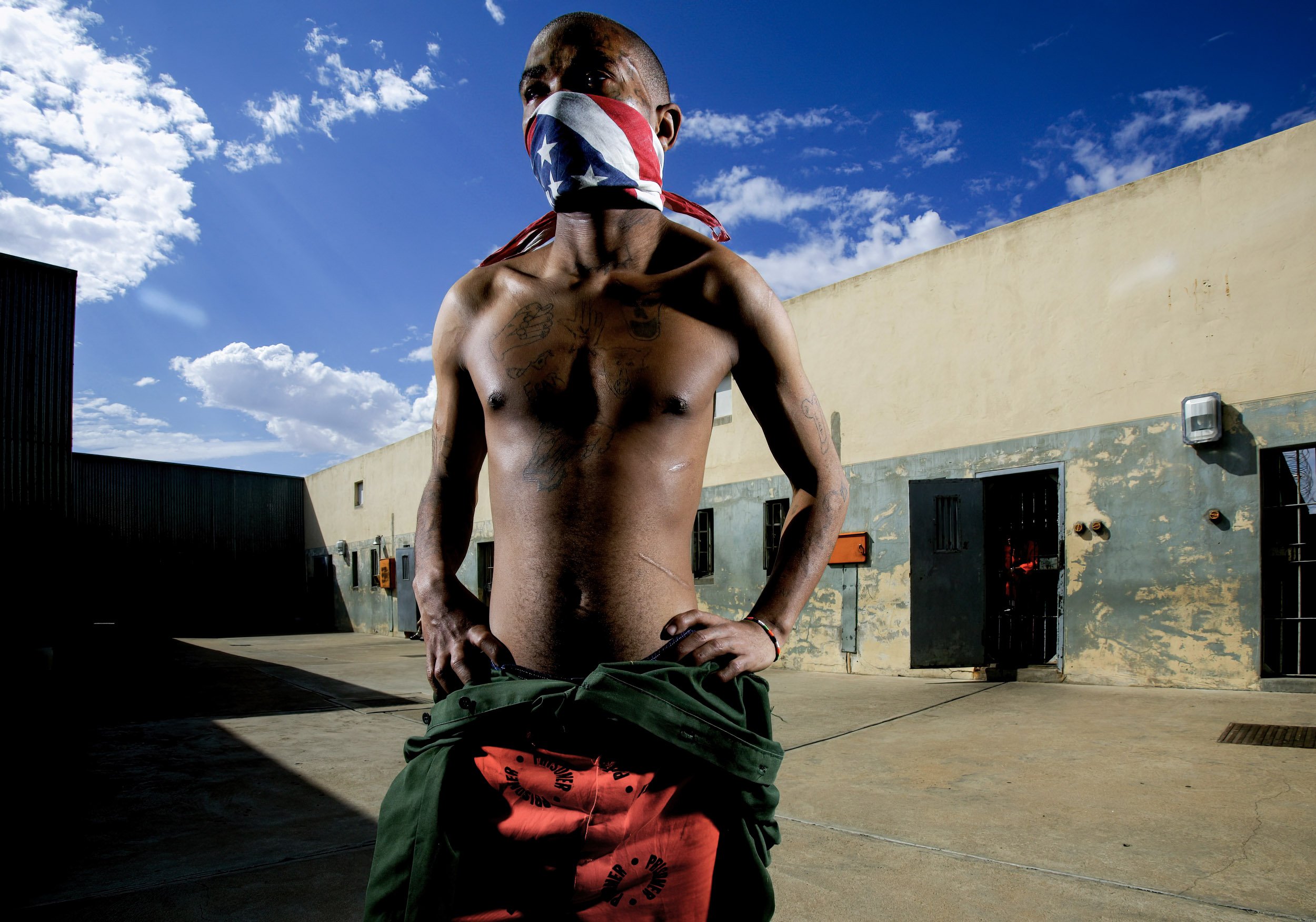
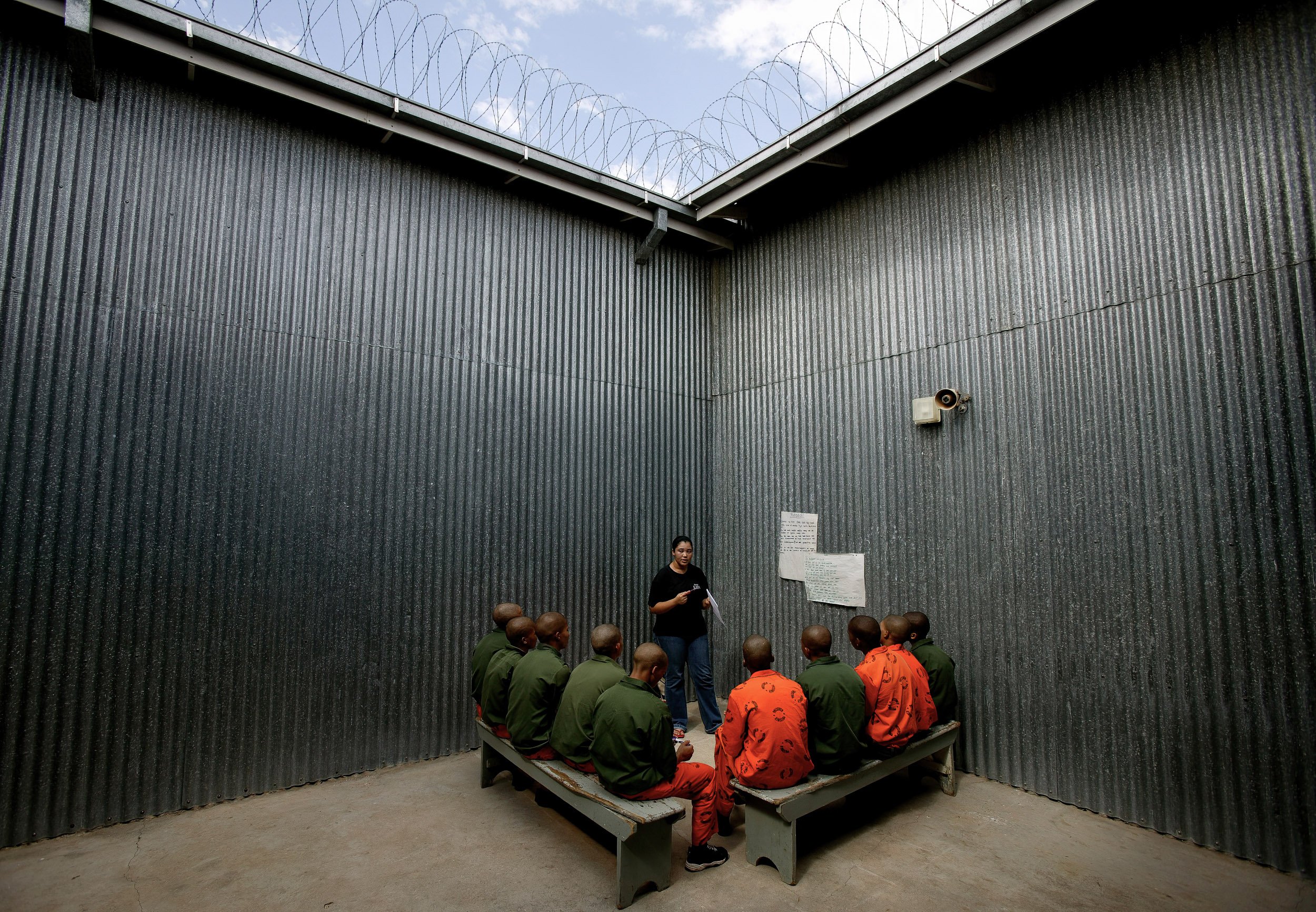
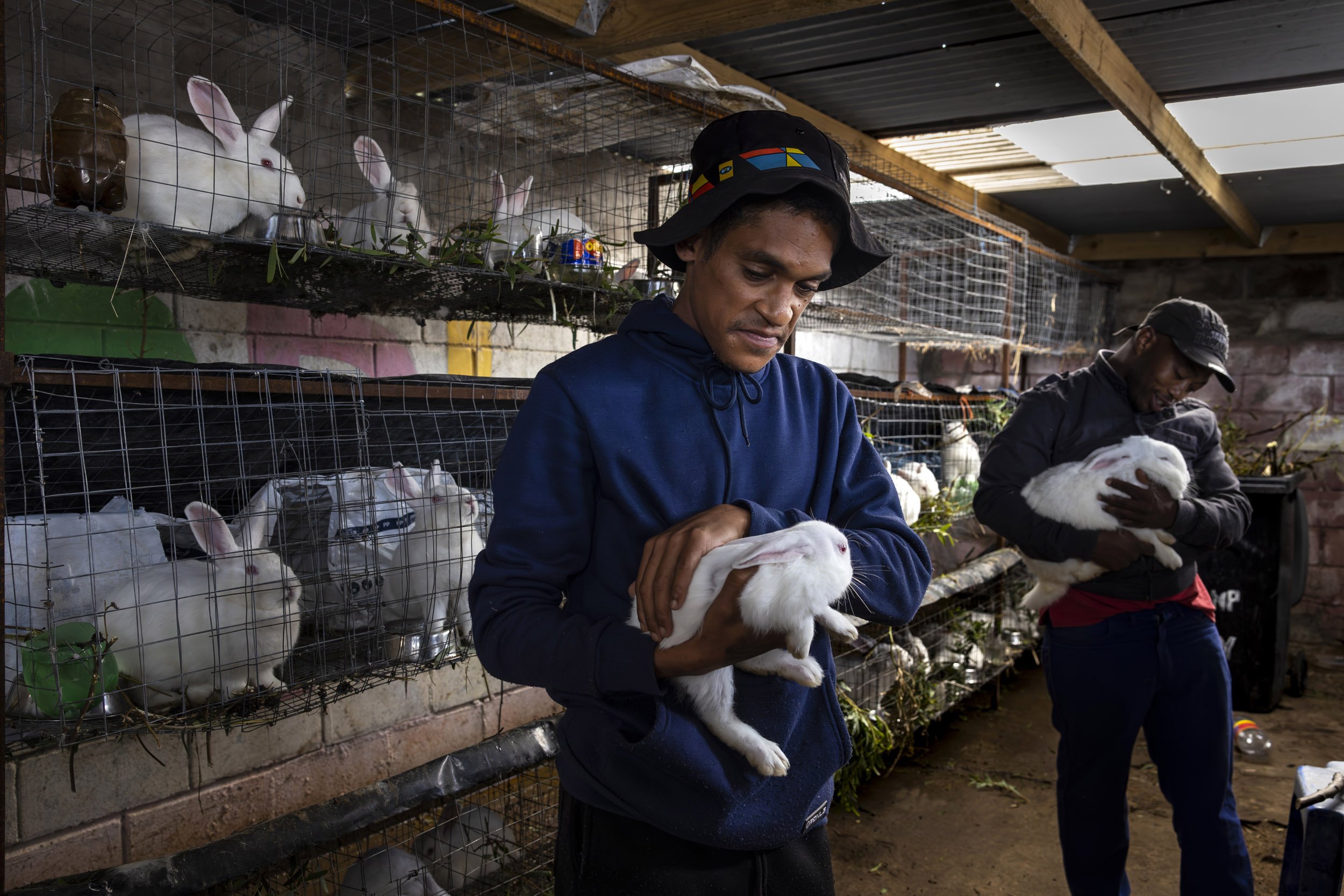
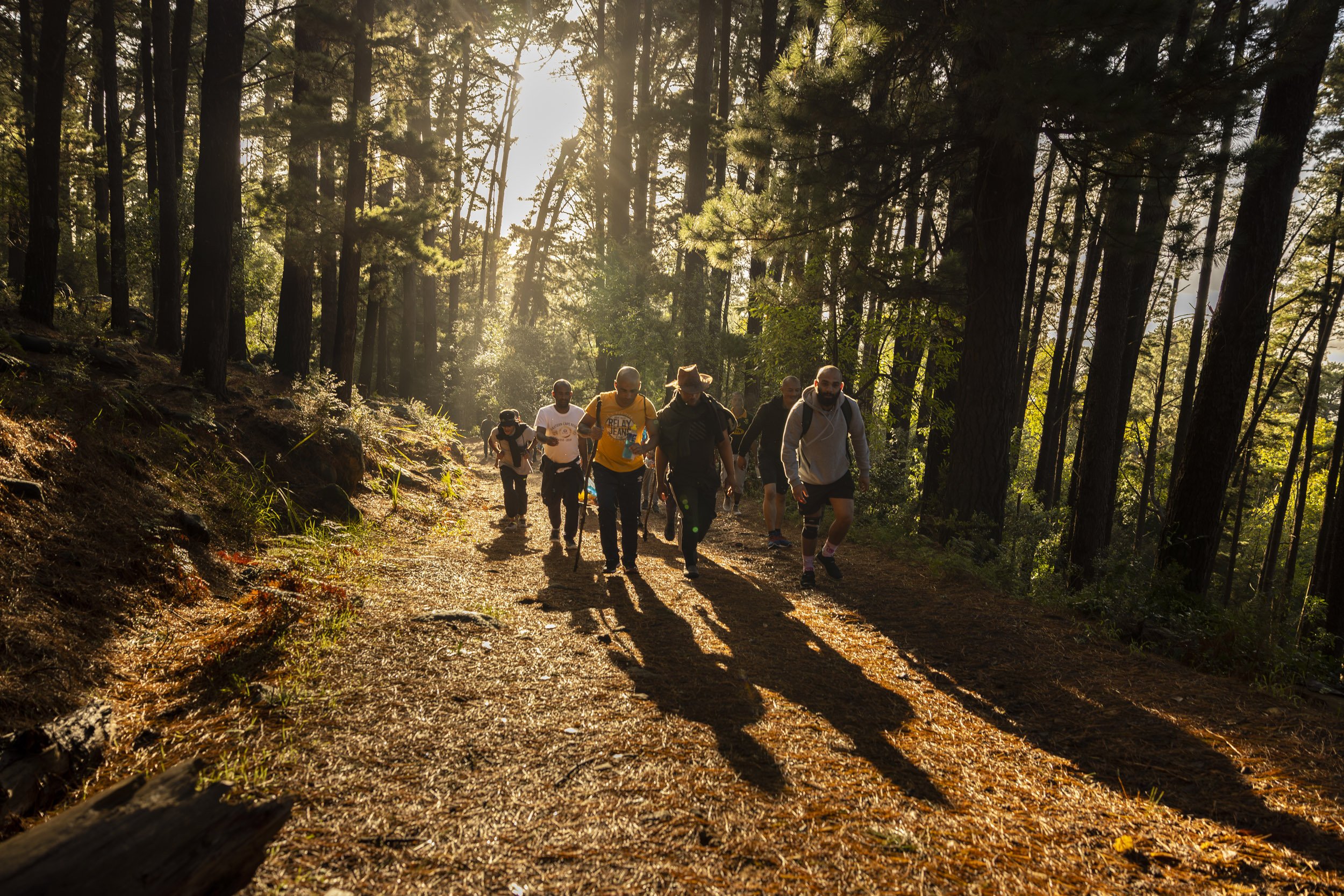
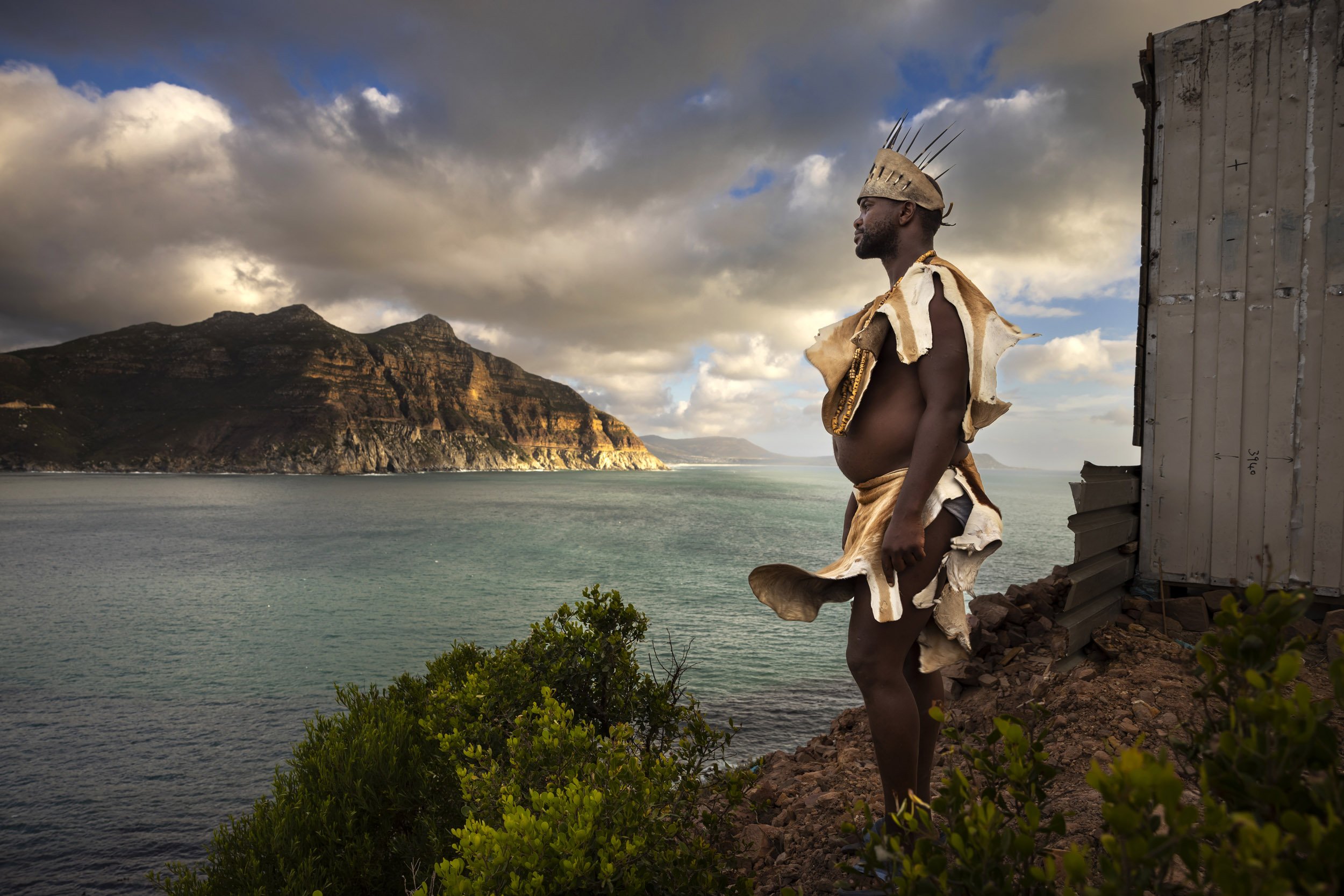
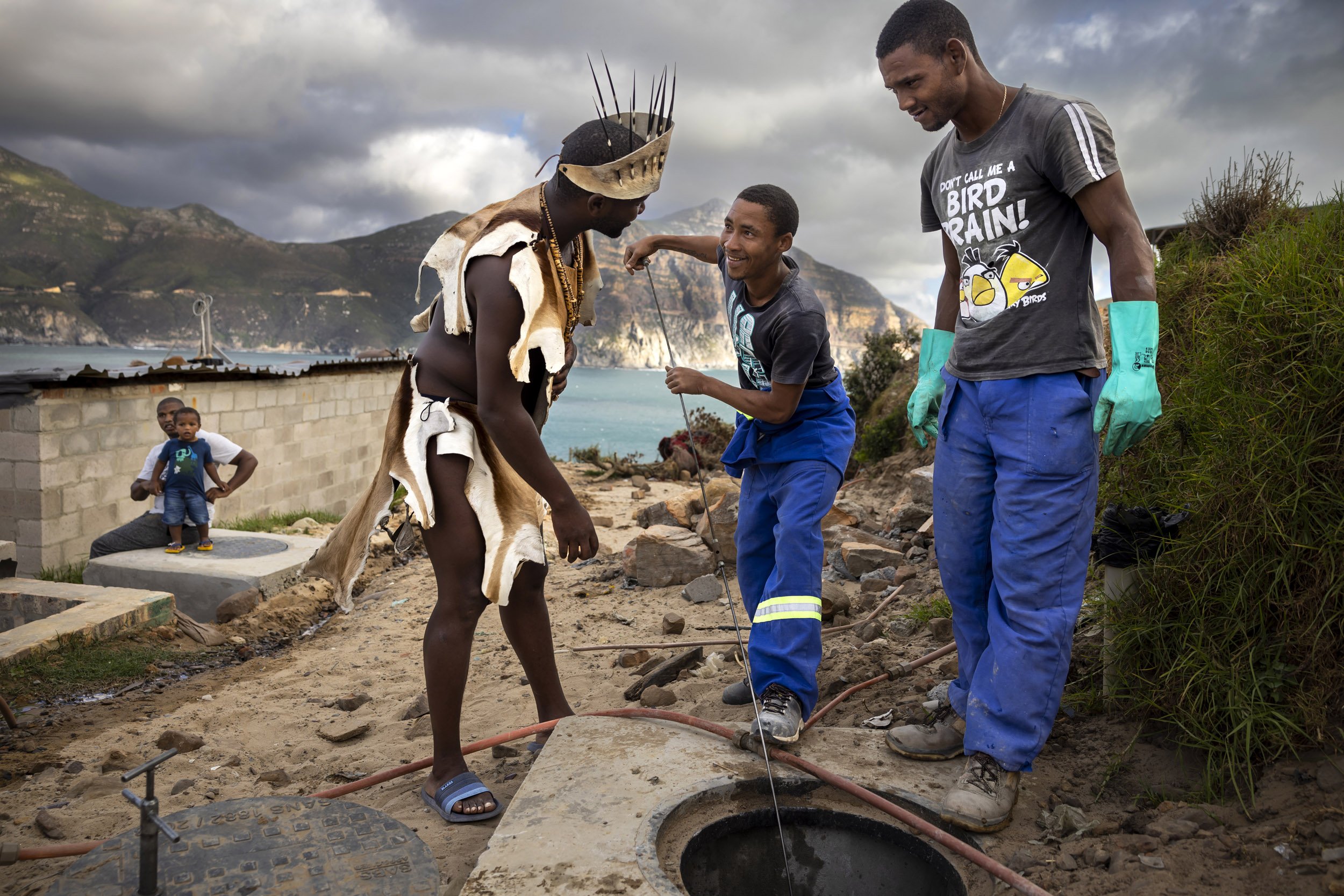
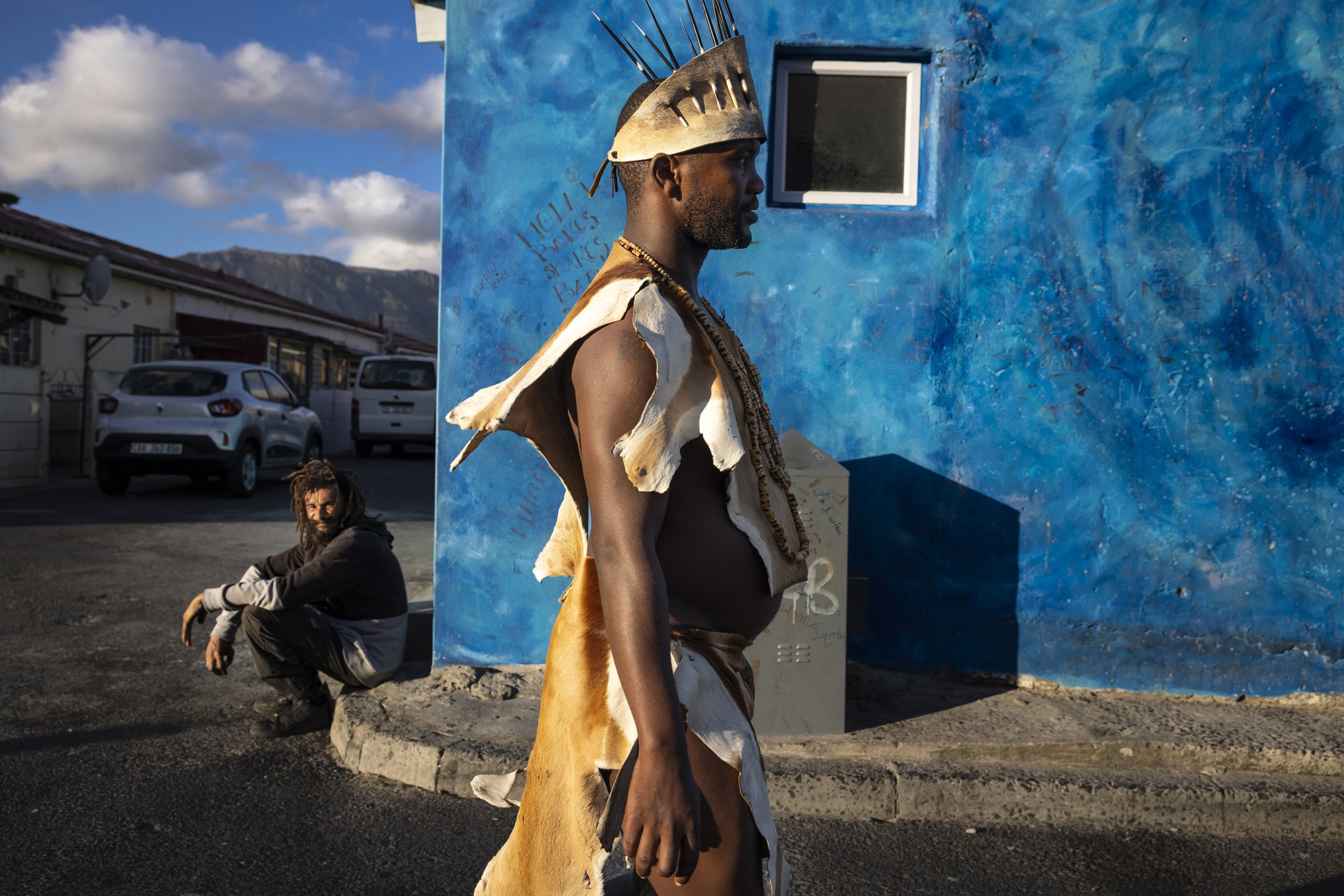
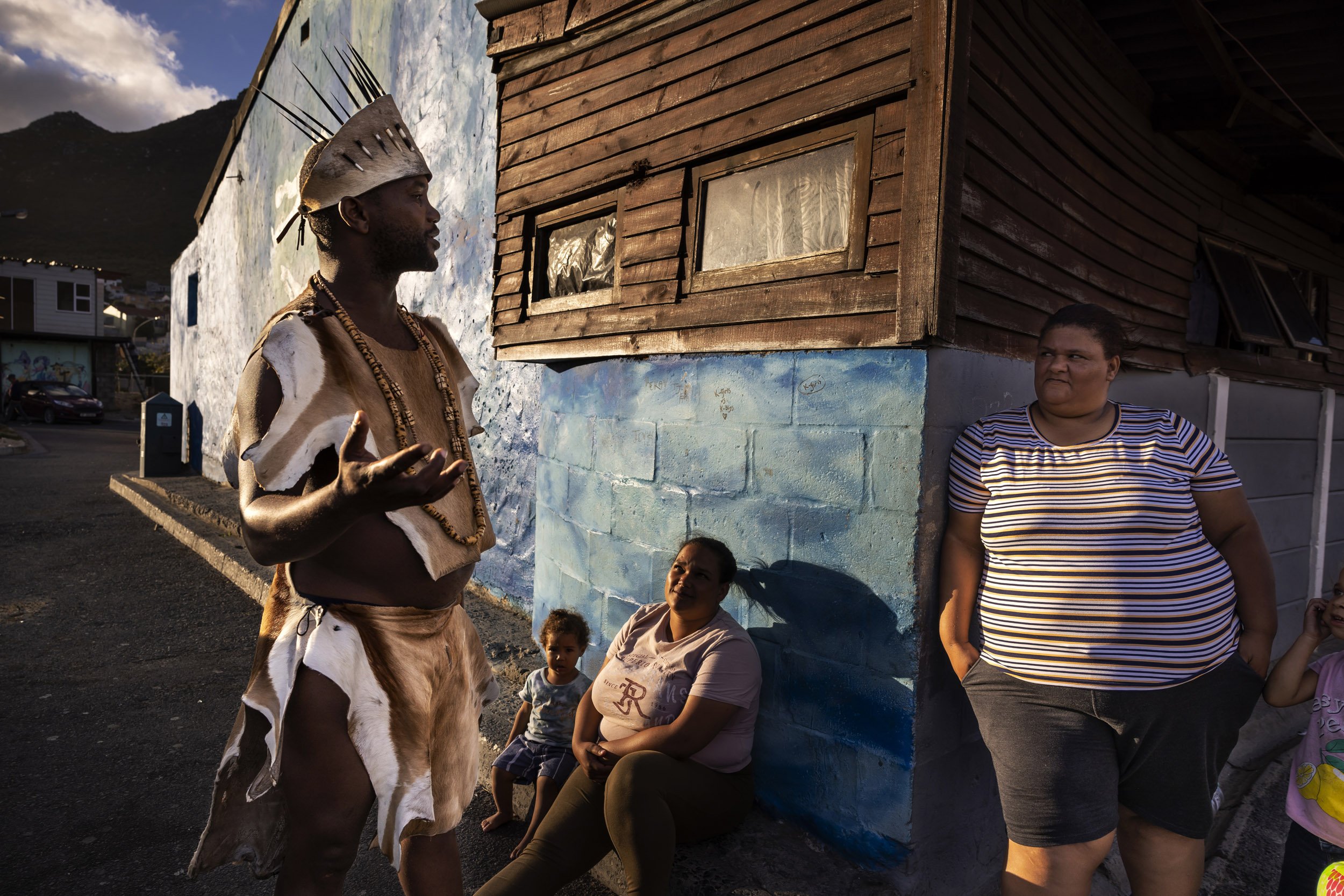
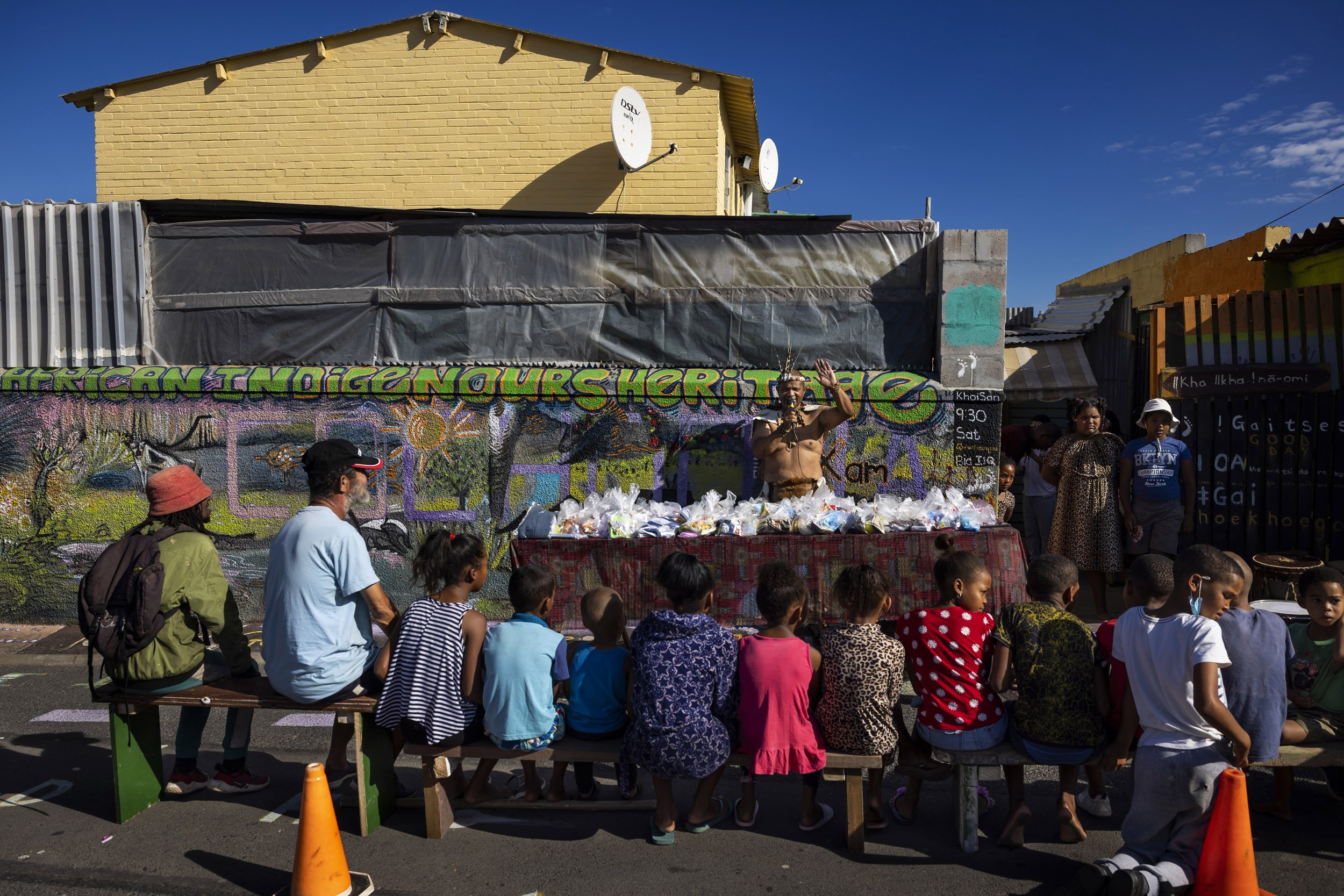
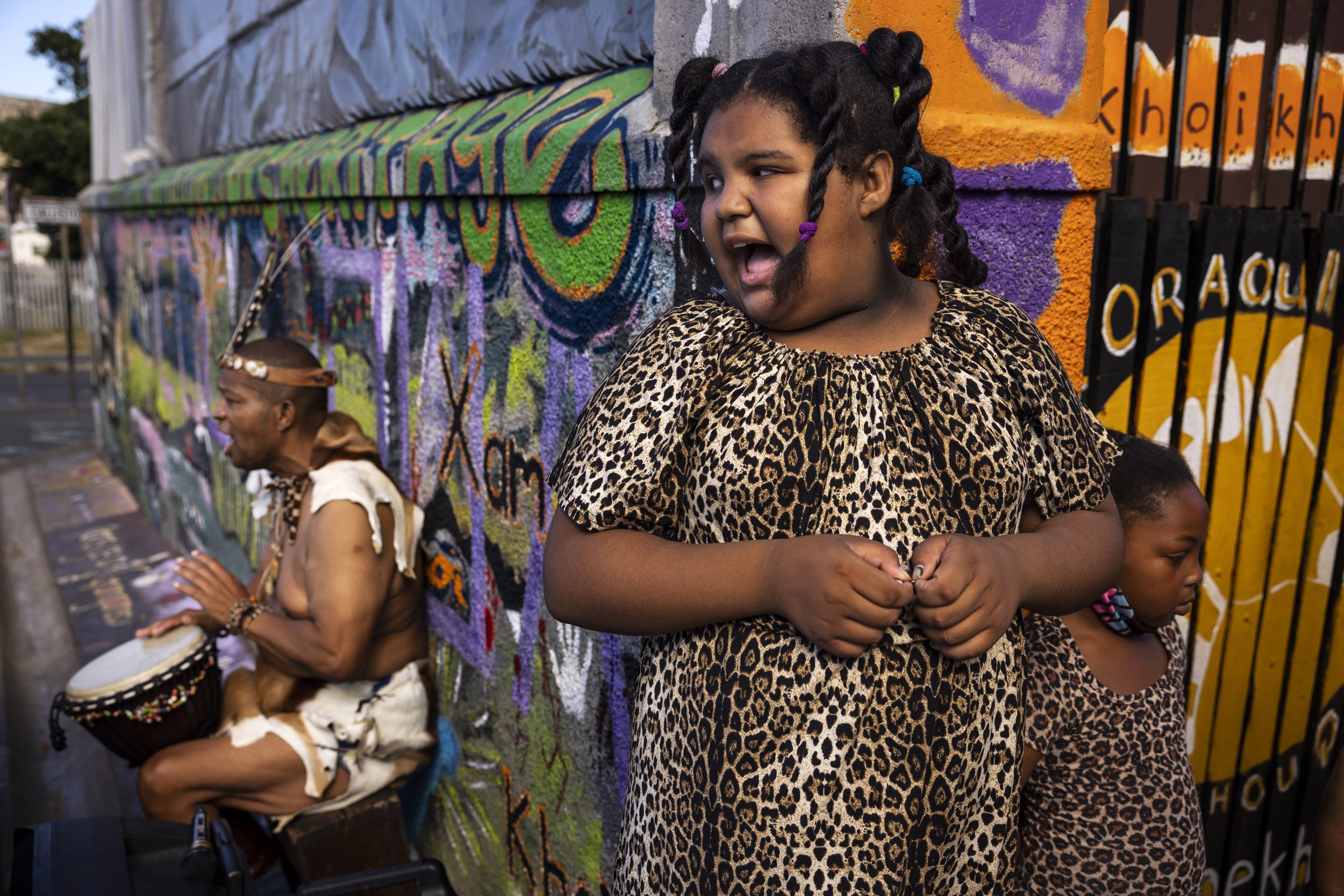
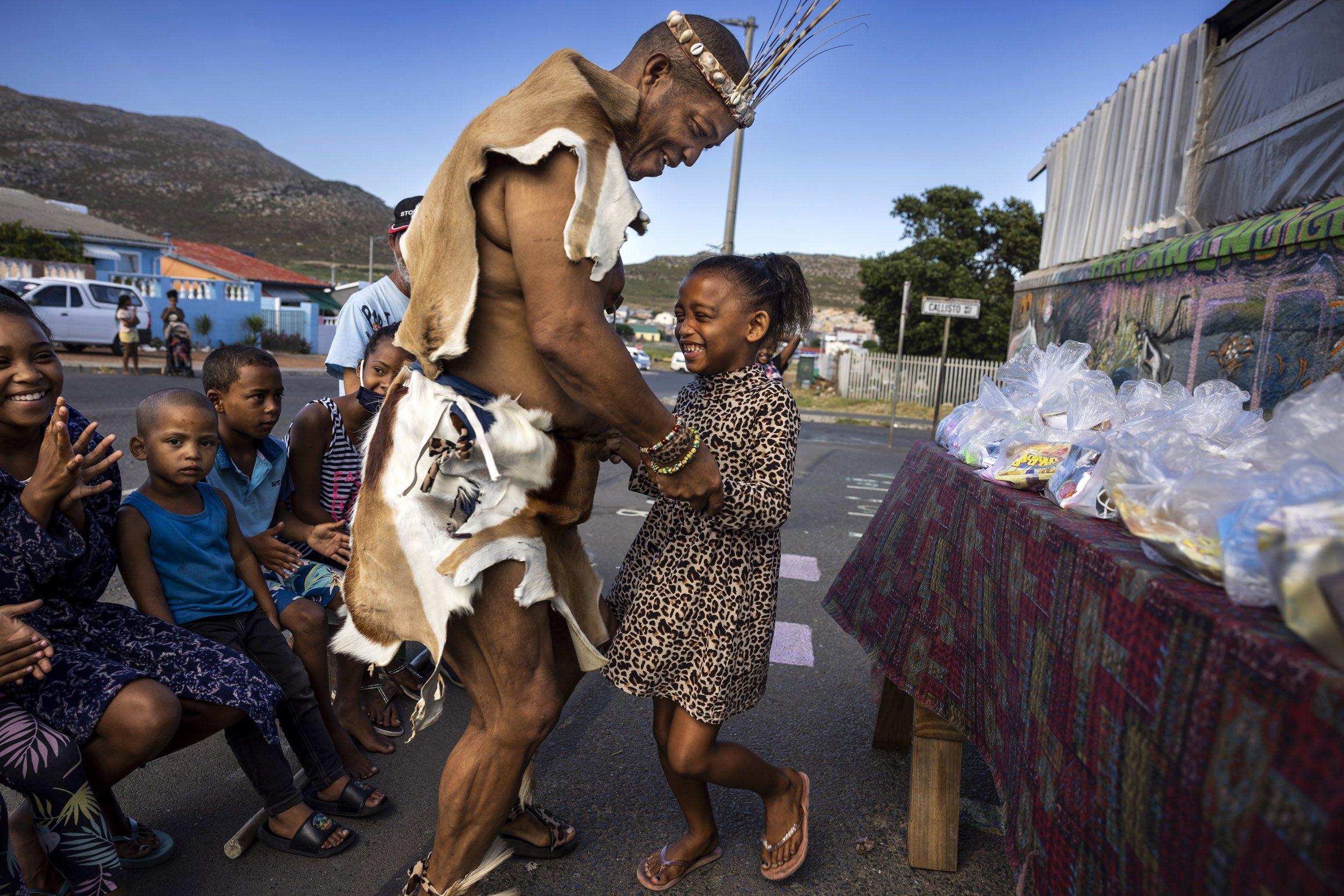
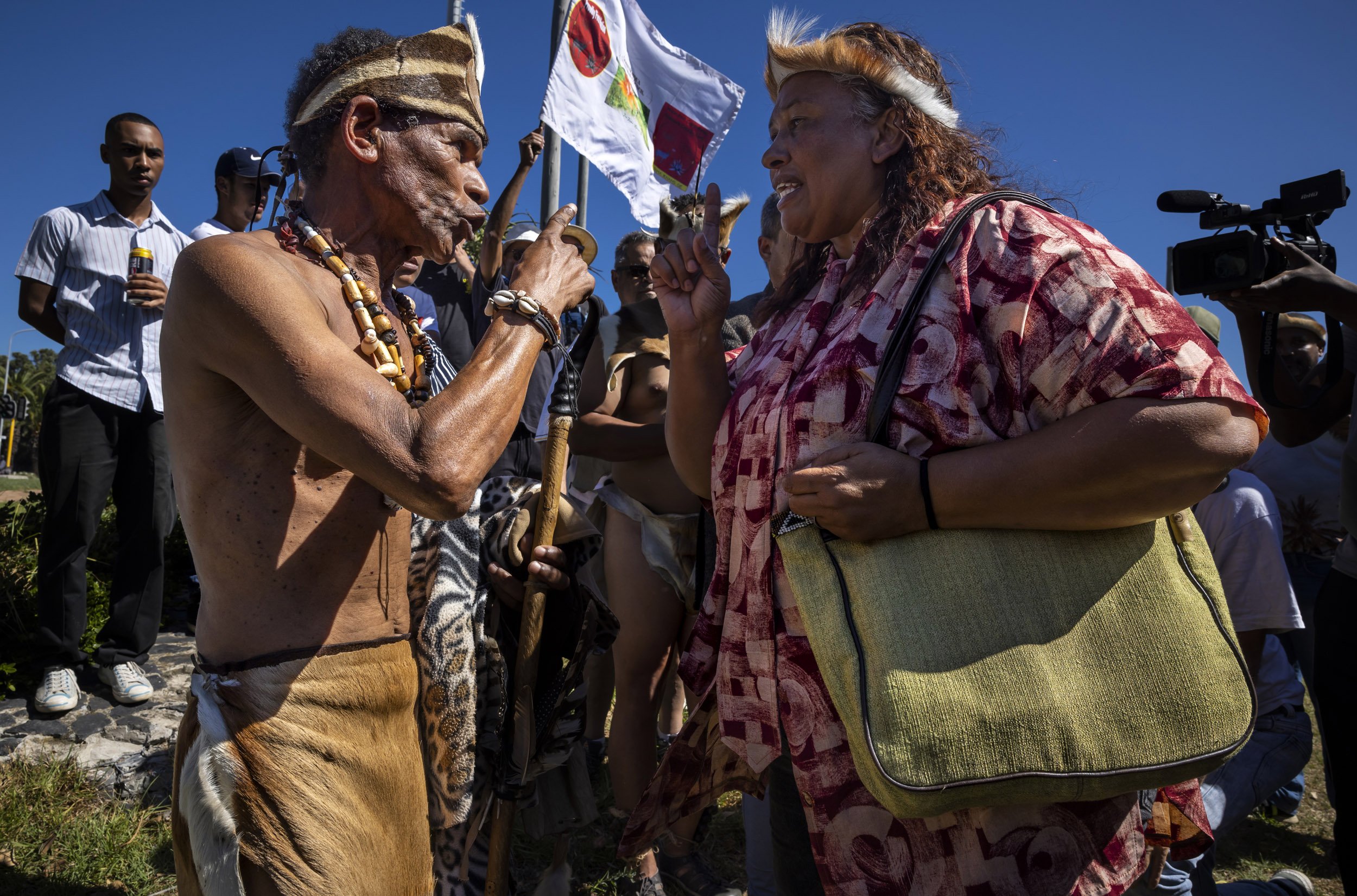
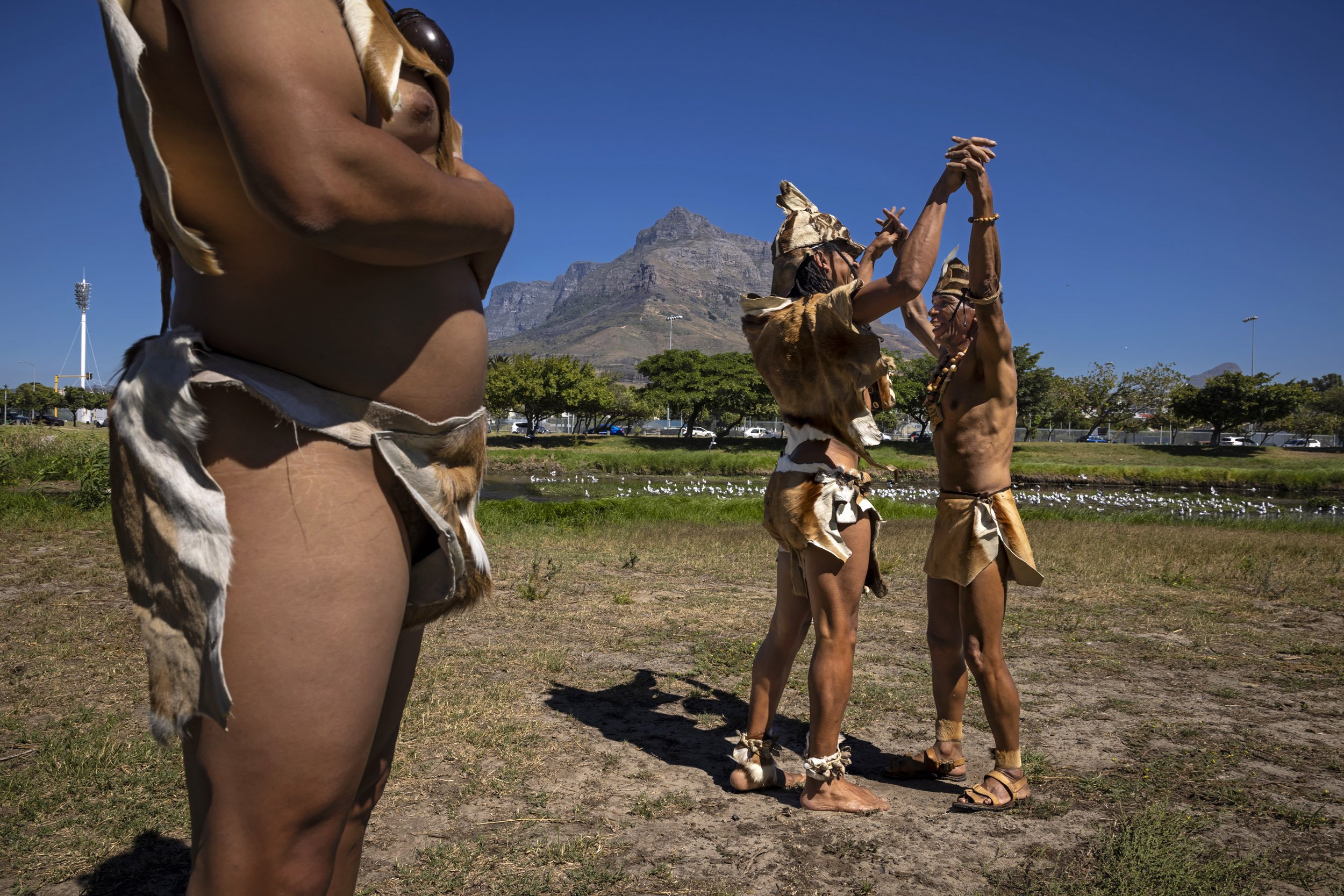
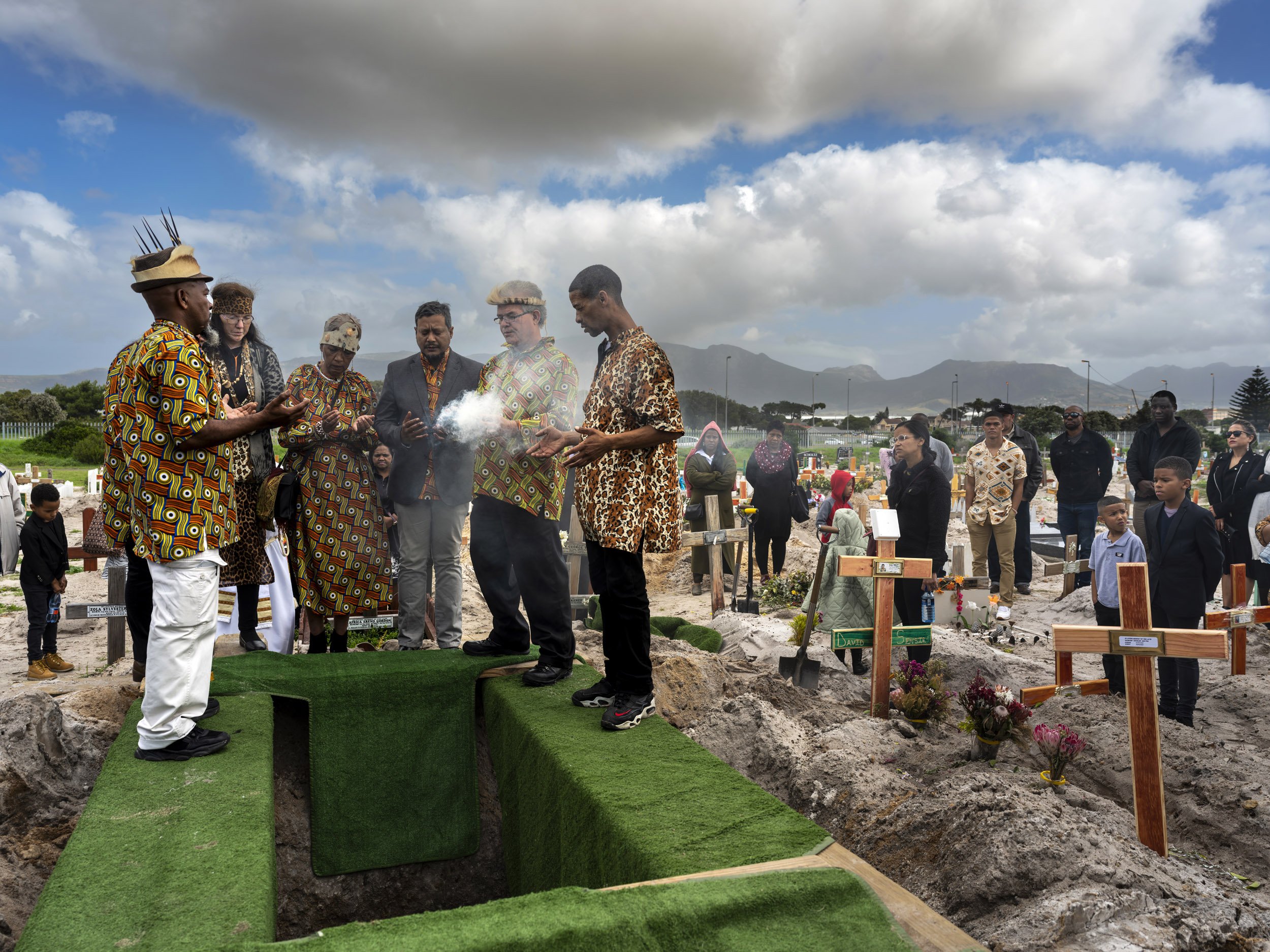
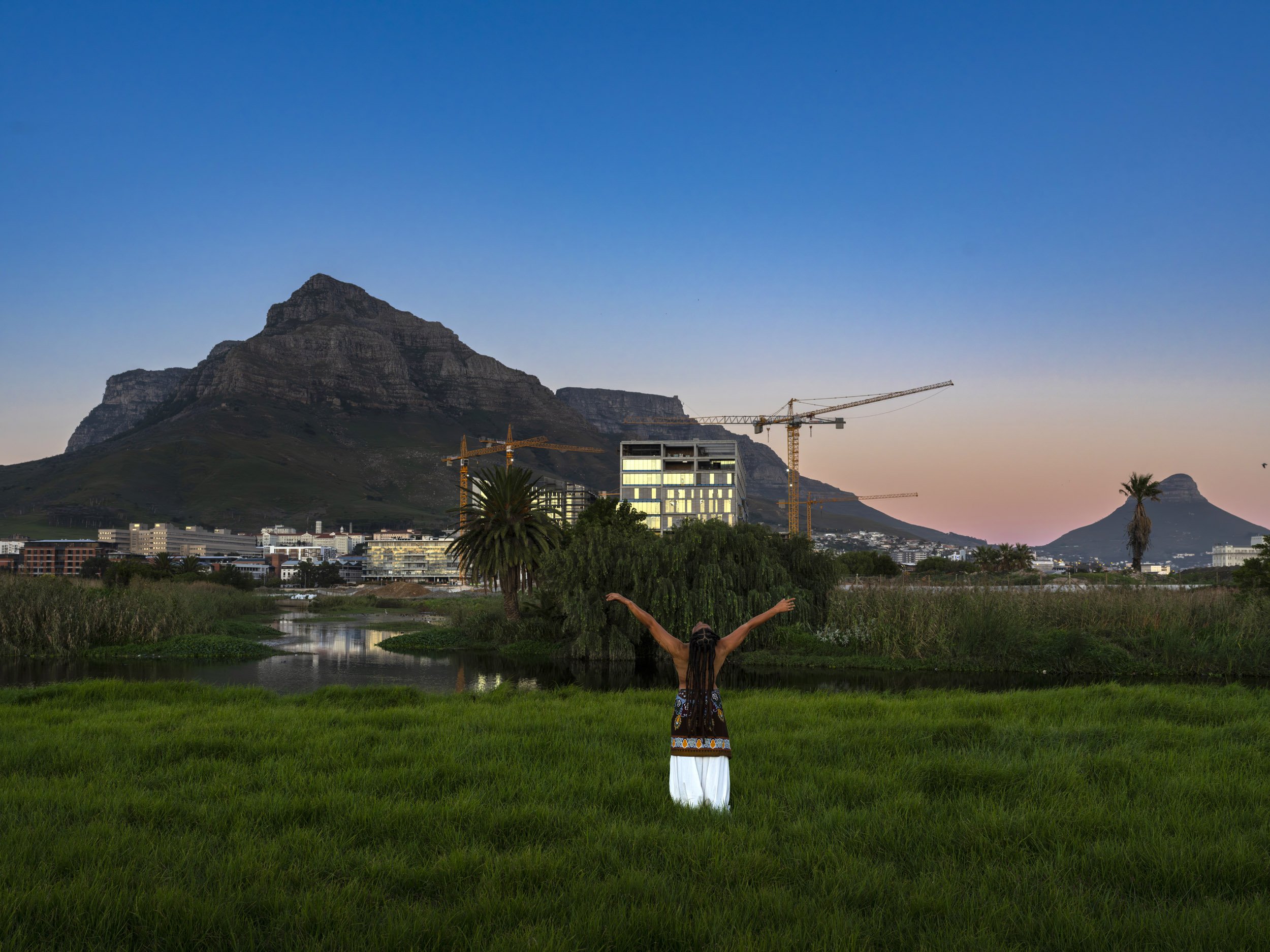
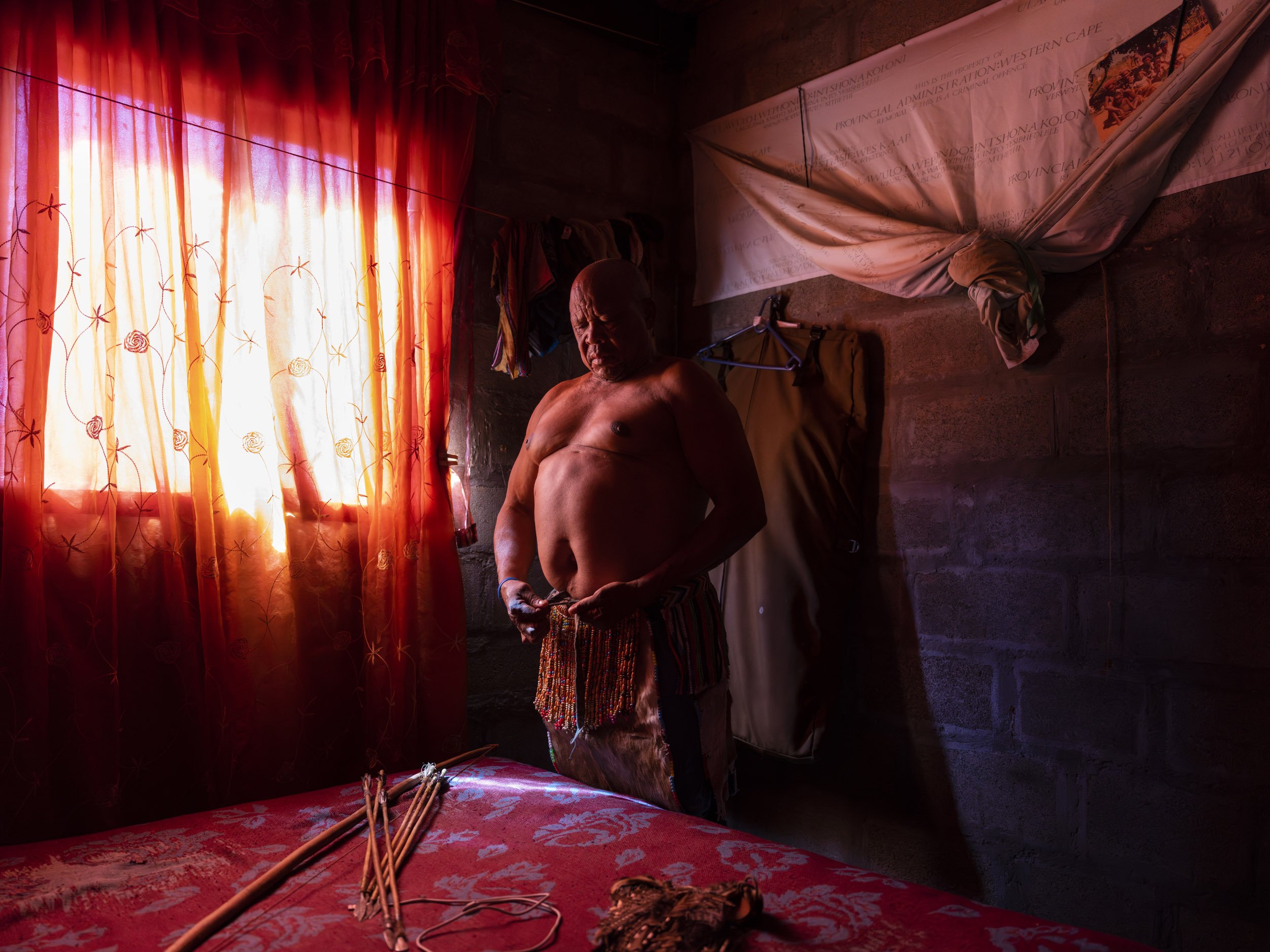
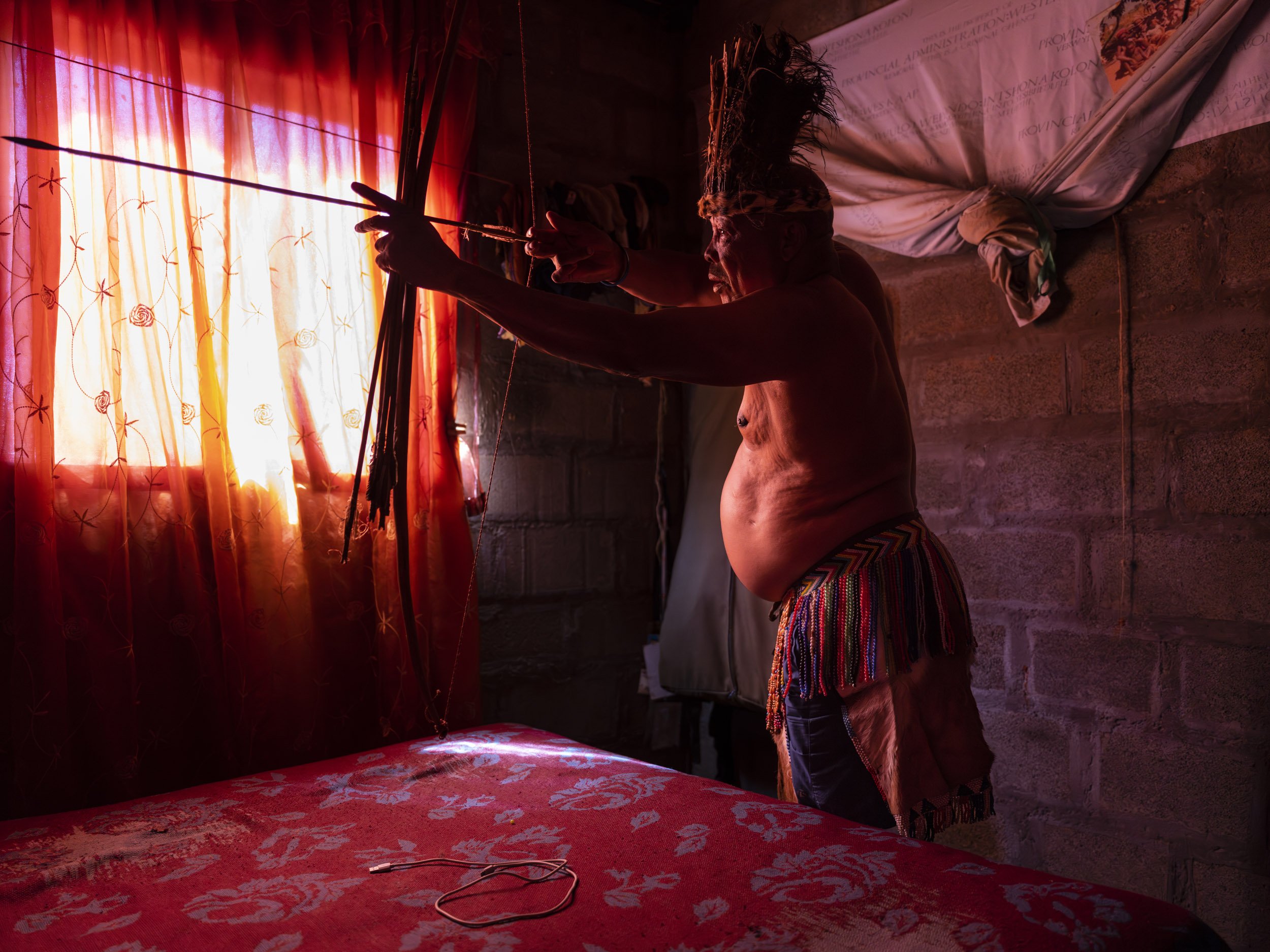
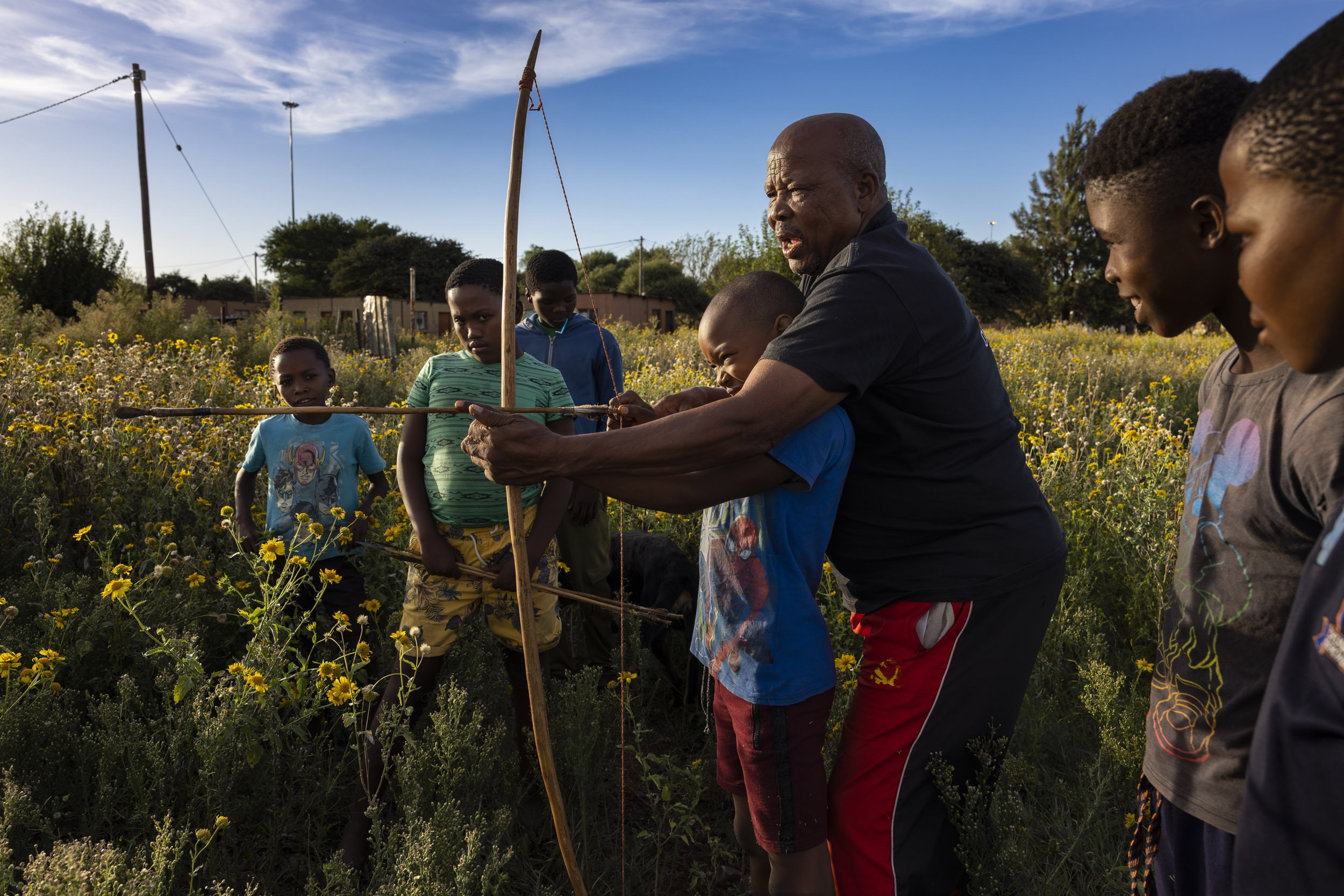
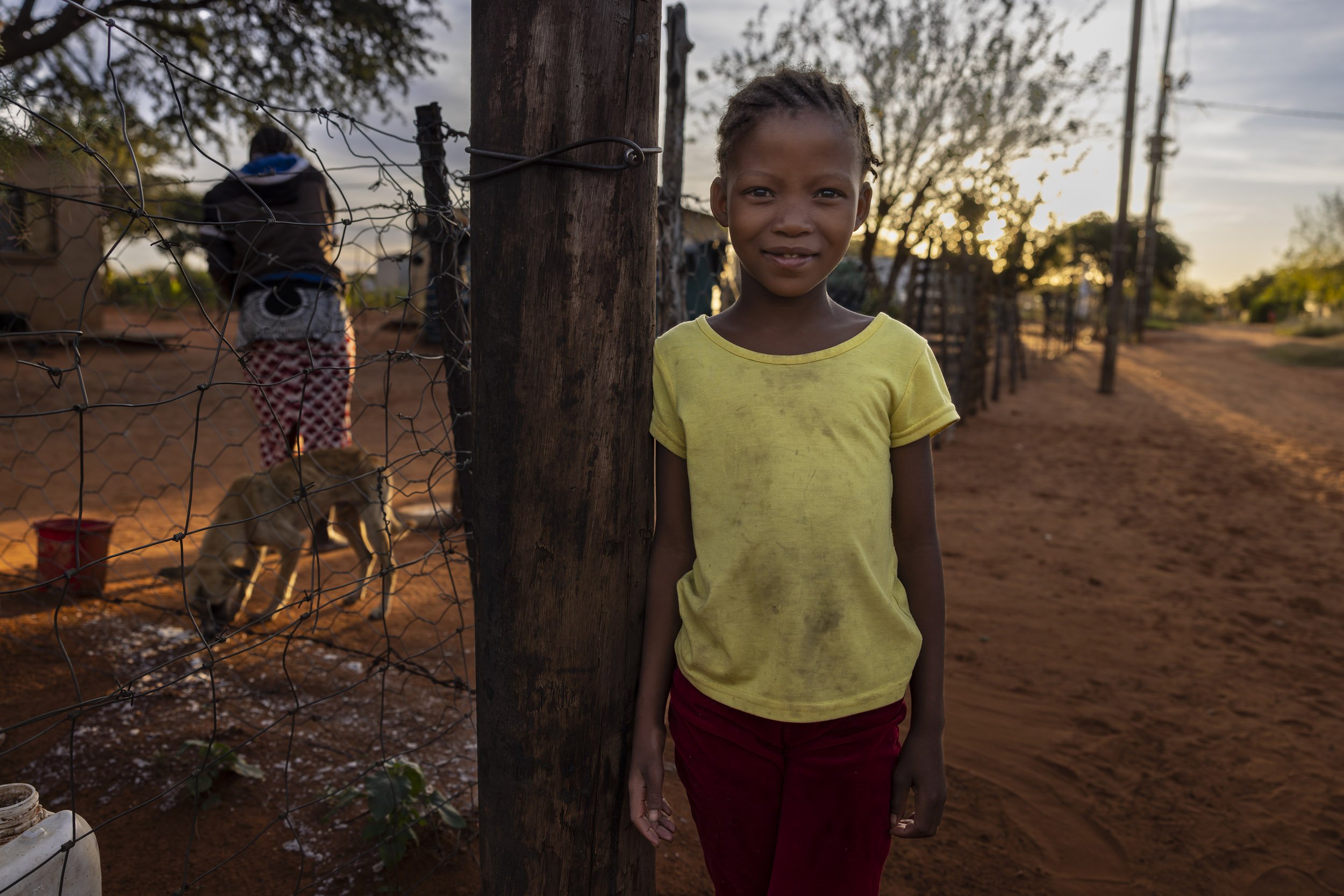
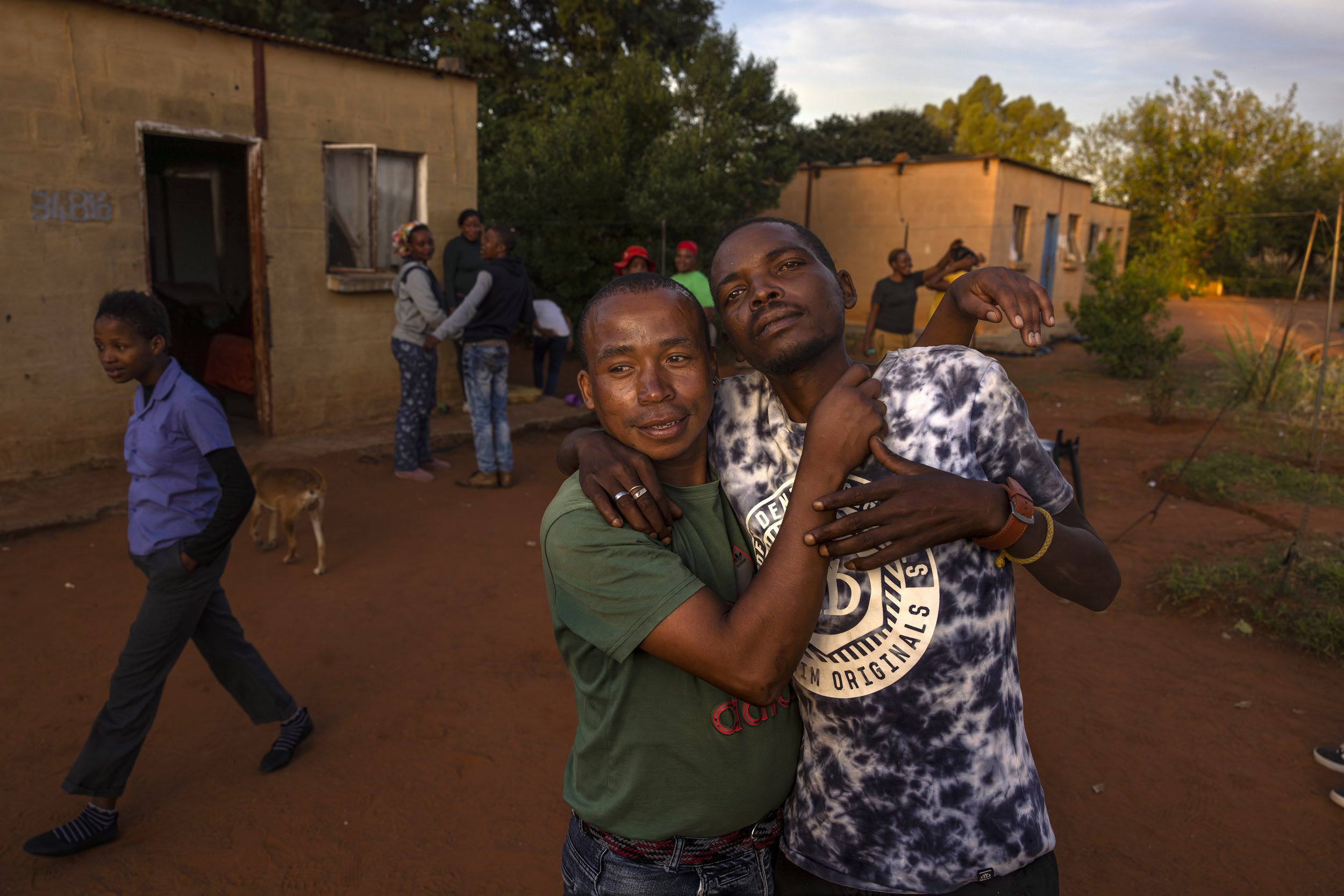
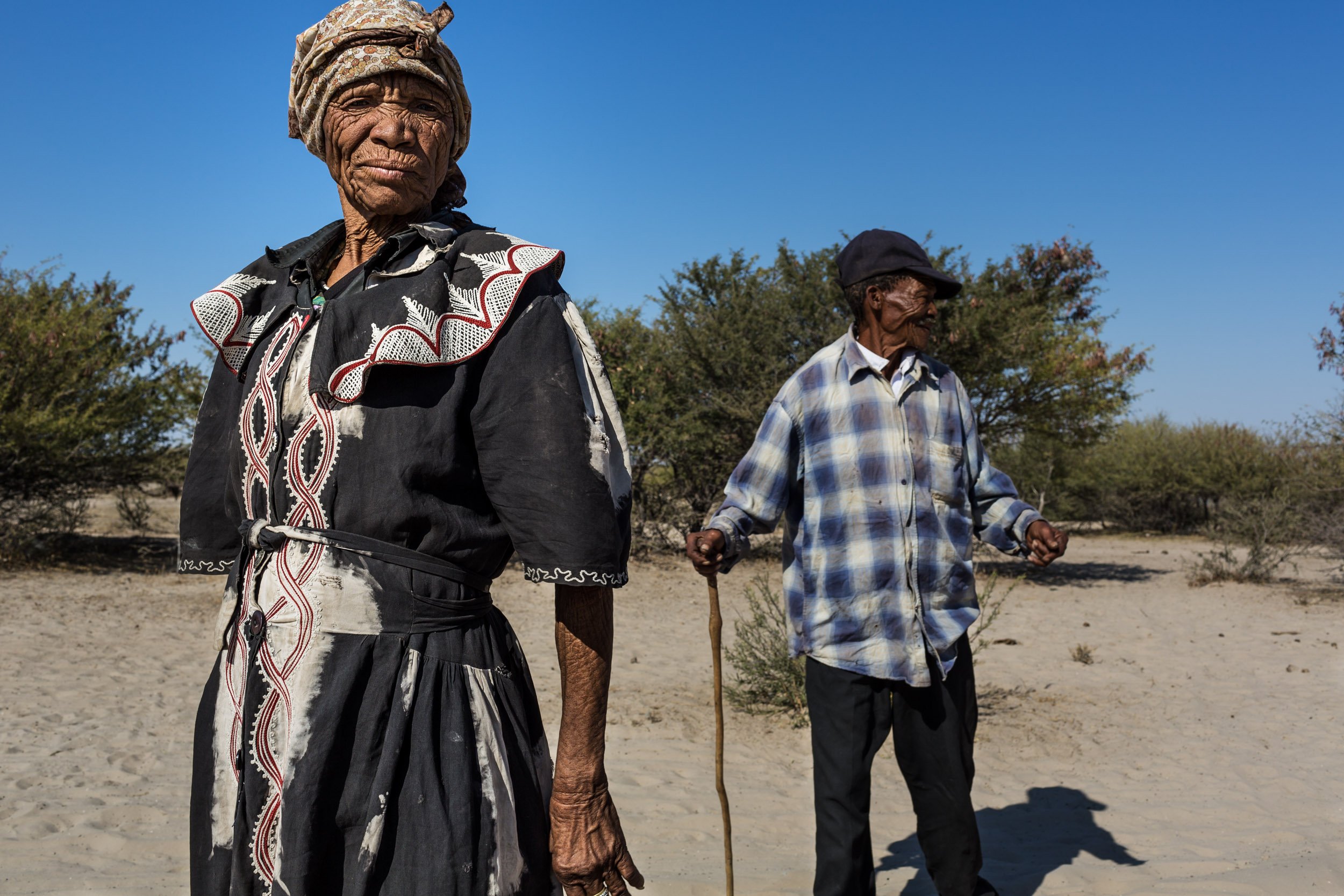
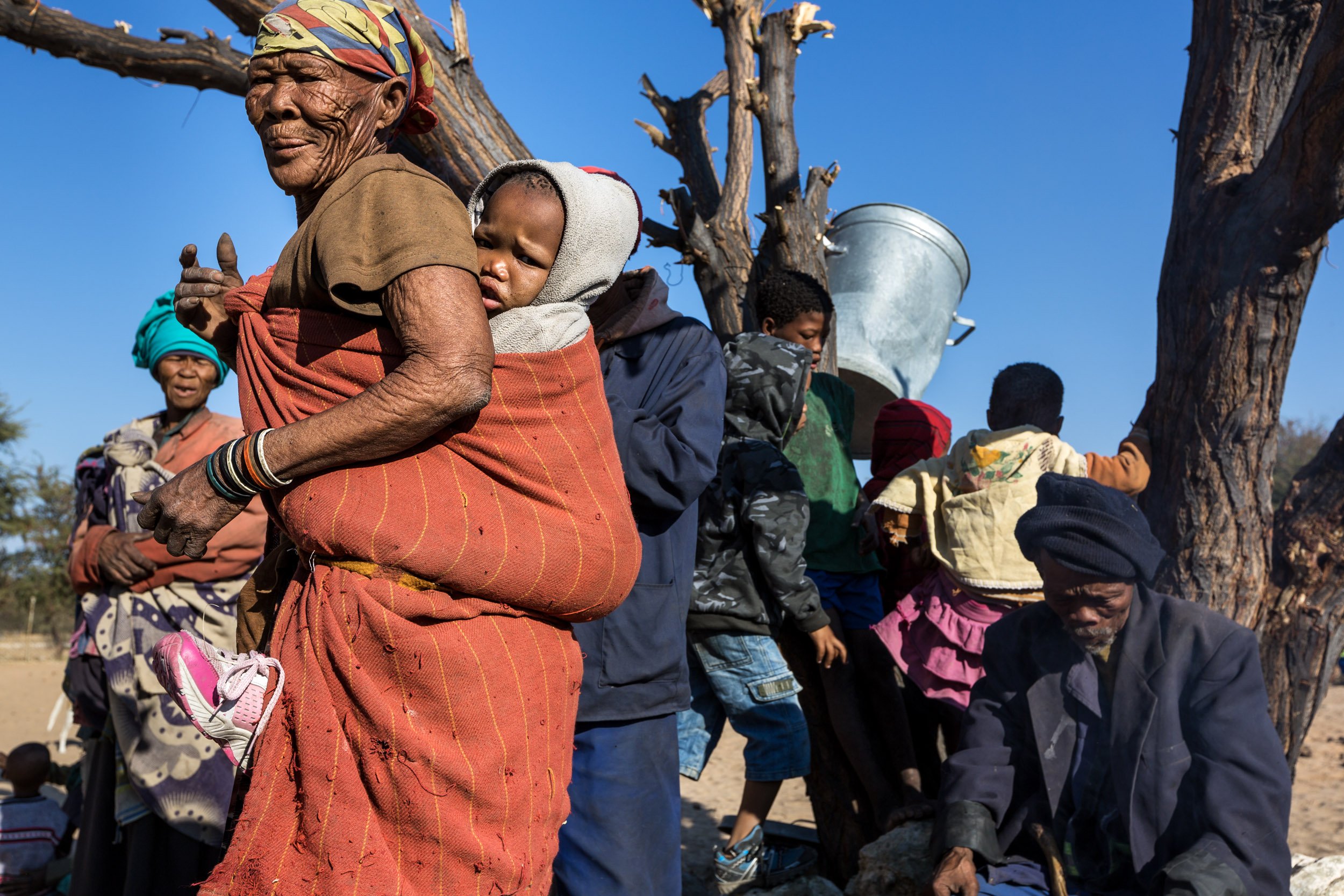
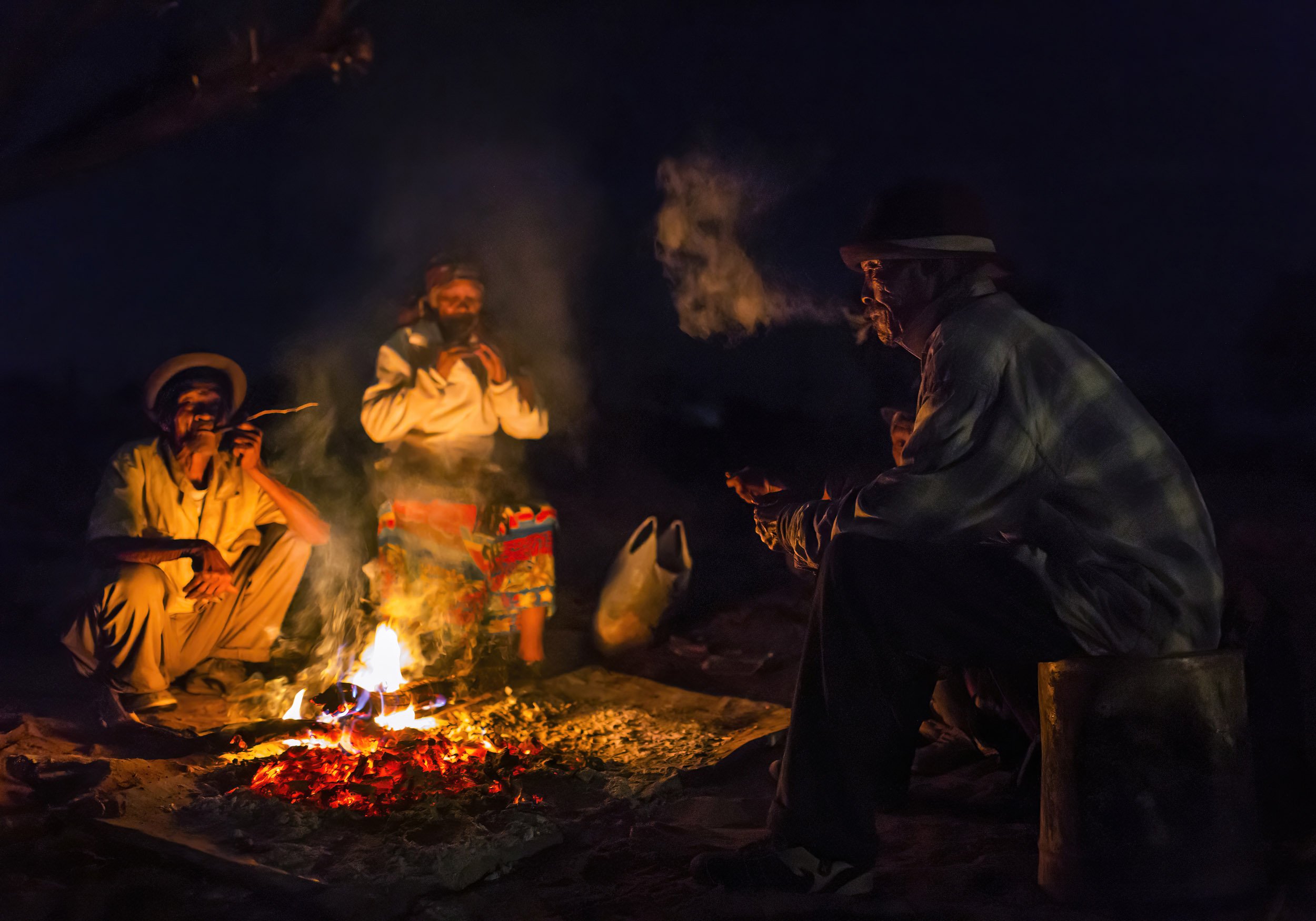
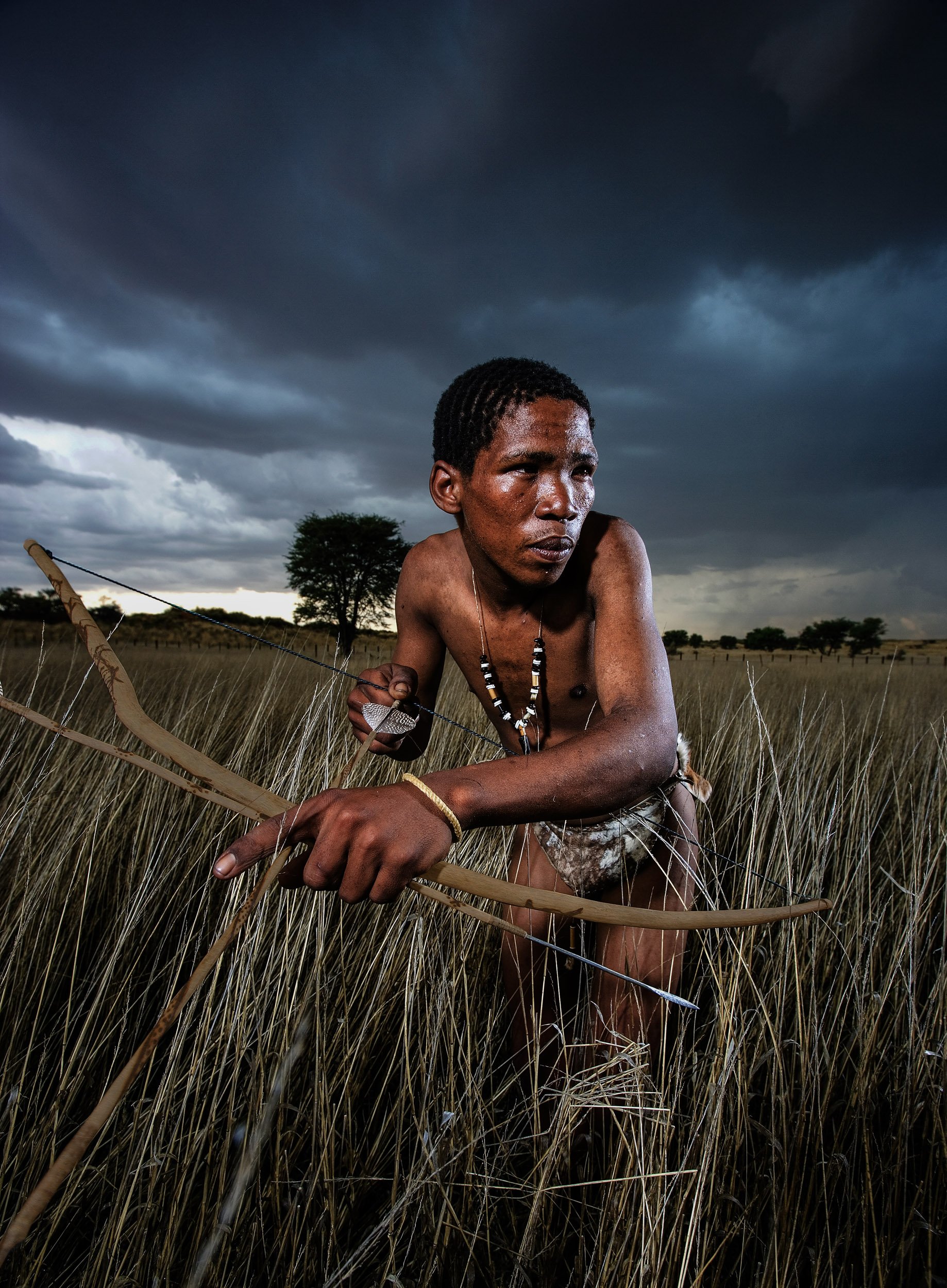
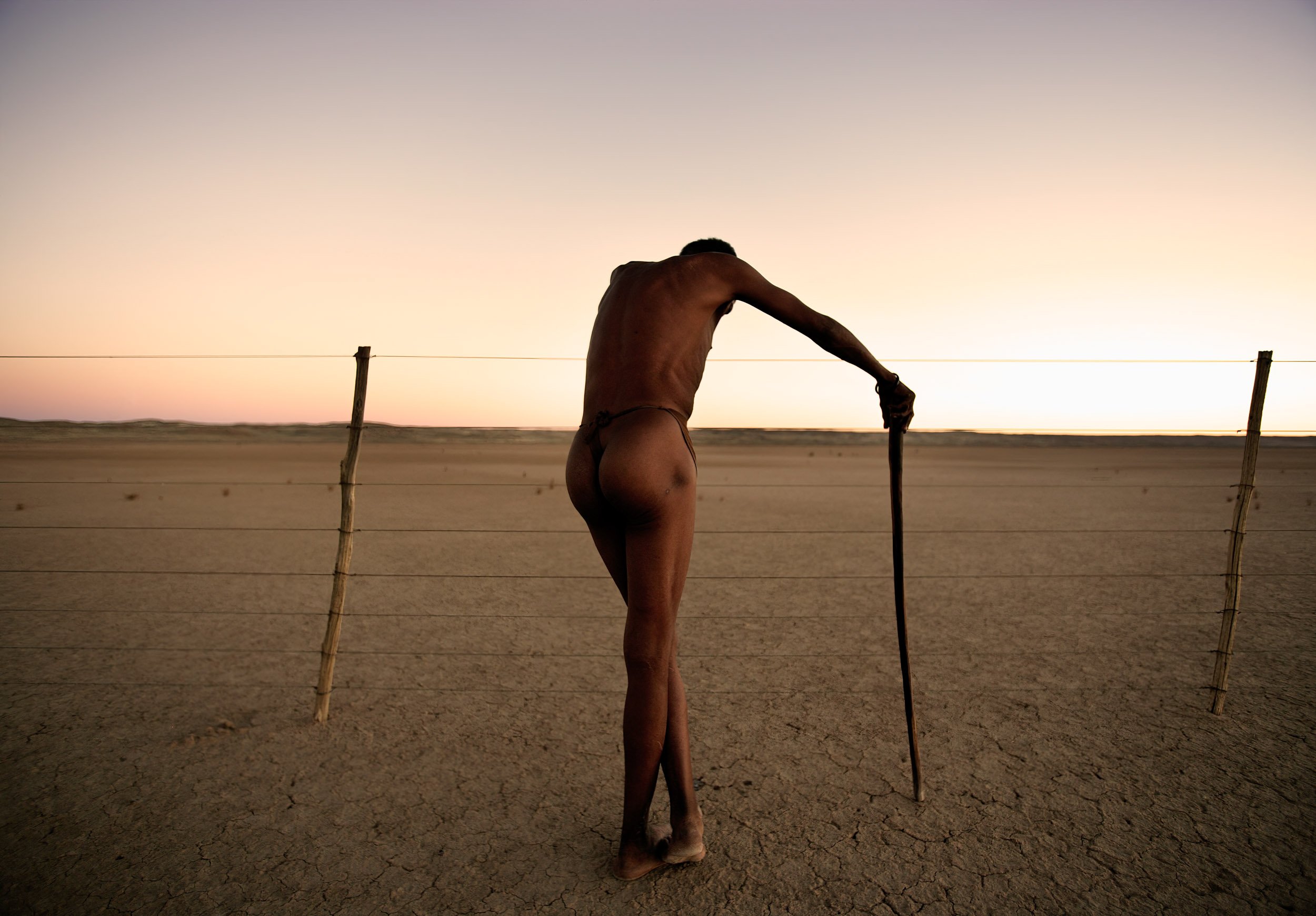
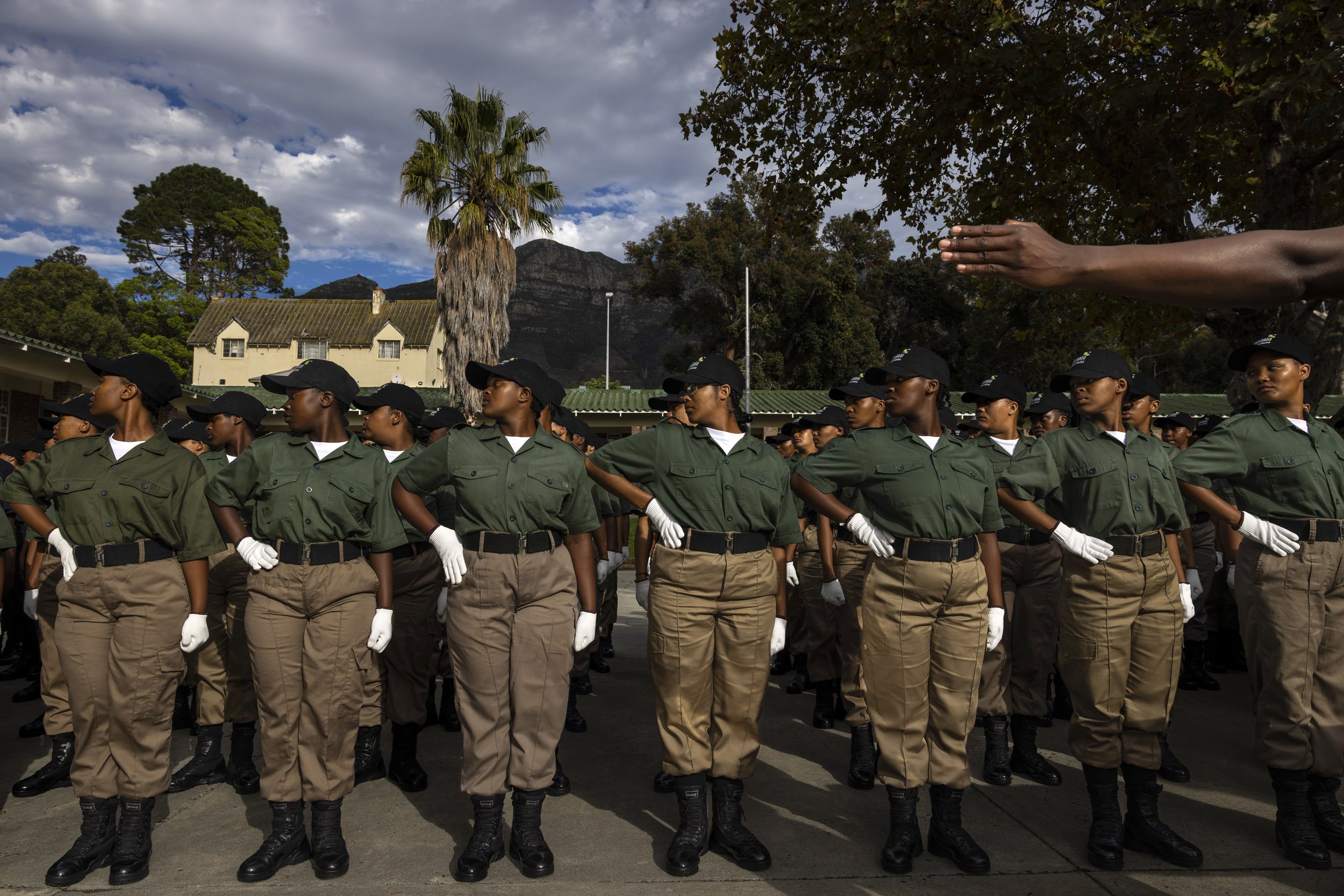
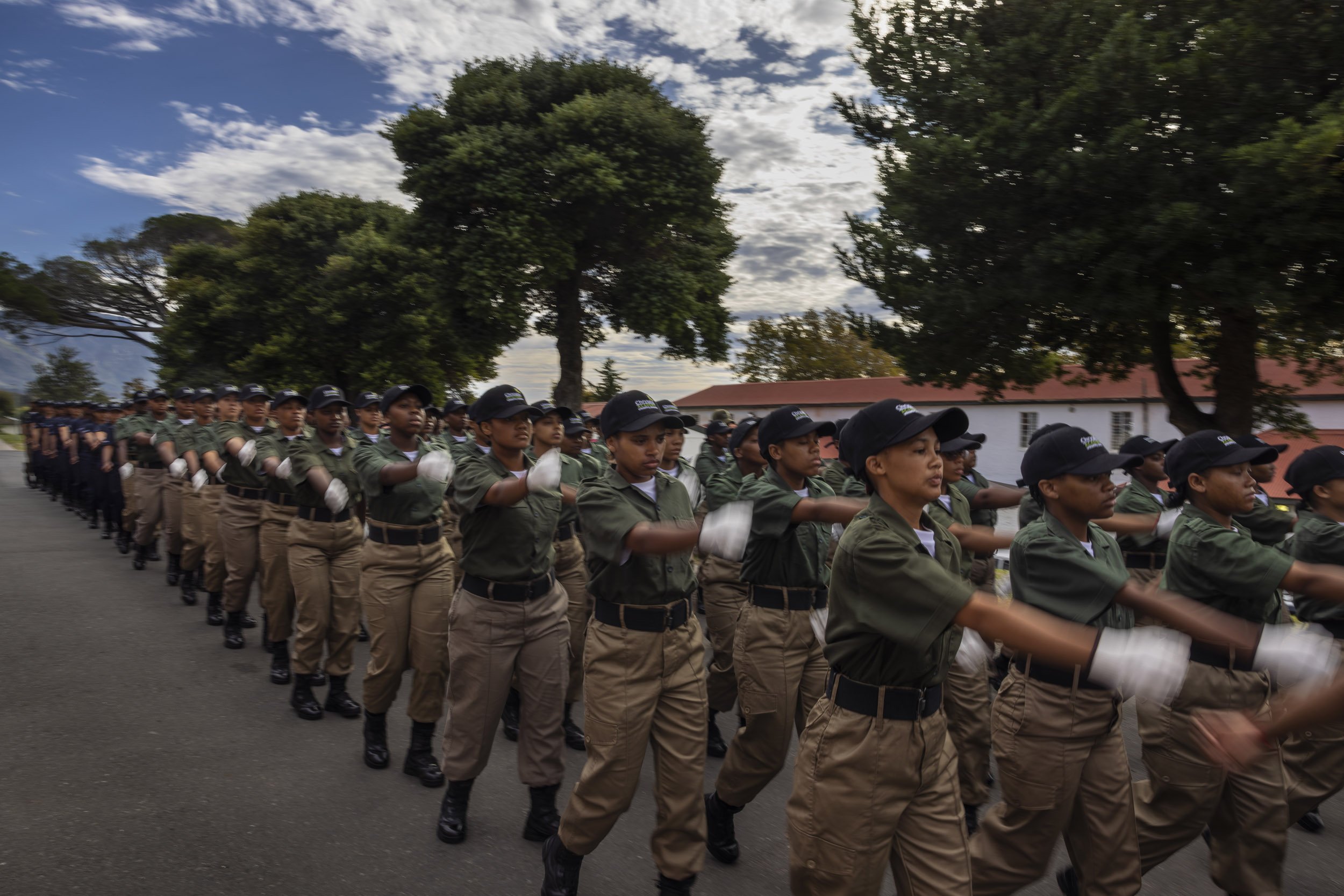
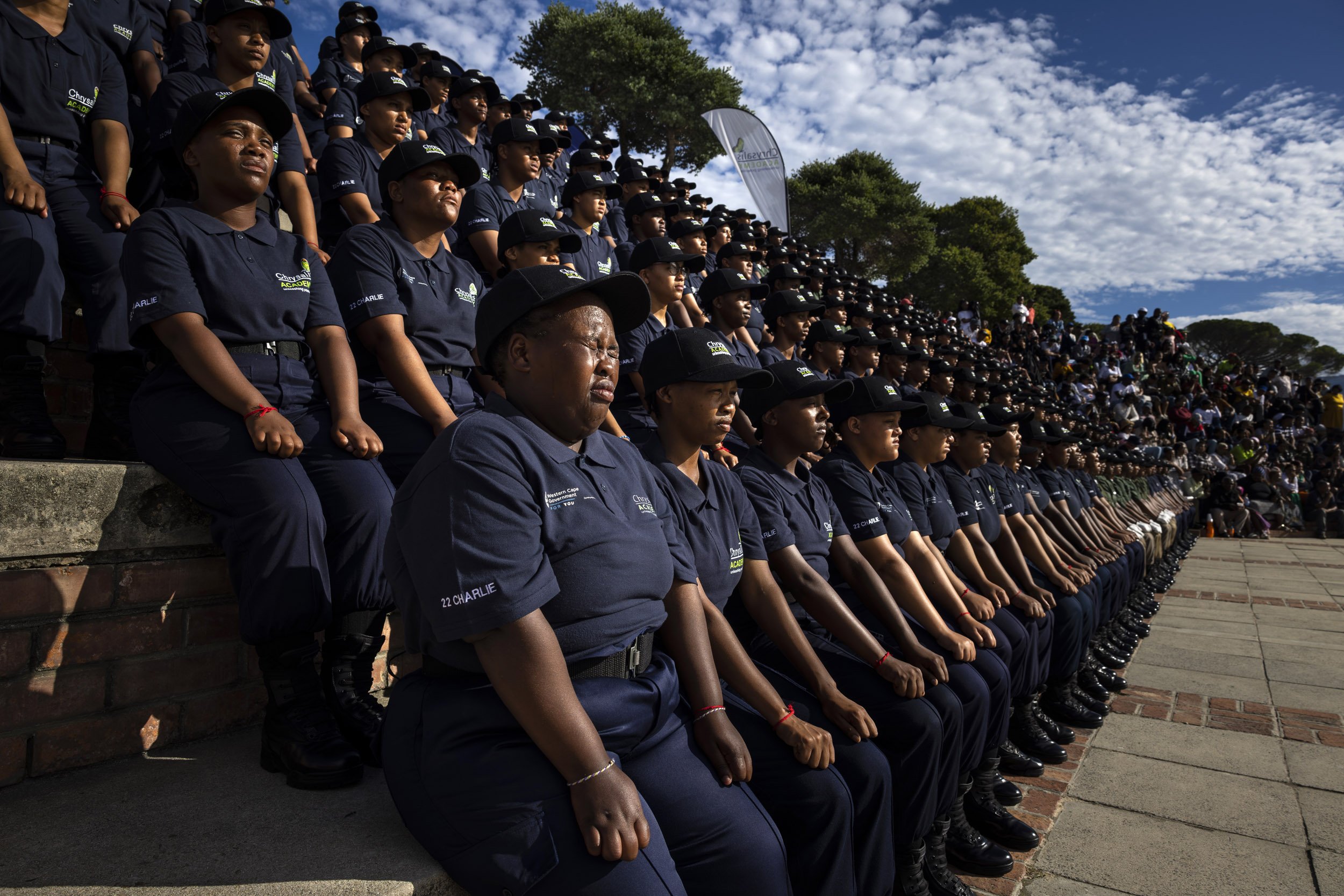
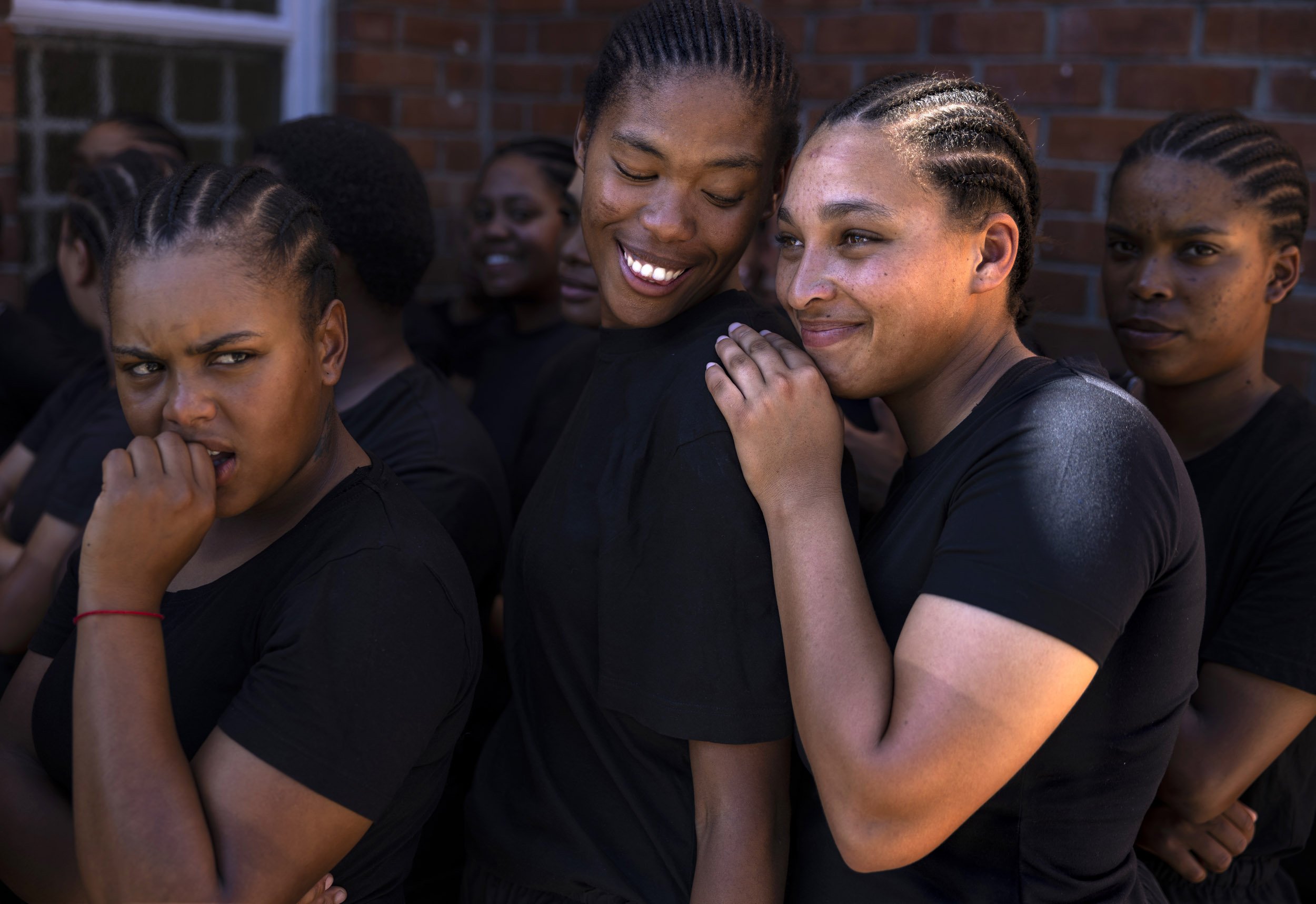
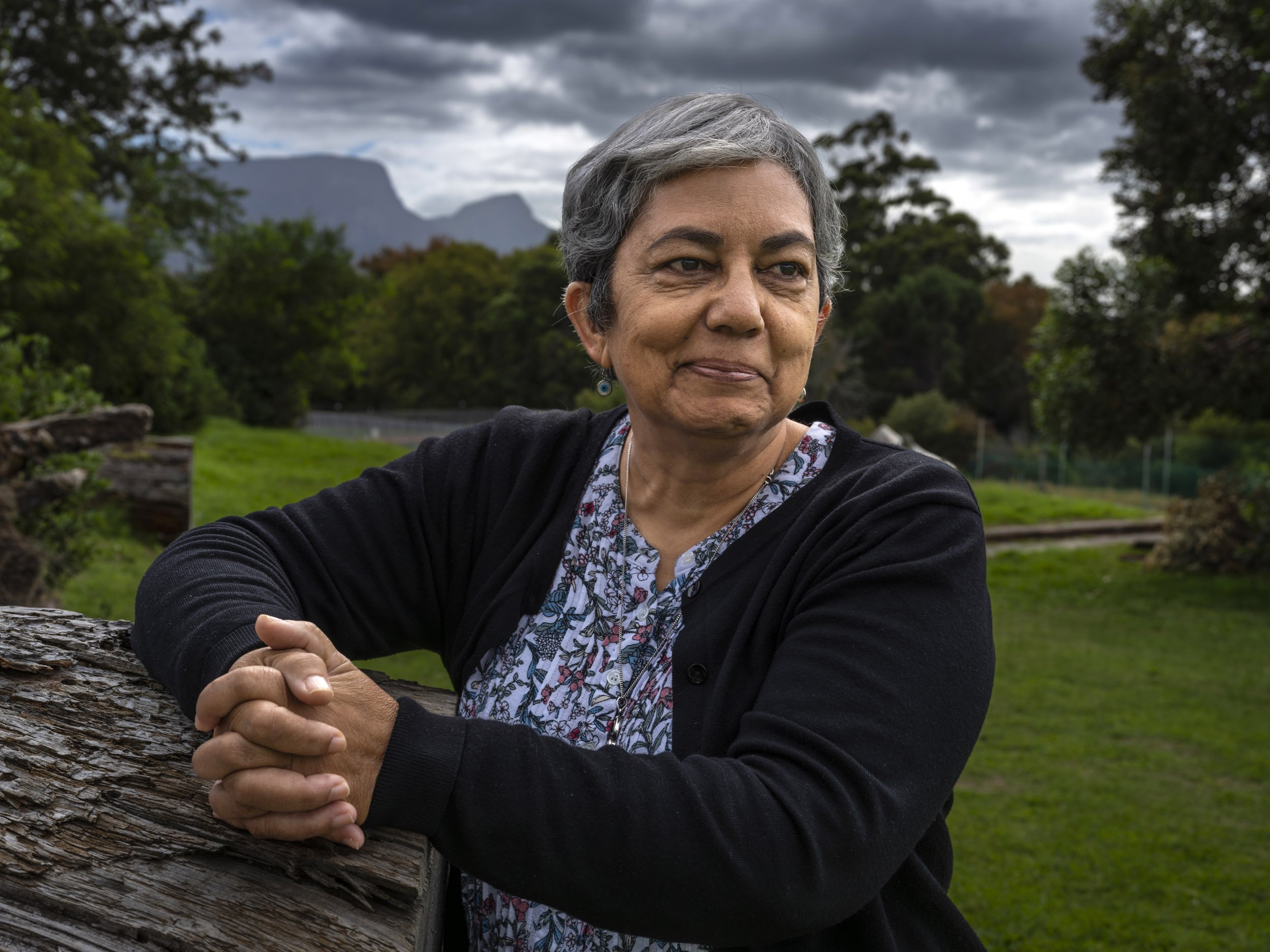
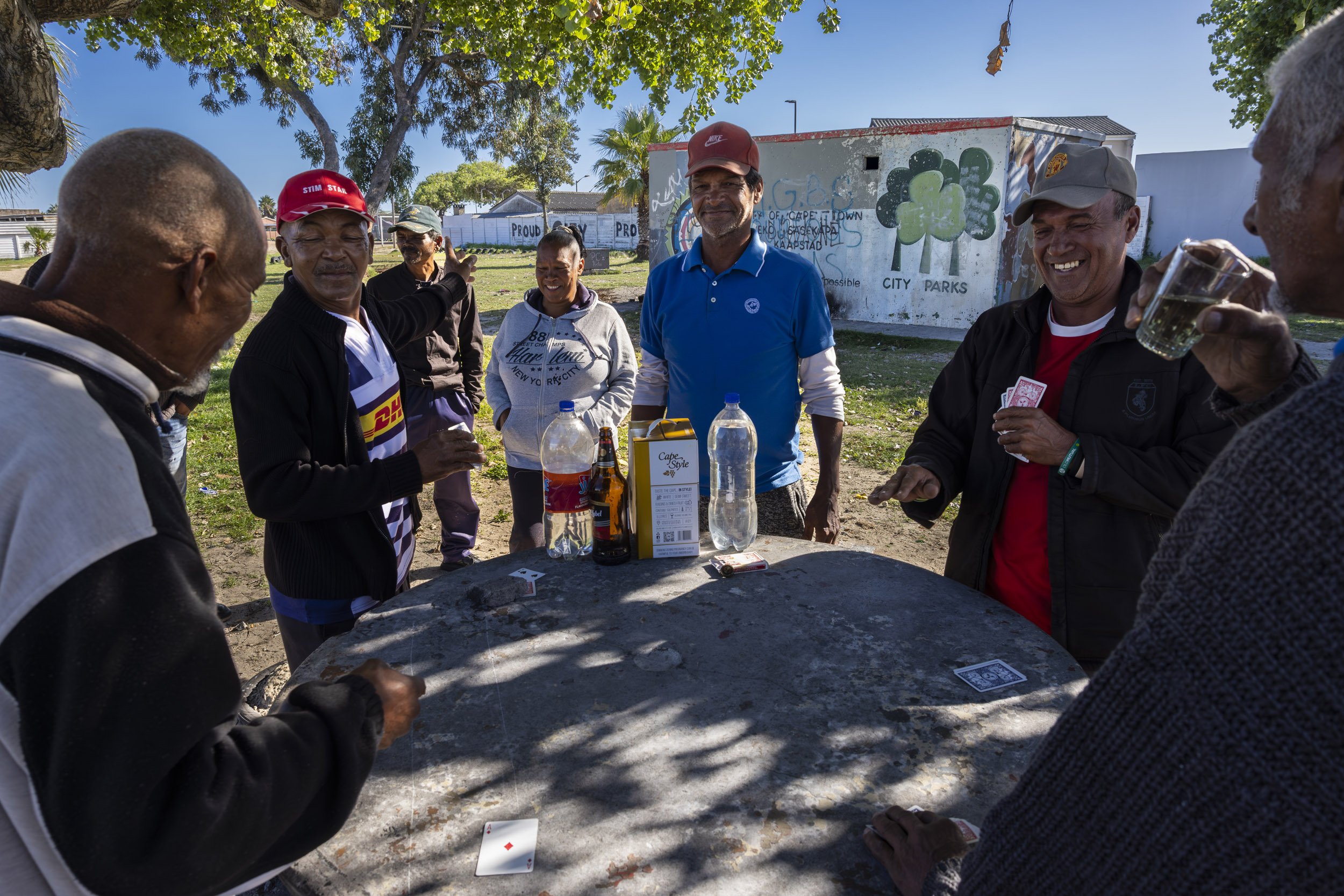


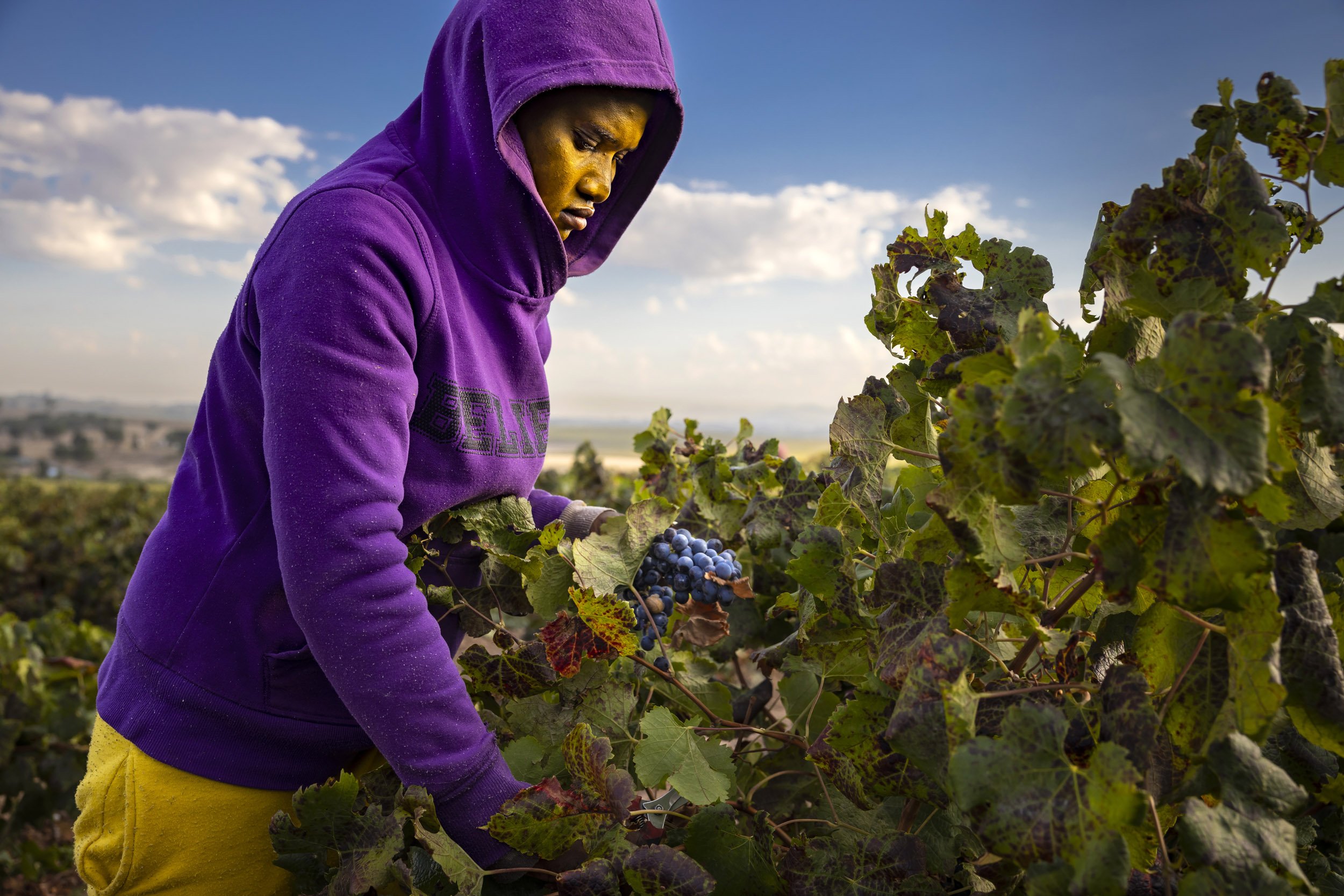
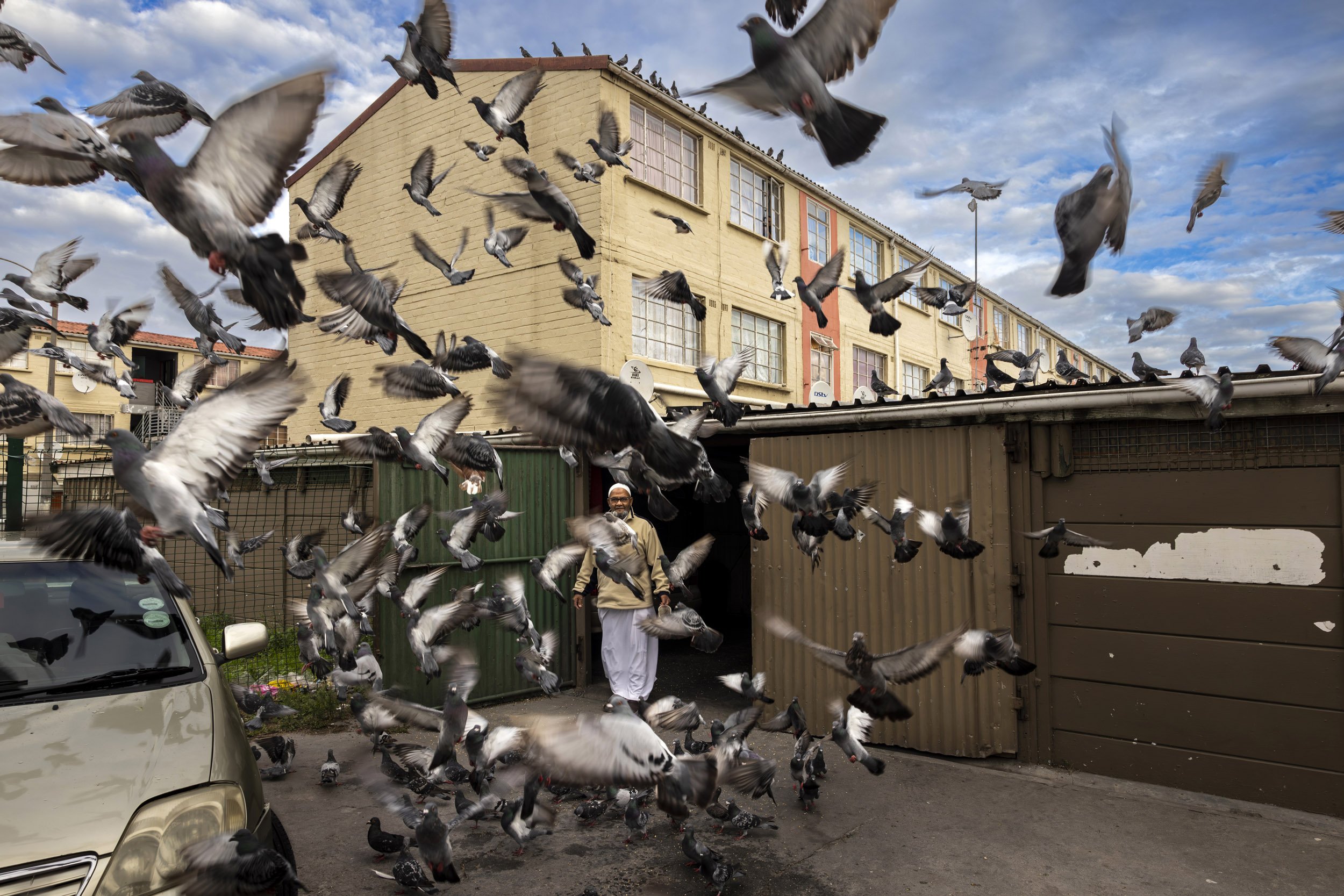
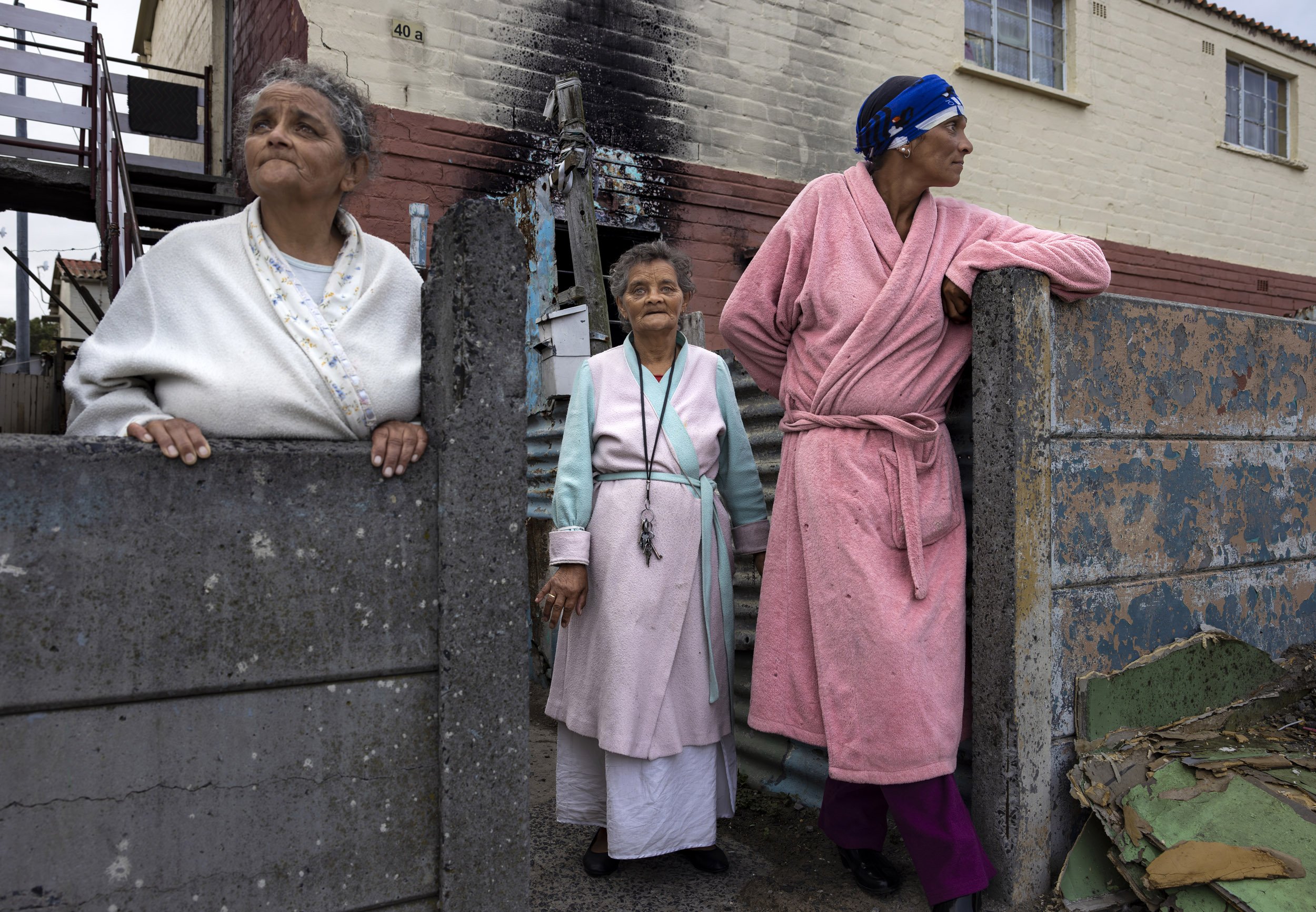
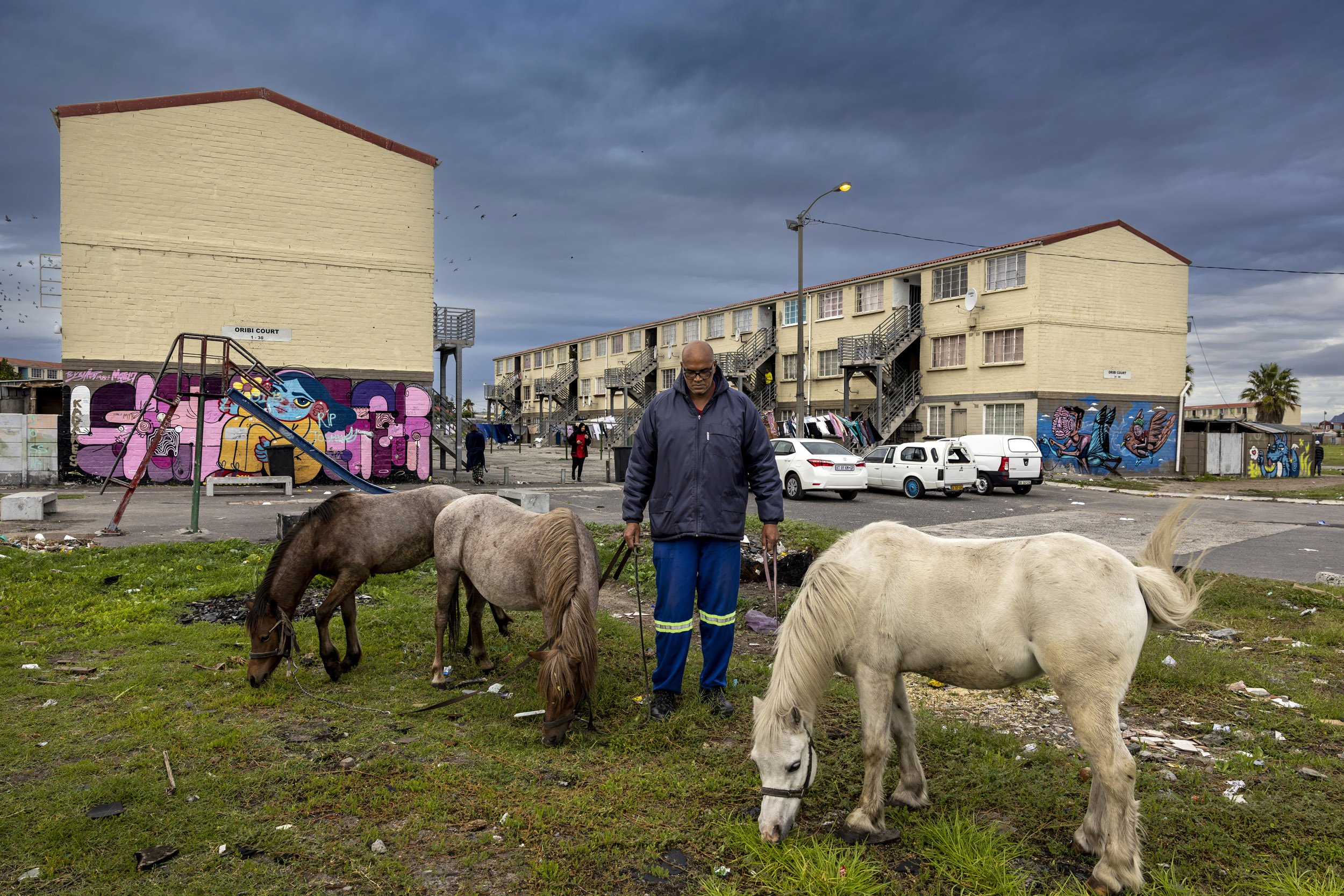
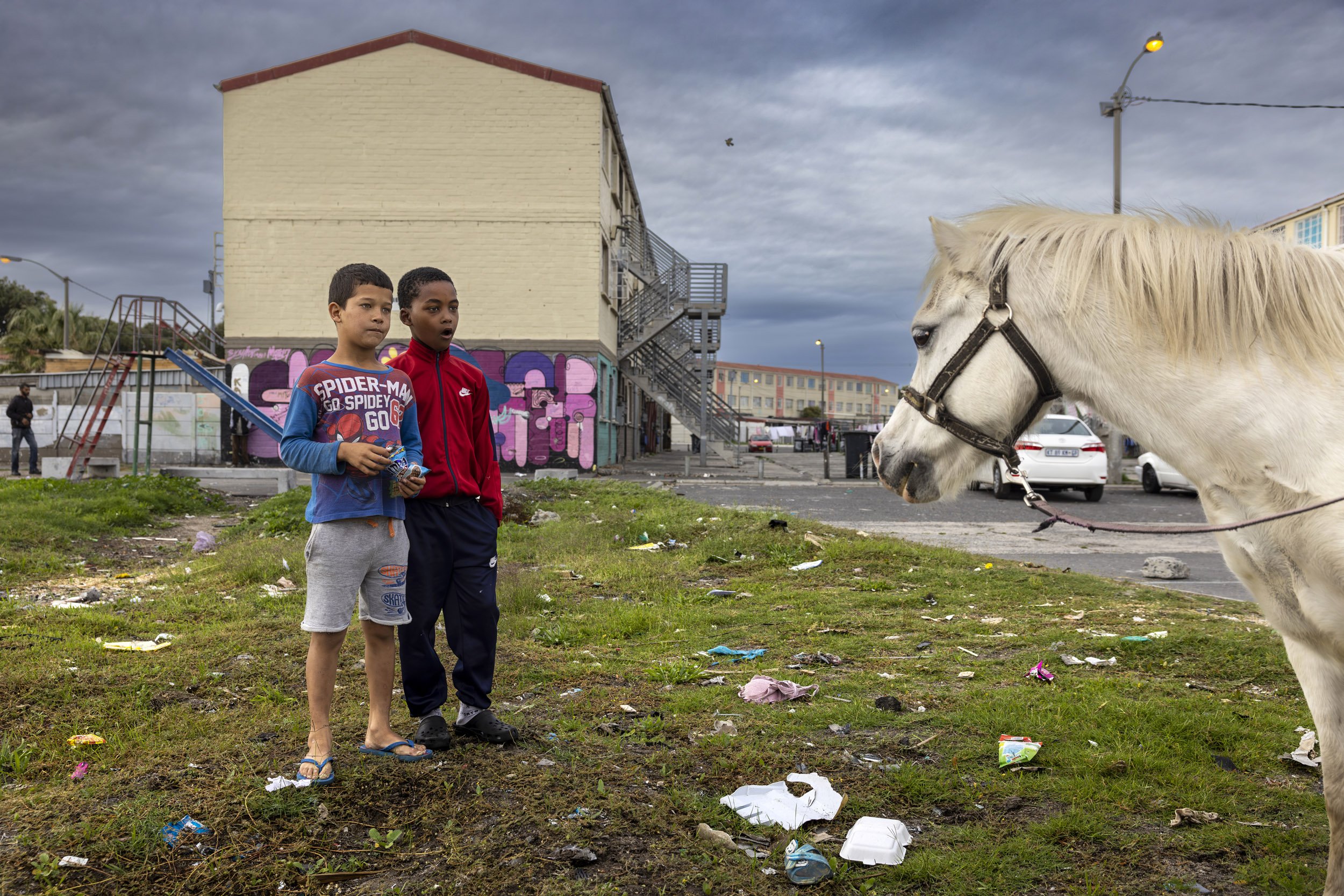
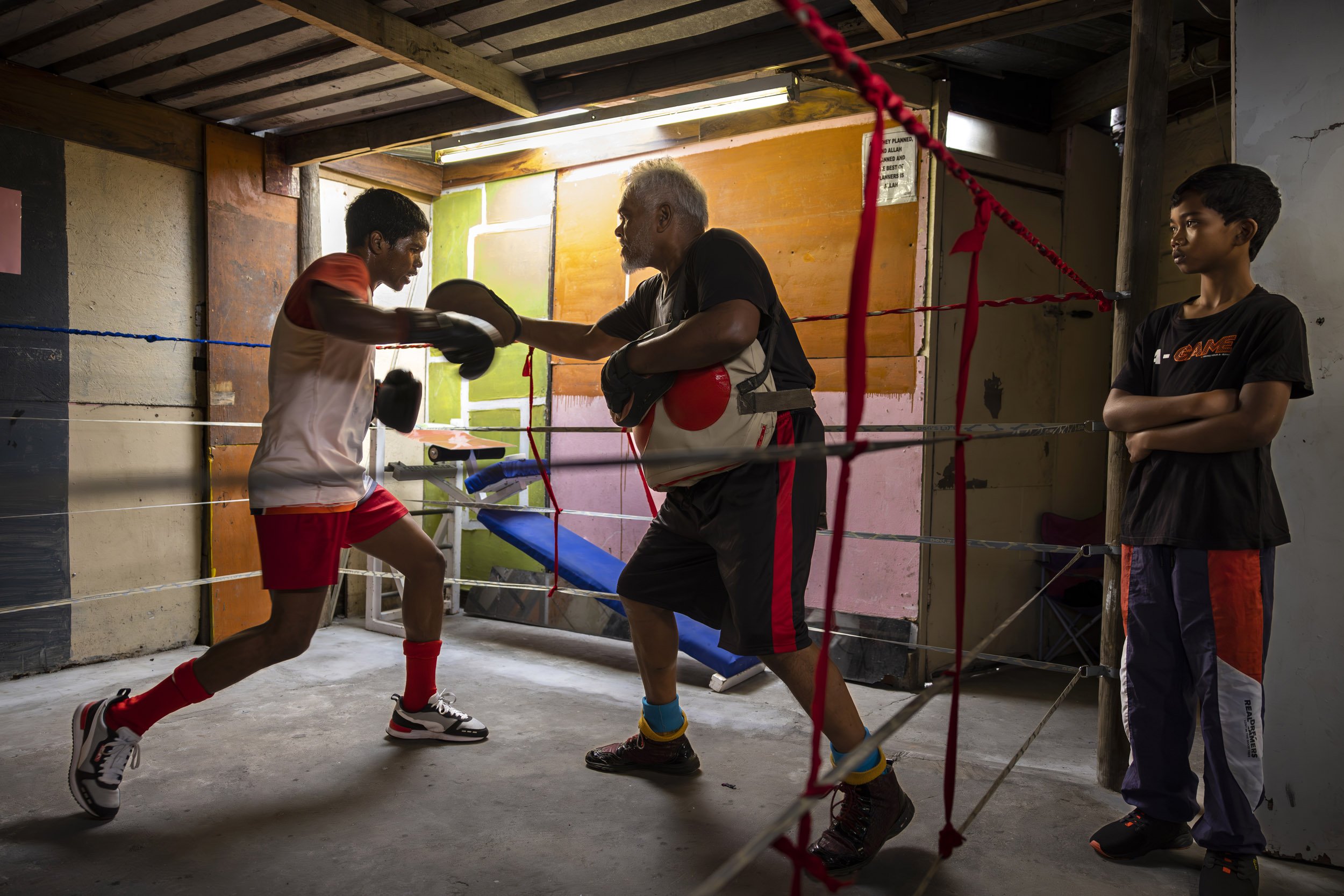
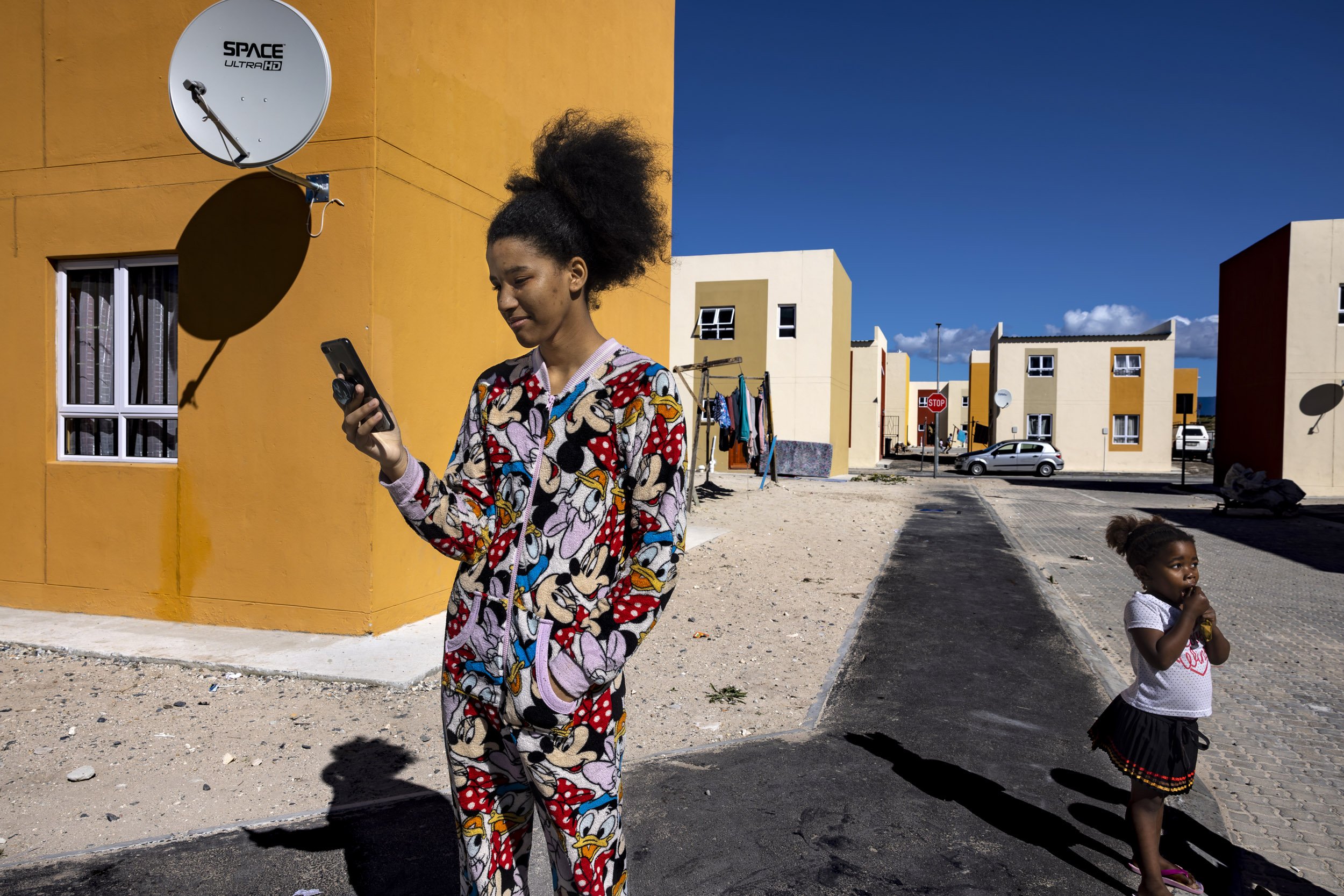
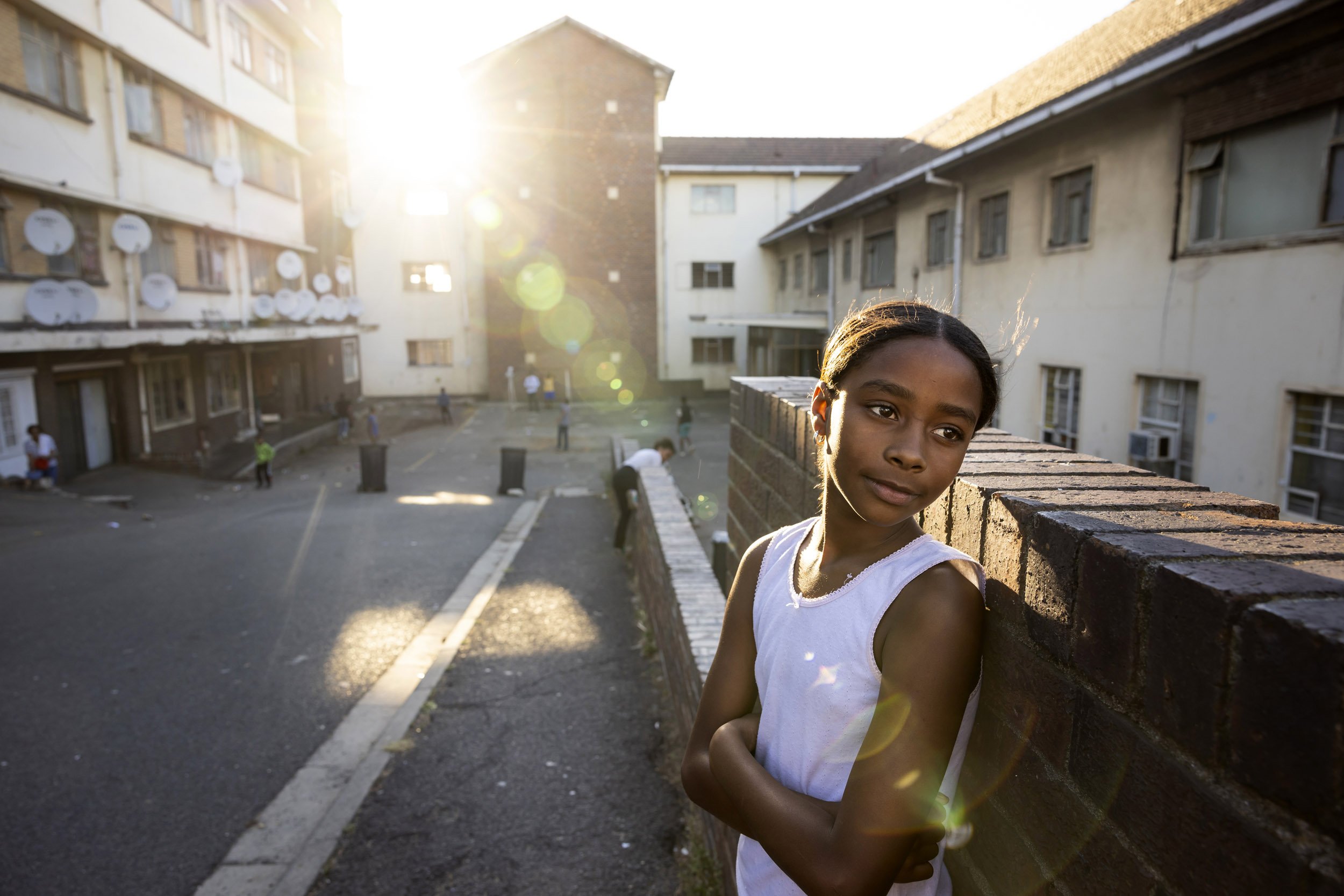
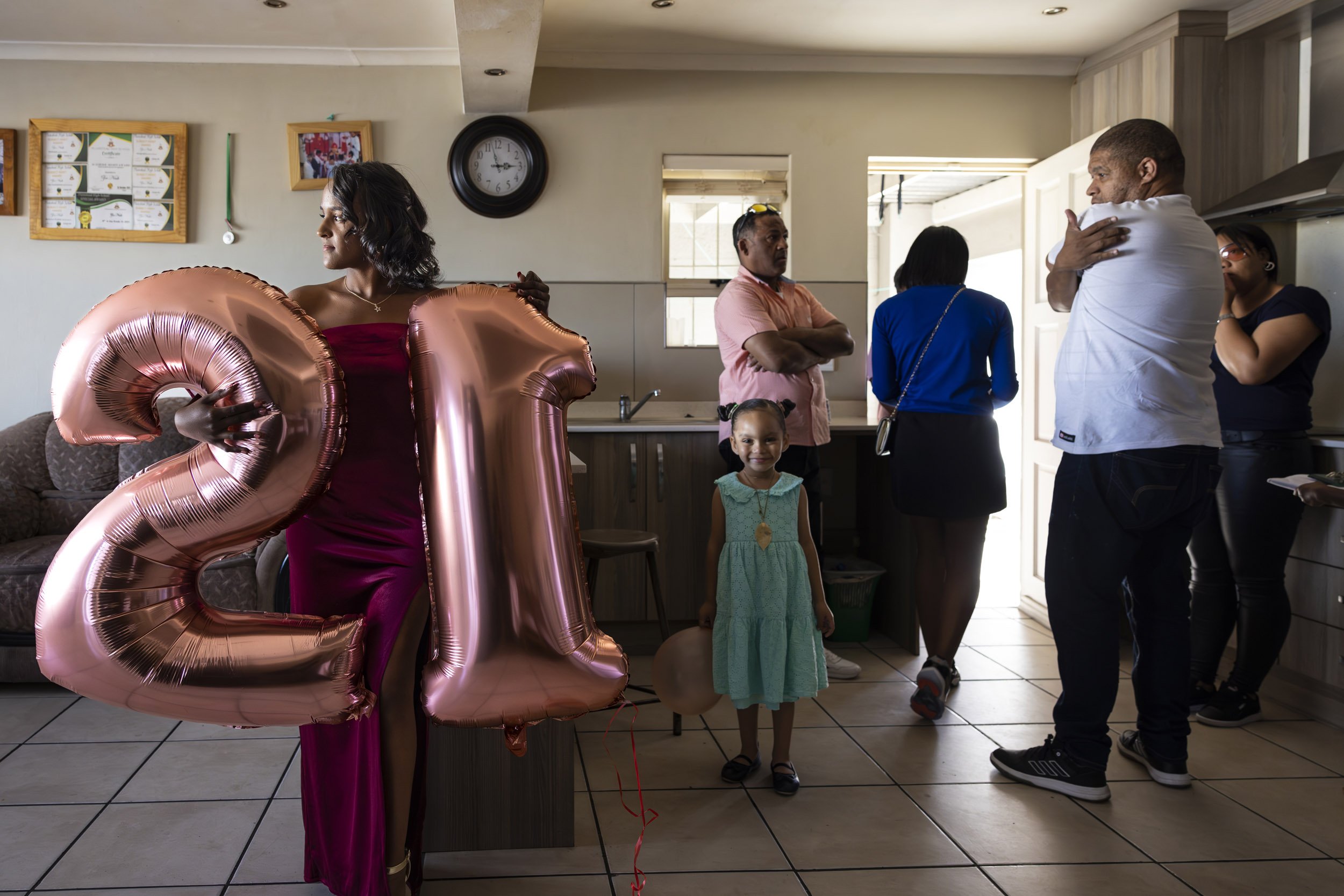
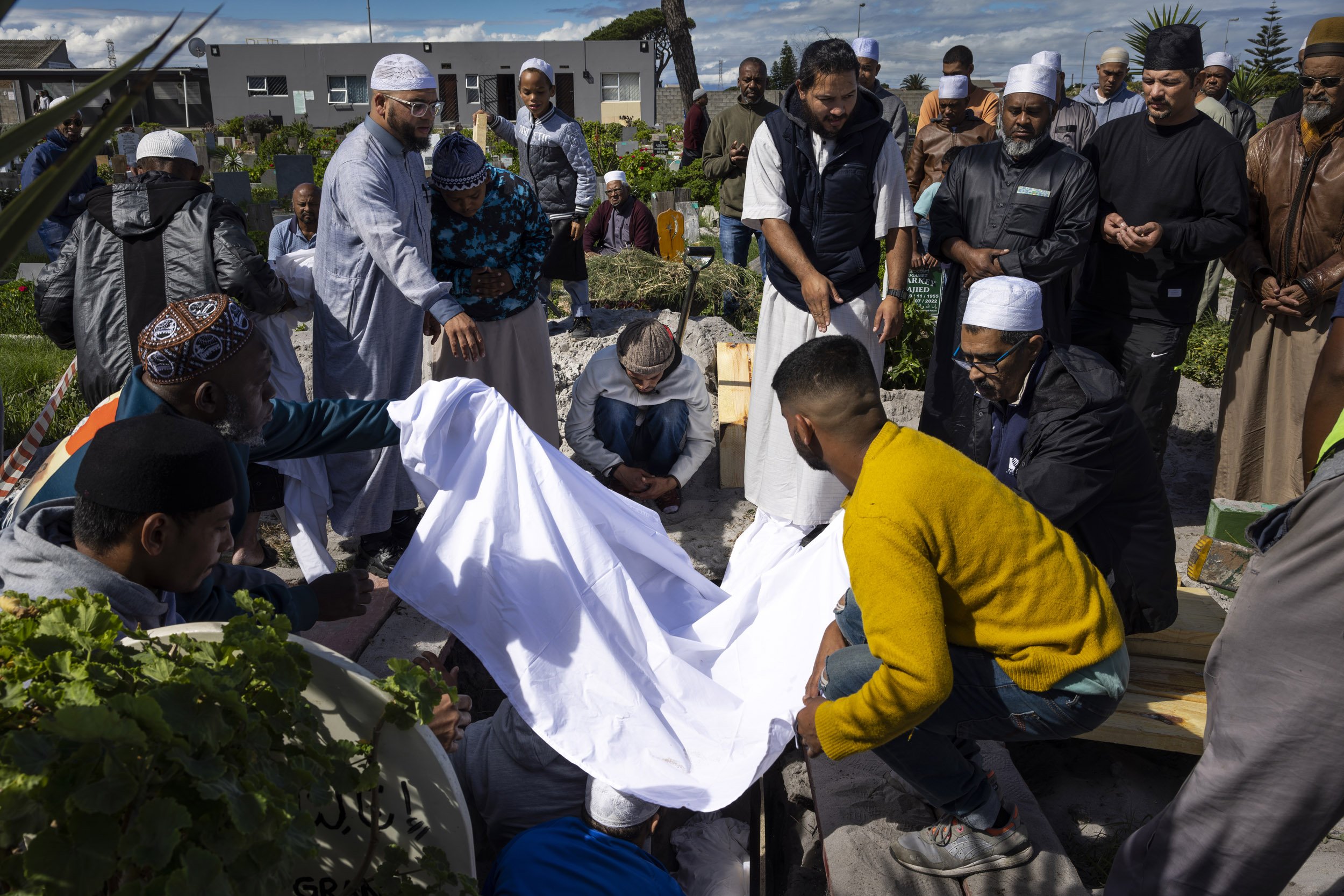
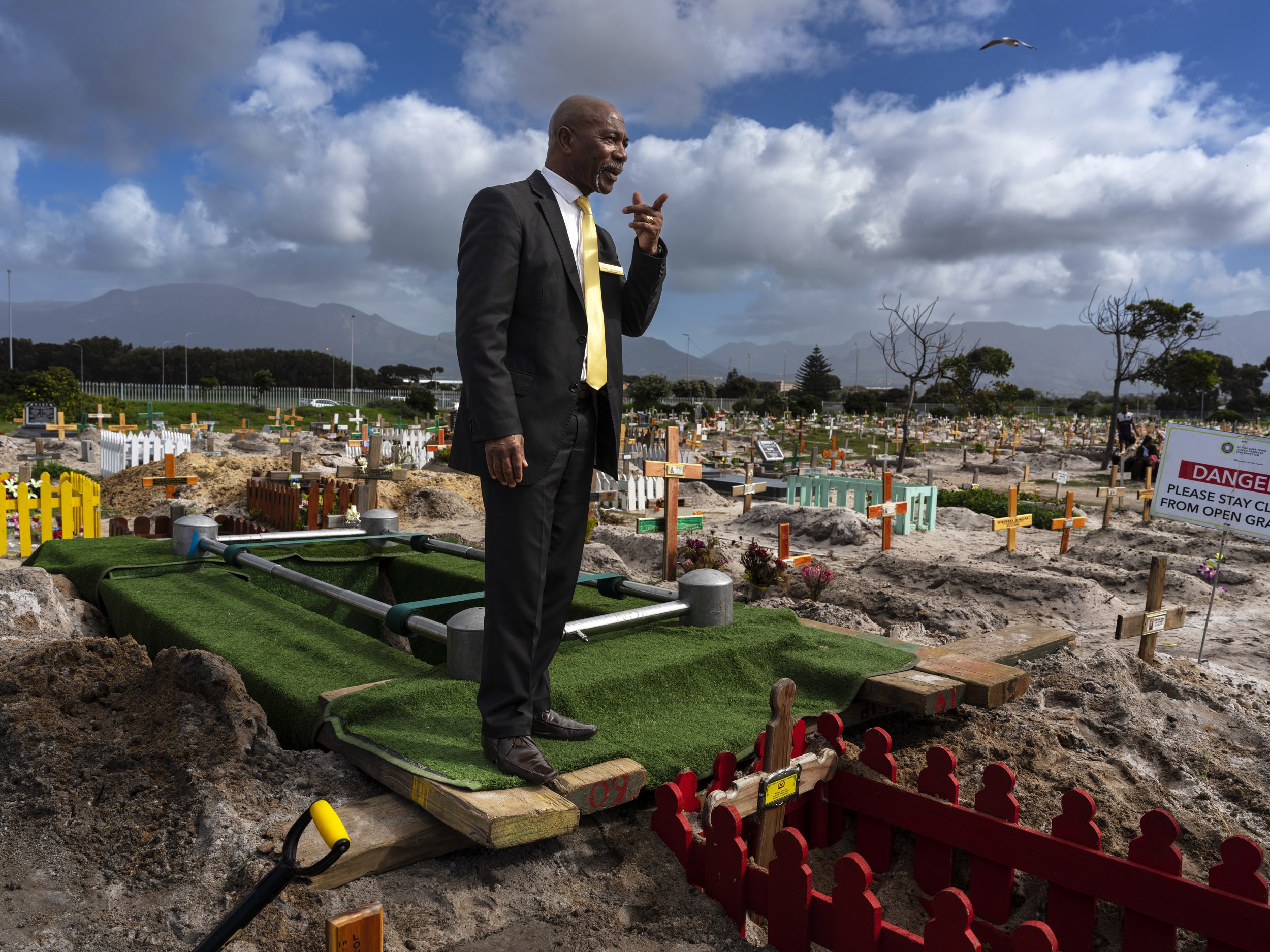
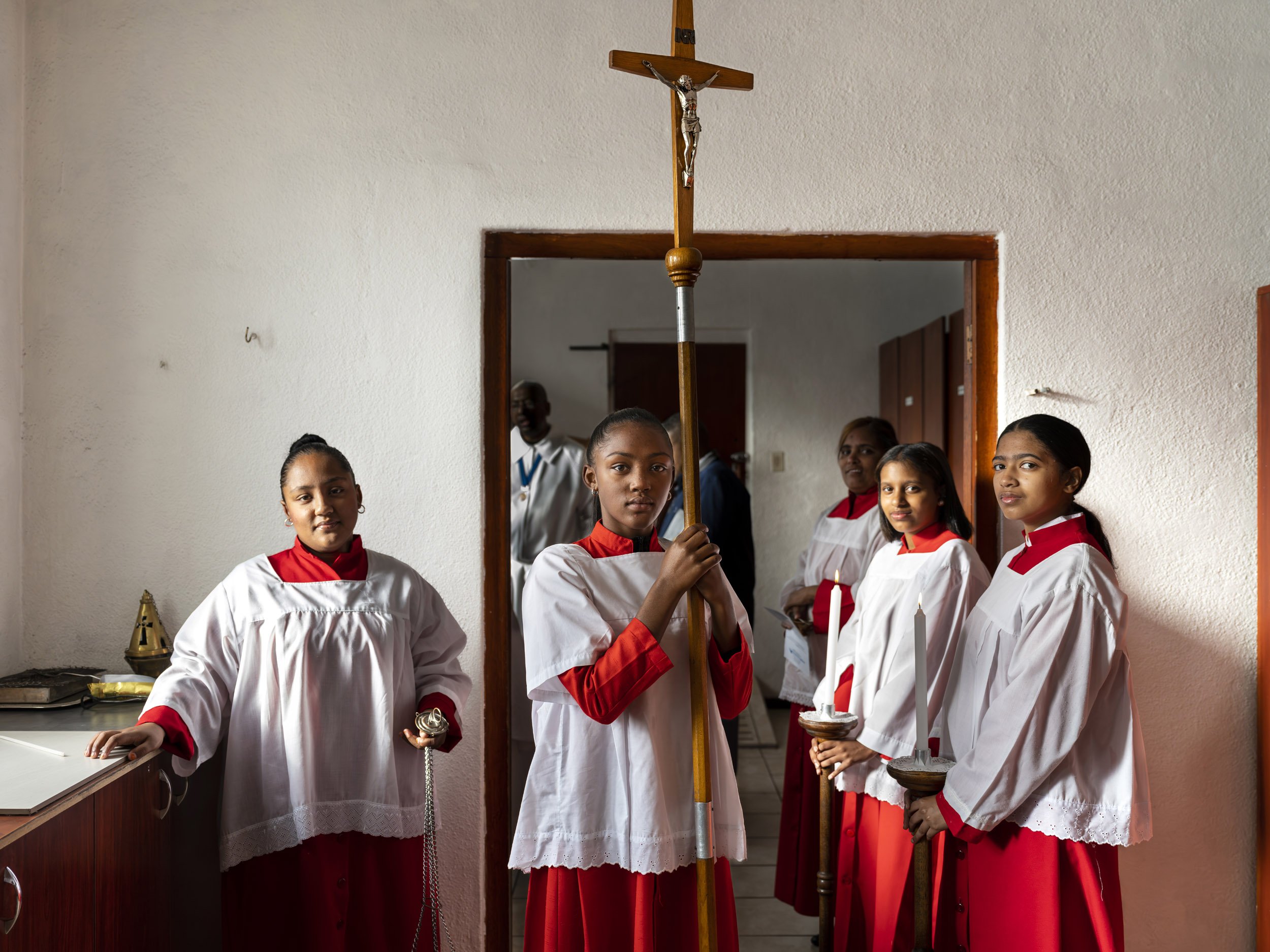
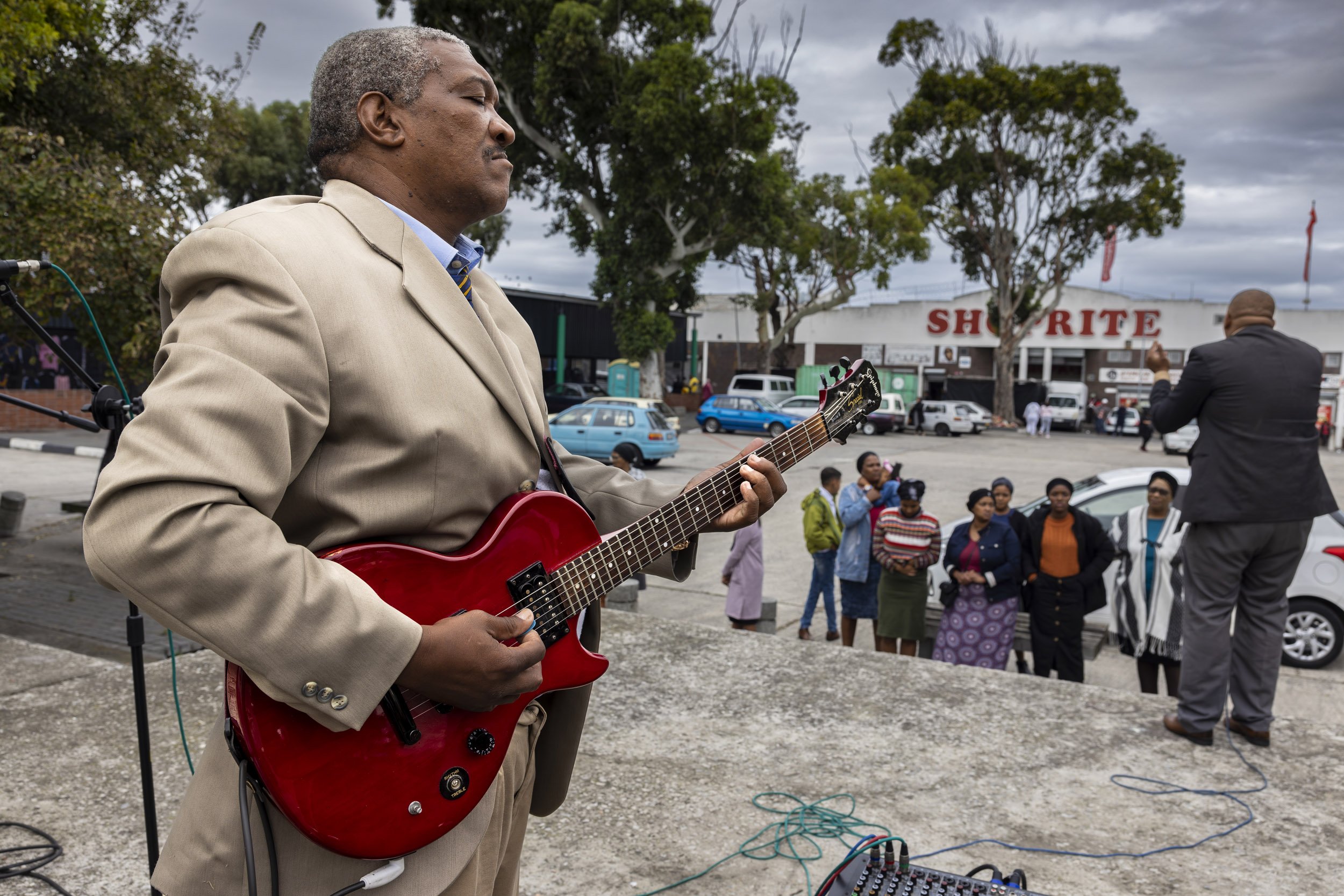

In South Africa the term ‘Coloured’ is used without offence and refers to five million plus people who have multiple heritages. One of the most traumatic events to happen to the coloured nation was the 1968 forced removal of more than 60,000 Coloured people from District 6, a traumatic decision by the Apartheid government that displaced people from their homes and business in the heart of Cape Town over to the Cape Flats in townships like Hanover Park and Mitchell’s Plain. This destroyed their economy, deeply affected extended family and threatened social order within the Coloured community. Gang culture and other forms of resistance emerged. Today, many Coloured people feel that after democracy came in 1994, they were once again thrown away by the ANC government, who many feel prioritized blacks over Coloureds. Today the murder rate in Cape Town averages 10 per day, many of those on the Cape Flats. The drug trade is a mainstay of gang income and there are thousands of addicts. Intergenerational trauma is a strong feature for many Coloured familes on the Cape Flats. That said, there are many successful Coloured people all over South Africa. One of the most significant movements amongst Coloured people today is recognition of their identity beyond the classification first given them by the British and then cemented under Apartheid. This section of the Coloured nation wants to be identified as Khoi and connected to the First People of South Africa. First image: Trevor Alexander Classen, 60, is supposedly the longest serving prisoner in South African history. Trevor feels today that the forced removal of coloured people from District 6 in Cape Town from 1968 was a huge factor in creating a territory mentality in coloured people in the Cape and subsequently laying the foundation for gangs across the Cape Flats. He says it was a case of “you say we are bad, let us show you how bad we can be.”
LAVENDER HILL, CAPE FLATS, SOUTH AFRICA: Two senior members of the Americans gang guard an area where there are frequent drug transactions. Both men show tattoos also connecting them to the 26’s, a numbers gang from South African prisons. These tattoos show their status as accomplished thieves. Gangs on the Cape Flats have long been a feature of the coloured community. They are a classic example of the consequences of drug use, the legacy of apartheid and the ongoing social crisis for many coloured people living on the Cape Flats. (Photo by Brent Stirton/Getty Images)
HANOVER PARK, CAPE TOWN, SOUTH AFRICA: Tasleem Johnson, 36, is a long-time member of the Mongrels Gang, one of the oldest and most notorious gangs on the Cape Flats. He has been with them since he was a young teenager, with family links to the Mongrels. He has tried to step back from active gang life but still lives in the same street as the HQ of the Mongrels, making it very difficult. He currently lives with his pregnant wife and 5 children in one bedroom in one of the most dangerous gang areas in South Africa. Hanover Park has seen over 16, 000 gunshots fired in the last 4 years. Tasleem works as a volunteer “interuptor” for “Ceasefire” an organization that seeks to reconcile gang conflict on the Cape Flats. Seen here with his twin daughters and his wife, Tasleem’s hand was cut last night when he tried to calm a gangster who was “freaking out.” Gang culture is a strong feature of life for many coloured people. In South Africa the term ‘coloured’ is used without offence and refers to people who have multiple heritages. Coloured was a legally defined racial classification during apartheid referring to anyone not white or not a member of one of the aboriginal groups of Africa on a cultural basis, which effectively largely meant those people of colour not speaking any indigenous languages. The Cape Coloured community is predominantly descended from numerous interracial sexual unions, primarily between Western European men and Khoisan or mixed-race women in the Cape Colony from the 17th century onwards and then from Malay workers who came to the Cape. There are close to 5 million coloured people in South Africa, with the majority language being Afrikaans. Most of these people are poud to call themselves coloured and do not see this as a derogatory term. (Photo by Brent Stirton/Getty Images)
HANOVER PARK, CAPE TOWN, SOUTH AFRICA: Tasleem Johnson, 36, is a long-time member of the Mongrels Gang, one of the oldest and most notorious gangs on the Cape Flats. He has been with them since he was a young teenager, with family links to the Mongrels. He has tried to step back from active gang life but still lives in the same street as the HQ of the Mongrels, making it very difficult. He currently lives with his pregnant wife and 5 children in one bedroom in one of the most dangerous gang areas in South Africa. Hanover Park has seen over 16, 000 gunshots fired in the last 4 years. Tasleem works as a volunteer “interuptor” for “Ceasefire” an organization that seeks to reconcile gang conflict on the Cape Flats. Seen here with his twin daughters and his wife, Tasleem’s hand was cut last night when he tried to calm a gangster who was “freaking out.” Gang culture is a strong feature of life for many coloured people. In South Africa the term ‘coloured’ is used without offence and refers to people who have multiple heritages. Coloured was a legally defined racial classification during apartheid referring to anyone not white or not a member of one of the aboriginal groups of Africa on a cultural basis, which effectively largely meant those people of colour not speaking any indigenous languages. The Cape Coloured community is predominantly descended from numerous interracial sexual unions, primarily between Western European men and Khoisan or mixed-race women in the Cape Colony from the 17th century onwards and then from Malay workers who came to the Cape. There are close to 5 million coloured people in South Africa, with the majority language being Afrikaans. Most of these people are poud to call themselves coloured and do not see this as a derogatory term. (Photo by Brent Stirton/Getty Images)
HANOVER PARK, CAPE TOWN, SOUTH AFRICA: Tasleem Johnson, 36, is a long-time member of the Mongrels Gang, one of the oldest and most notorious gangs on the Cape Flats. He has been with them since he was a young teenager, with family links to the Mongrels. He has tried to step back from active gang life but still lives in the same street as the HQ of the Mongrels, making it very difficult. He currently lives with his pregnant wife and 5 children in one bedroom in one of the most dangerous gang areas in South Africa. Hanover Park has seen over 16, 000 gunshots fired in the last 4 years. Tasleem works as a volunteer “interuptor” for “Ceasefire” an organization that seeks to reconcile gang conflict on the Cape Flats. Seen here with his twin daughters and his wife, Tasleem’s hand was cut last night when he tried to calm a gangster who was “freaking out.” Gang culture is a strong feature of life for many coloured people. In South Africa the term ‘coloured’ is used without offence and refers to people who have multiple heritages. Coloured was a legally defined racial classification during apartheid referring to anyone not white or not a member of one of the aboriginal groups of Africa on a cultural basis, which effectively largely meant those people of colour not speaking any indigenous languages. The Cape Coloured community is predominantly descended from numerous interracial sexual unions, primarily between Western European men and Khoisan or mixed-race women in the Cape Colony from the 17th century onwards and then from Malay workers who came to the Cape. There are close to 5 million coloured people in South Africa, with the majority language being Afrikaans. Most of these people are poud to call themselves coloured and do not see this as a derogatory term. (Photo by Brent Stirton/Getty Images)
STRANDFONTEIN, CAPE TOWN, SOUTH AFRICA: Jonathan, 36, is a former member of the Americans gang and also a member of the notorious 27’s prison gang. He is seen at Camp Joy shortly after completing a 10 year sentence. Camp Joy focuses on rehabilitation and restoration as a guideline to quality of life, healthy living, and re-integration for drug users, ex-prisoners, gang members and vulnerable people. Rehabilitation, to combat drug addiction and to rid communities on all echelons of society of violence, and gangsterism. They are connected to CEASEFIRE, an organization that seeks to intervene and end gang violence on the Cape Flats. Jonathan says he has killed 3 people, and hurt many others. He ran away from an abusive home when he was 11 and by the time he was 12, he was recruited into the Americans gang on the Cape Flats. He became a “hitter” for them, where he says being white was a source of status for the primarily coloured gang. Jonathan says they used him because he felt nothing and was good at crime. His tatoos speak to his gang career and his time in prison. He was a ranking member of the 27’s in prison, the most violent of prison gangs in South Africa and known as “men of blood.” They reinforce gang law in prison and mediate between the 26’s and the 28’s. Jonathan is currently waiting for his UK passport so he can rejoin his mother in Manchester, England, where he hopes to work with gang counselling. (Photo by Brent Stirton/Getty Images)
STRANDFONTEIN, CAPE TOWN, SOUTH AFRICA: Jonathan, 36, is a former member of the Americans gang and also a member of the notorious 27’s prison gang. He is seen at Camp Joy shortly after completing a 10 year sentence. Camp Joy focuses on rehabilitation and restoration as a guideline to quality of life, healthy living, and re-integration for drug users, ex-prisoners, gang members and vulnerable people. Rehabilitation, to combat drug addiction and to rid communities on all echelons of society of violence, and gangsterism. They are connected to CEASEFIRE, an organization that seeks to intervene and end gang violence on the Cape Flats. Jonathan says he has killed 3 people, and hurt many others. He ran away from an abusive home when he was 11 and by the time he was 12, he was recruited into the Americans gang on the Cape Flats. He became a “hitter” for them, where he says being white was a source of status for the primarily coloured gang. Jonathan says they used him because he felt nothing and was good at crime. His tatoos speak to his gang career and his time in prison. He was a ranking member of the 27’s in prison, the most violent of prison gangs in South Africa and known as “men of blood.” They reinforce gang law in prison and mediate between the 26’s and the 28’s. Jonathan is currently waiting for his UK passport so he can rejoin his mother in Manchester, England, where he hopes to work with gang counselling. (Photo by Brent Stirton/Getty Images)
STRANDFONTEIN, CAPE TOWN, SOUTH AFRICA: Ashtivon and Tyrees Jansen, 15 and 13, come from very poor circumstances. Their mother, a long time drug user, had 5 kids and told them to go live with their grandmother in gang-heavy Hanover Park when they were 7 and 10. They walked over 150 kilometers alone to get to their grandmother. Once there they were told they had to go on a few occasions, for the last year they have lived on the street in a rough suburb, these kids are ideal recruits for the coloured gangs on the Cape Flats. This kind of targeted recruitment helps to ensure the gang’s survival and they use kids for jobs where they know the kids will only be lightly prosecuted whereas if they did those crimes, it could mean life in prison. Shortly before this image, a social worker tried to help Ashtivon, 13, who was picked up in a sweep of streetkids. He panicked that they would separate him from his brother and stabbed the social worker to try to get away. Both boys have been kicked out of many schools and its hard to get them housed. They are a classic example of the consequences of drug use, the legacy of apartheid and the ongoing socio-economic crisis for many coloured people living on the Cape Flats. (Photo by Brent Stirton/Getty Images)
MITCHELL'S PLAIN, CAPE TOWN, SOUTH AFRICA: Members of the Dirty Bastards gang sell drugs in a park in a part of Mitchell's Plain known for gang activity and drugs. Gangs on the Cape Flats have long been a feature of the coloured community. They are a classic example of the consequences of drug use, the legacy of apartheid and the ongoing social crisis for many coloured people living on the Cape Flats. (Photo by Brent Stirton/Getty Images)
MITCHELL'S PLAIN, CAPE TOWN, SOUTH AFRICA: Members of the Dirty Bastards gang sell drugs in a park in a part of Mitchell's Plain known for gang activity and drugs. Gangs on the Cape Flats have long been a feature of the coloured community. They are a classic example of the consequences of drug use, the legacy of apartheid and the ongoing social crisis for many coloured people living on the Cape Flats. (Photo by Brent Stirton/Getty Images)
HANOVER PARK, CAPE TOWN, SOUTH AFRICA: Addicts use Meth, Heroin and a local opiod called Mandrax. They are doing this in a drug house run by the Mongrels, one of Cape Town’s oldest and most notorious gangs. Hanover Park is one of the most dangerous gang areas in South Africa and is a hotbed of drug use which has ravaged many parts of the Coloured community. Hanover Park has seen over 16,000 gunshots fired in the last 4 years, according to locals monitoring group Ceasefire. (Photo by Brent Stirton/Getty Images)
HANOVER PARK, CAPE TOWN, SOUTH AFRICA: Local mothers form a community watch group in a dangerous part of Hanover Park, the most dangerous part of the Cape Flats. They are doing this in a neighborhood run by the Mongrels, one of Cape Town’s oldest and most notorious gangs. These mothers have considerable local power and can do things the police cannot. Gang members tend to co-operate with these women on a mutual respect basis. Hanover Park is one of the most dangerous gang areas in South Africa and is a hotbed of drug use which has ravaged many parts of the Coloured community. Hanover Park has seen over 16,000 gunshots fired in the last 4 years, according to locals monitoring group Ceasefire. (Photo by Brent Stirton/Getty Images)
BEAUFORT WEST, NORTHERN CAPE, SOUTH AFRICA: A senior member of the American's Gang seen inside the courtyard of a prison in South Africa. Gangs in the coloured community often have a relationship with prsion gangs, increasing violence both inside and outside of prison. (Photo by Brent Stirton/Getty Images.)
DRAKENSTEIN PRISON, SOUTH AFRICA: A young coloured woman from an HIV organization lectures coloured juvenile sex offendors on sexual crimes. Sexual violence towards women on the Cape Flats is one of the highest in South Africa, with poverty, a lack of gender empowerment and gang violence behind this statistic. A number of these young men are in prison because of sex crimes, something many of them never really thought about until they were themselves the subject of unwelcome sexual interest in prison. (Photo by Brent Stirton/Getty Images.)
STRANDFONTEIN, CAPE TOWN, SOUTH AFRICA: Sherwin Julius, 27, volunteered to go for rehab at Camp Joy, a halfway house on the Cape Flats that focuses on rehabilitation and restoration as a guideline to quality of life, healthy living, and re-integration for drug users, ex-prisoners, gang members and vulnerable people. Sherwin is a former shooter for the Americans gang on the Cape Flats. He said he came from a good home but was attracted to the excitement of the gangers lifestyle and the respect it brought him. He was shot a number of times and considers himself luck to have survived. He nearly lost his leg after two shots in his calf. Sherwin likes working with the rabbits because he feels they are better than people and its good to feel he is successful in something other than crime. Behind Sherwin is Siphumelo Ludidi, 34, a meth user who came to Camp Joy for help. Siphumelo says he moved to Hanover park, a dangerous gang area, because he felt safer there as he had a relationship with the gangs. If something happened to him, he says he could go to the gang leaders and they would help him. He had multiple criminal skills and musical ability so he felt the gangs respected him. Camp Joy is connected to CEASEFIRE, an organization that seeks to intervene and end gang violence on the Cape Flats. (Photo by Brent Stirton/Getty Images)
NEWLANDS FOREST, CAPE TOWN: Men from Camp Joy walk slowly up a path to the top of Table Mountain as part of a rehabilitation exercise. Camp Joy is a halfway house on the Cape Flats that focuses on rehabilitation and restoration as a guideline to quality of life, healthy living, and re-integration for drug users, ex-prisoners, gang members and vulnerable people. Camp Joy is connected to CEASEFIRE, an organization that seeks to intervene and end gang violence on the Cape Flats. (Photo by Brent Stirton/Getty Images)
HANGBERG, HOUTBAY, CAPE TOWN, SOUTH AFRICA: Chief Regan James, of the Katzkorana Royal house of Khoi, is seen in his community in Hangberg, Hout Bay. Chief Regan is representative of a large South African population group previously designated as “coloured.” This group are now looking further back in their lineage and identifying as Khoi people. When the Dutch arrived in the Cape in 1652, they wrote of over 15,000 people living at the foot of Table Mountain, Chief Regan and his followers believe those people are their direct ancestors. They see themselves as amongst the first nations people of South Africa and think of land rights though that lens. Chief Regan is part of the Hangberg community that has occupied land high on the mountainside of Houtbay, above the area where “coloured” fisherman were traditionally housed by the Apartheid government. They occupied the land after years of waiting for RDP housing from the SA government, housing that for most has never been given. (Photo by Brent Stirton/Getty Images.)
HANGBERG, HOUTBAY, CAPE TOWN, SOUTH AFRICA: Chief Regan James, of the Katzkorana Royal house of Khoi, is seen in his community in Hangberg, Hout Bay. Chief Regan is representative of a large South African population group previously designated as “coloured.” This group are now looking further back in their lineage and identifying as Khoi people. When the Dutch arrived in the Cape in 1652, they wrote of over 15,000 people living at the foot of Table Mountain, Chief Regan and his followers believe those people are their direct ancestors. They see themselves as amongst the first nations people of South Africa and think of land rights though that lens. Chief Regan is part of the Hangberg community that has occupied land high on the mountainside of Houtbay, above the area where “coloured” fisherman were traditionally housed by the Apartheid government. They occupied the land after years of waiting for RDP housing from the SA government, housing that for most has never been given. (Photo by Brent Stirton/Getty Images.)
HANGBERG, HOUTBAY, CAPE TOWN, SOUTH AFRICA: Chief Regan James, of the Katzkorana Royal house of Khoi, is seen in his community in Hangberg, Hout Bay. Chief Regan is representative of a large South African population group previously designated as “coloured.” This group are now looking further back in their lineage and identifying as Khoi people. When the Dutch arrived in the Cape in 1652, they wrote of over 15,000 people living at the foot of Table Mountain, Chief Regan and his followers believe those people are their direct ancestors. They see themselves as amongst the first nations people of South Africa and think of land rights though that lens. Chief Regan is part of the Hangberg community that has occupied land high on the mountainside of Houtbay, above the area where “coloured” fisherman were traditionally housed by the Apartheid government. They occupied the land after years of waiting for RDP housing from the SA government, housing that for most has never been given. (Photo by Brent Stirton/Getty Images.)
HANGBERG, HOUTBAY, CAPE TOWN, SOUTH AFRICA: Chief Regan James, of the Katzkorana Royal house of Khoi, is seen in his community in Hangberg, Hout Bay. Chief Regan is representative of a large South African population group previously designated as “coloured.” This group are now looking further back in their lineage and identifying as Khoi people. When the Dutch arrived in the Cape in 1652, they wrote of over 15,000 people living at the foot of Table Mountain, Chief Regan and his followers believe those people are their direct ancestors. They see themselves as amongst the first nations people of South Africa and think of land rights though that lens. Chief Regan is part of the Hangberg community that has occupied land high on the mountainside of Houtbay, above the area where “coloured” fisherman were traditionally housed by the Apartheid government. They occupied the land after years of waiting for RDP housing from the SA government, housing that for most has never been given. (Photo by Brent Stirton/Getty Images)
OCEANVIEW, CAPE TOWN SOUTH AFRICA, MARCH 12, 2022: Chief Bi’a Ishsaqua Sabodien is seen educating children and youth in Oceanview township about their Khoi first people’s heritage. His children are seen wearing leopard print dresses. Chief Ishsaqua is representative of a large South African population group previously designated as “coloured.” This group are now looking further back in their lineage and identifying as Khoi people. When the Dutch arrived in the Cape in 1652, they wrote of over 15,000 people living at the foot of Table Mountain, Chief Ishaqua and his followers believe those people are their direct ancestors. They see themselves as amongst the first nations people of South Africa and think of land rights though that lens. Chief Ishaqua is involved in land claims for land in nearby Witsands that he believes his ancestors were robbed of by colonialism. He says his mother was a Khoi chief’s daughter and his grandmother taught him that he was Khoi. He has been wearing skins for the last few years as he consolidates his beliefs. (Photo by Brent Stirton/Getty Images)
OCEANVIEW, CAPE TOWN SOUTH AFRICA, MARCH 12, 2022: Chief Bi’a Ishsaqua Sabodien is seen educating children and youth in Oceanview township about their Khoi first people’s heritage. His children are seen wearing leopard print dresses. Chief Ishsaqua is representative of a large South African population group previously designated as “coloured.” This group are now looking further back in their lineage and identifying as Khoi people. When the Dutch arrived in the Cape in 1652, they wrote of over 15,000 people living at the foot of Table Mountain, Chief Ishaqua and his followers believe those people are their direct ancestors. They see themselves as amongst the first nations people of South Africa and think of land rights though that lens. Chief Ishaqua is involved in land claims for land in nearby Witsands that he believes his ancestors were robbed of by colonialism. He says his mother was a Khoi chief’s daughter and his grandmother taught him that he was Khoi. He has been wearing skins for the last few years as he consolidates his beliefs. (Photo by Brent Stirton/Getty Images)
OCEANVIEW, CAPE TOWN SOUTH AFRICA, MARCH 12, 2022: Chief Bi’a Ishsaqua Sabodien is seen educating children and youth in Oceanview township about their Khoi first people’s heritage. His children are seen wearing leopard print dresses. Chief Ishsaqua is representative of a large South African population group previously designated as “coloured.” This group are now looking further back in their lineage and identifying as Khoi people. When the Dutch arrived in the Cape in 1652, they wrote of over 15,000 people living at the foot of Table Mountain, Chief Ishaqua and his followers believe those people are their direct ancestors. They see themselves as amongst the first nations people of South Africa and think of land rights though that lens. Chief Ishaqua is involved in land claims for land in nearby Witsands that he believes his ancestors were robbed of by colonialism. He says his mother was a Khoi chief’s daughter and his grandmother taught him that he was Khoi. He has been wearing skins for the last few years as he consolidates his beliefs. (Photo by Brent Stirton/Getty Images)
CAPE TOWN, SOUTH AFRICA, MARCH 22, 2022: Chief Autshumao, a prominent leader of the Khoisan Legislative Council and on the Goringhaicona Khoi Khoi Indigenous Traditional Council, is against the building of a new Amazon headquarters in Cape Town as it is on land sacred to the Khoi people. He is seen arguing with another Khoi group that wants the Amazon building project and the jobs it may provide. The $300 million development had fueled a nasty feud within Indigenous, or First Nations, communities over whether building on what many consider sacred land would desecrate their history and culture, or uplift it, since the developer had promised to include an Indigenous heritage center. A judge temporarily halted construction of Amazon’s first Africa headquarters, in Cape Town, saying the developer didn’t properly consult Indigenous people about building on sacred ground. Judge Patricia Goliath of the Western Cape High Court said the consultation process for the project, a $300 million development on a former golf course, was biased because it omitted many Indigenous groups. She ordered work to be stopped and said its owner must talk again with Indigenous people. Work has since resumed on the Amazon campus and it is now near completion. Cape Town officials last year celebrated Amazon’s decision to choose Cape Town as “a base of operations on the African continent.” They said the development would create 19,000 jobs, almost 500,000 square feet of residential and commercial space, and bolster the region as a technology hub. According to the modern Khoi, most South Africans have been conditioned either by historic colonialist indoctrination or by contemporary Black African nationalist propaganda that this land either belongs exclusively to European imperialists or to the Bantu immigrants. Both claims are factually incorrect and are a gross historical travesty. In contrast to every black, white or brown South African, the Khoisan alone are indigenous to this land.
OBSERVATORY, CAPE TOWN, SOUTH AFRICA, MARCH 22, 2022: Prominent members of the Goringhaicona Khoi Khoi Indigenous Traditional Council, are seen performing a cleansing ceremony against the building of a new Amazon headquarters in Cape Town as it is on land sacred to the Khoi people. This stands in contrast to another Khoi group that wants the Amazon building project and the jobs it may provide. The $300 million development had fueled a nasty feud within Indigenous, or First Nations, communities over whether building on what many consider sacred land would desecrate their history and culture, or uplift it, since the developer had promised to include an Indigenous heritage center. A judge temporarily halted construction of Amazon’s first Africa headquarters, in Cape Town, saying the developer didn’t properly consult Indigenous people about building on sacred ground. Judge Patricia Goliath of the Western Cape High Court said the consultation process for the project, a $300 million development on a former golf course, was biased because it omitted many Indigenous groups, the New York Times reported. She ordered work to be stopped and said its owner must talk again with Indigenous people. Work has since resumed on the Amazon campus and it is now near completion. Cape Town officials last year celebrated Amazon’s decision to choose Cape Town as “a base of operations on the African continent.” They said the development would create 19,000 jobs, almost 500,000 square feet of residential and commercial space, and bolster the region as a technology hub. According to the modern Khoi, most South Africans have been conditioned either by historic colonialist indoctrination or by contemporary Black African nationalist propaganda that this land either belongs exclusively to European imperialists or to the Bantu immigrants. Both claims are factually incorrect and are a gross historical travesty. In contrast to every black, white or brown South African, the Khoisan alone are
GRASSY PARK, CAPE FLATS, SOUTH AFRICA: The funeral of Desmond Charles Dreyer, a leader in the Goringhaicona Khoi Khoin Indigenous tribal council. Other members of the council are seen graveside burning herbs in a traditional ceremony to commemorate him. Most of the crosses in this cemetery are new and the consequence of many Covid deaths within the coloured community in the cape. Many coloured familes have mutligenerational family members inside small homes, making disease transmission easier. (Photo by Brent Stirton/Getty Images)
CAPE TOWN, SOUTH AFRICA,: A dancer enacts a lamentation ceremony against the building of a new Amazon headquarters in Cape Town as it is on land sacred to the Khoi people. The $300 million development had fueled a nasty feud within Indigenous, or First Nations, communities over whether building on what many consider sacred land would desecrate their history and culture, or uplift it, since the developer had promised to include an Indigenous heritage center. A judge temporarily halted construction of Amazon’s first Africa headquarters, in Cape Town, saying the developer didn’t properly consult Indigenous people about building on sacred ground. Work has since resumed on the Amazon campus and it is now near completion. Cape Town officials last year celebrated Amazon’s decision to choose Cape Town as “a base of operations on the African continent.” They said the development would create 19,000 jobs, almost 500,000 square feet of residential and commercial space, and bolster the region as a technology hub. According to the modern Khoi, most South Africans have been conditioned either by historic colonialist indoctrination or by contemporary Black African nationalist propaganda that this land either belongs exclusively to European imperialists or to the Bantu immigrants. Both claims are factually incorrect. In contrast to every black, white or brown South African, the Khoi San alone are indigenous to this land. Everyone else, came from somewhere else. Thousands of years before the all-conquering Black settlers from West Africa crossed the Limpopo in the 10th century on their militant southward sweep down the continent, and long before the White explorers arrived by ship at the Cape of Good Hope in the 15th century, the whole of Southern Africa was inhabited exclusively by the native Khoi and San peoples. Significantly, the roaming Black tribes from the north did not cross the Fish River nor did they settle in the Western Cape. The only locals were the Khoi, San
PLATFONTEIN, SOUTH AFRICA: Wentzel Katjarra is a former special forces soldier for 31 Battalion, the bushman battalion of the South African Defence Force during the Angolan war. He lives in poverty in Platfontein, the Khoi San Khwe settlement for former bushmen members of the elite bushman brigades of the South African Defence Force under Apartheid. He tries to keep alive his original bushman skills and teaches local boys some of these. The men from these units were recruited first by the Portugese and then joined to SADF because of their exceptional bush craft skills and served with distinction amongst the tip of the spear units of the South African Defence force during the Angolan wars. When democracy came to South Africa, they were seen as fighting for the wrong side and the ANC disbanded their battalions and placed them in very poor conditions in a settlement outside of Kimberley in the middle of South Africa. There are very few jobs and rampant alcoholism. They feel they are “pariahs in the land of their birth” and are calling for the urgent implementation of the Traditional and Khoi-San Leadership Act. The residents of Platfontein say that if the act is implemented, the budget allocated to the House of Traditional Leaders will assist them in creating jobs and deliver them from poverty. Many who live here feel the ANC has failed them and that they need representatives who will preserve their traditions and advocate for their language to be made one of the official 11, before it dies out completely. The act, which was signed into law in November, proposes to recognize all legitimate Khoi-San communities. No commencement date has been announced. The people in this settlement are part of the original bushman nomadic groups that trekked inland from the Cape coast ending up in the border region of Angola to escape persecution from the different race groups that attempted to exterminate them. (Photo by Brent Stirton/Getty Images.)
PLATFONTEIN, SOUTH AFRICA: Wentzel Katjarra is a former special forces soldier for 31 Battalion, the bushman battalion of the South African Defence Force during the Angolan war. He lives in poverty in Platfontein, the Khoi San Khwe settlement for former bushmen members of the elite bushman brigades of the South African Defence Force under Apartheid. He tries to keep alive his original bushman skills and teaches local boys some of these. The men from these units were recruited first by the Portugese and then joined to SADF because of their exceptional bush craft skills and served with distinction amongst the tip of the spear units of the South African Defence force during the Angolan wars. When democracy came to South Africa, they were seen as fighting for the wrong side and the ANC disbanded their battalions and placed them in very poor conditions in a settlement outside of Kimberley in the middle of South Africa. There are very few jobs and rampant alcoholism. They feel they are “pariahs in the land of their birth” and are calling for the urgent implementation of the Traditional and Khoi-San Leadership Act. The residents of Platfontein say that if the act is implemented, the budget allocated to the House of Traditional Leaders will assist them in creating jobs and deliver them from poverty. Many who live here feel the ANC has failed them and that they need representatives who will preserve their traditions and advocate for their language to be made one of the official 11, before it dies out completely. The act, which was signed into law in November, proposes to recognize all legitimate Khoi-San communities. No commencement date has been announced. The people in this settlement are part of the original bushman nomadic groups that trekked inland from the Cape coast ending up in the border region of Angola to escape persecution from the different race groups that attempted to exterminate them. (Photo by Brent Stirton/Getty Images.)
PLATFONTEIN, SOUTH AFRICA: Wentzel Katjarra is a former special forces soldier for 31 Battalion, the bushman battalion of the South African Defence Force during the Angolan war. He lives in poverty in Platfontein, the Khoi San Khwe settlement for former bushmen members of the elite bushman brigades of the South African Defence Force under Apartheid. He tries to keep alive his original bushman skills and teaches local boys some of these. The men from these units were recruited first by the Portugese and then joined to SADF because of their exceptional bush craft skills and served with distinction amongst the tip of the spear units of the South African Defence force during the Angolan wars. When democracy came to South Africa, they were seen as fighting for the wrong side and the ANC disbanded their battalions and placed them in very poor conditions in a settlement outside of Kimberley in the middle of South Africa. There are very few jobs and rampant alcoholism. They feel they are “pariahs in the land of their birth” and are calling for the urgent implementation of the Traditional and Khoi-San Leadership Act. The residents of Platfontein say that if the act is implemented, the budget allocated to the House of Traditional Leaders will assist them in creating jobs and deliver them from poverty. Many who live here feel the ANC has failed them and that they need representatives who will preserve their traditions and advocate for their language to be made one of the official 11, before it dies out completely. The act, which was signed into law in November, proposes to recognize all legitimate Khoi-San communities. No commencement date has been announced. The people in this settlement are part of the original bushman nomadic groups that trekked inland from the Cape coast ending up in the border region of Angola to escape persecution from the different race groups that attempted to exterminate them. (Photo by Brent Stirton/Getty Images.)
PLATFONTEIN, SOUTH AFRICA: The Khoi San Khwe settlement for former bushmen members of the elite bushman brigades of the South African Defence Force under Apartheid. The men from these units were recruited because of their exceptional bush craft skills and served with distinction amongst the tip of the spear units of the South African Defence force during the Angolan wars. When democracy came to South Africa, they were seen as fighting for the wrong side and the ANC disbanded their battalions and placed them in very poor conditions in a settlement outside of Kimberley in the middle of South Africa. There are very few jobs and rampant alcoholism. They feel they are “pariahs in the land of their birth” and are calling for the urgent implementation of the Traditional and Khoi-San Leadership Act. The residents of Platfontein say that if the act is implemented, the budget allocated to the House of Traditional Leaders will assist them in creating jobs and deliver them from poverty. Many who live here feel the ANC has failed them and that they need representatives who will preserve their traditions and advocate for their language to be made one of the official 11, before it dies out completely. The act, which was signed into law in November 2020, proposes to recognize all legitimate Khoi-San communities. No commencement date has been announced. The people in this settlement are part of the original bushman nomadic groups that trekked inland from the Cape coast ending up in the border region of Angola to escape persecution from the different race groups that attempted to exterminate them. (Photo by Brent Stirton/Getty Images.)
PLATFONTEIN, SOUTH AFRICA: The Khoi San Khwe settlement for former bushmen members of the elite bushman brigades of the South African Defence Force under Apartheid. The men from these units were recruited because of their exceptional bush craft skills and served with distinction amongst the tip of the spear units of the South African Defence force during the Angolan wars. When democracy came to South Africa, they were seen as fighting for the wrong side and the ANC disbanded their battalions and placed them in very poor conditions in a settlement outside of Kimberley in the middle of South Africa. There are very few jobs and rampant alcoholism. They feel they are “pariahs in the land of their birth” and are calling for the urgent implementation of the Traditional and Khoi-San Leadership Act. The residents of Platfontein say that if the act is implemented, the budget allocated to the House of Traditional Leaders will assist them in creating jobs and deliver them from poverty. Many who live here feel the ANC has failed them and that they need representatives who will preserve their traditions and advocate for their language to be made one of the official 11, before it dies out completely. The act, which was signed into law in November 2020, proposes to recognize all legitimate Khoi-San communities. No commencement date has been announced. The people in this settlement are part of the original bushman nomadic groups that trekked inland from the Cape coast ending up in the border region of Angola to escape persecution from the different race groups that attempted to exterminate them. (Photo by Brent Stirton/Getty Images.)
BOTSWANA: Severely impoverished Khoi San people, formerly known as bushmen, seen in a small settlement they were moved to when they were moved off their traditional land to make way for diamond mining. They now live in an area where they cannot hunt and where water is in short supply. This is despite winning their case against government in a London court. All Khoi San people were originally at the coast but moved inland to escape persecution from various colonial and Bantu groups. (Photo by Brent Stirton/Getty Images)
BOTSWANA: Severely impoverished Khoi San people, formerly known as bushmen, seen in a small settlement they were moved to when they were moved off their traditional land to make way for diamond mining. They now live in an area where they cannot hunt and where water is in short supply. This is despite winning their case against government in a London court. All Khoi San people were originally at the coast but moved inland to escape persecution from various colonial and Bantu groups. (Photo by Brent Stirton/Getty Images)
BOTSWANA: Severely impoverished Khoi San people, formerly known as bushmen, seen in a small settlement they were moved to when they were moved off their traditional land to make way for diamond mining. They now live in an area where they cannot hunt and where water is in short supply. This is despite winning their case against government in a London court. All Khoi San people were originally at the coast but moved inland to escape persecution from various colonial and Bantu groups. (Photo by Brent Stirton/Getty Images)
KALAHARI DESERT, SOUTH AFRICA: A San bushman pretends to hunt for a documentary for the Discovery Channel. This man lives in Kalahari Gemsbok National Park where he and his group are part of the tourism attraction of the park. They will occasionally participate in films or documentaries on the lifestyle of the San. The San are the far spectrum of people in South Africa who were collectively called Coloured, first by the colonial British and then under the Apartheid regime. In recent years, there has been more of a focus on the rights of First People’s but there is some dispute as to who that is amongst the Coloured groups of South Africa. (Photo by Brent Stirton/Getty Images)
KALAHARI DESERT, SOUTH AFRICA: A San bushman leans against a fence which now separates him from his former hunting grounds. This man lives in Kalahari Gemsbok National Park where he and his group are part of the tourism attraction of the park. They will occasionally participate in films or documentaries on the lifestyle of the San. The San are the far spectrum of people in South Africa who are collectively called Coloured, first by the colonial British and then under the Apartheid regime. In recent years, there has been more of a focus on the rights of First People’s but there is some dispute as to who that is amongst the Coloured groups of South Africa. (Photo by Brent Stirton/Getty Images)
TOKAI, CAPE TOWN SOUTH AFRICA, 6TH APRIL 2023: The graduation of Charlie 22 company, a group of young women who have graduated in security training from the Chrysalis Academy. Chrysalis Academy is an academy geared towards the development of young adults between the ages of 18-25. It provides a platform for youth to deepen their resilience and unleash their potential through mental, physical, emotional and spiritual development, enabling them to be role models and agents of positive change. These women come from home situations where they are at risk and have just completed 12 weeks training. They will now go on to placements in the police, local municipality and other branches. (Photo by Brent Stirton/Getty Images.)
TOKAI, CAPE TOWN SOUTH AFRICA, 6TH APRIL 2023: The graduation of Charlie 22 company, a group of young women who have graduated in security training from the Chrysalis Academy. Chrysalis Academy is an academy geared towards the development of young adults between the ages of 18-25. It provides a platform for youth to deepen their resilience and unleash their potential through mental, physical, emotional and spiritual development, enabling them to be role models and agents of positive change. These women come from home situations where they are at risk and have just completed 12 weeks training. They will now go on to placements in the police, local municipality and other branches. (Photo by Brent Stirton/Getty Images.)
TOKAI, CAPE TOWN SOUTH AFRICA, 6TH APRIL 2023: The graduation of Charlie 22 company, a group of young women who have graduated in security training from the Chrysalis Academy. Chrysalis Academy is an academy geared towards the development of young adults between the ages of 18-25. It provides a platform for youth to deepen their resilience and unleash their potential through mental, physical, emotional and spiritual development, enabling them to be role models and agents of positive change. These women come from home situations where they are at risk and have just completed 12 weeks training. They will now go on to placements in the police, local municipality and other branches. (Photo by Brent Stirton/Getty Images.)
CAPE TOWN, SOUTH AFRICA: Two recent graduates at the Chrysalis Academy show affection as they wait to perform during their passing out parade. The Chrysalis Academy was established to give severely disadvantaged and vulnerable teens and young adults a way out of life on the Cape Flats and surrounding townships. Around 70% of candidates are coloured, the remainder are black. Upon graduation, students are placed in a 12-month work placement to gain work experience. They are also provided with five years after care support. Chrysalis Academy students are not homogenous, and their qualifications range from a minimum Grade 9 to Matric, as well as a post matric qualification. The Academy has three intakes per year - 2 male intakes and 1 female intake. Training is geared towards joining the police or security services and they are guaranteed a work placement if they graduate. The applications are heavily oversubscribed and there is a particular emphasis on vulnerable female empowerment. (Photo by Brent Stirton/Getty Images)
CAPE TOWN, SOUTH AFRICA: Dr Lucille Meyer, CEO of the Chrysalis Academy and former aide to former South African President Thabo Mbeki. The Chrysalis Academy was established to give severely disadvantaged and vulnerable teens and young adults a way out of life on the Cape Flats and surrounding townships. Around 70% of candidates are coloured, the remainder are black. Upon graduation, students are placed in a 12-month work placement to gain work experience. They are also provided with five years after care support. Chrysalis Academy students are not homogenous, and their qualifications range from a minimum Grade 9 to Matric, as well as a post matric qualification. The Academy has three intakes per year - 2 male intakes and 1 female intake. Training is geared towards joining the police or security services and they are guaranteed a work placement if they graduate. The applications are heavily oversubscribed and there is a particular emphasis on vulnerable female empowerment. (Photo by Brent Stirton/Getty Images)
MITCHELL'S PLAIN, CAPE FLATS, SOUTH AFRICA: Men play a saturday morjning drinking game in a park in Mitchell's Plain before 10 am in the morning. Alcohol abuse is a problem amongst many in the coloured community, something that dates back to the Dop system, where coloured wine farm workers were paid in wine as part of their wages. (Photo by Brent Stirton/Getty Images.)
JONKERSDAM, TABLE MOUNTAIN NATIONAL PARK, CAPE TOWN SOUTH AFRICA, MARCH 12, 2022: A drunk young “coloured” man passed out at the entrance to Jonkersdam, a part of Table Mountain National Park where there are land claims from so-called coloured people who see their lineage as going much further back than that apartheid designation and identify as Khoi. Alcohol abuse is a problem amongst many in the coloured community, something that dates back to the Dop system, where wine farm workers were paid in wine as part of their wages. (Photo by Brent Stirton/Getty Images.)
JONKERSDAM, TABLE MOUNTAIN NATIONAL PARK, CAPE TOWN SOUTH AFRICA, MARCH 12, 2022: A drunk young “coloured” man passed out at the entrance to Jonkersdam, a part of Table Mountain National Park where there are land claims from so-called coloured people who see their lineage as going much further back than that apartheid designation and identify as Khoi. Alcohol abuse is a problem amongst many in the coloured community, something that dates back to the Dop system, where coloured wine farm workers were paid in wine as part of their wages. (Photo by Brent Stirton/Getty Images.)
STELLENBOSCH, CAPE TOWN, SOUTH AFRICA, MARCH 22, 2022: A young woman picks grapes on a wine farm in Stellenbosch, she is wearing a traditional sunblock on her face. The Dop system on wine farms created many problems for workers. This was a recently-condemned practise where employees used to receive part of their wages in wine. This is seen to have created many problems for those farm workers and normalized heavy drinking. Many issue persistent today with alcohol and the coloured nation (Photo by Brent Stirton/Getty Images)
HANOVER PARK, CAPE TOWN, SOUTH AFRICA: Sahid Mohammed feeds pigeons in a dangerous part of Hanover Park, one of the most dangerous gang areas in South Africa and a hotbed of drug use and violence. Hanover Park has seen over 16000 gunshots fired in the last 4 years. Shafiek was disabled in an accident in 2014 and now rents out his horses for parties in order to make a living. He lost his sister to gang fighting and now tries to get teenagers to care about animals as an alternative to the gang lifestyle. (Photo by Brent Stirton/Getty Images)
HANOVER PARK, CAPE TOWN, SOUTH AFRICA: Three ladies who live above a burned out former “Tik” house come down to the street in their dressing gowns early in the morning. Tik is the local Afrikaans word for meth amphetamine, which is a cheap and popular drug on the Cape Flats.The burnt out house is underneath the ladies rooms and even though the fire occurred over a year ago, nothing has been done to safeguard the building and its upstairs residents. Hanover Parks is one of the most dangerous gang areas in South Africa and is a hotbed of drug use. Hanover Park has seen over 16000 gunshots fired in the last 4 years. (Photo by Brent Stirton/Getty Images)
HANOVER PARK, CAPE TOWN, SOUTH AFRICA: Shafiek Gamiet, 50, tends to his horses outside a block of flats in a dangerous part of Hanover Park, one of the most dangerous gang areas in South Africa and a hotbed of drug use and violence. Hanover Park has seen over 16000 gunshots fired in the last 4 years. Shafiek was disabled in an accident in 2014 and now rents out his horses for parties in order to make a living. He lost his sister to gang fighting and now tries to get teenagers to care about animals as an alternative to the gang lifestyle. (Photo by Brent Stirton/Getty Images)
HANOVER PARK, CAPE TOWN, SOUTH AFRICA: Two boys look at a small group of horses outside a block of flats in a dangerous part of Hanover Park, one of the most dangerous gang areas in South Africa and a hotbed of drug use and violence. Hanover Park has seen over 16000 gunshots fired in the last 4 years. Shafiek was disabled in an accident in 2014 and now rents out his horses for parties in order to make a living. He lost his sister to gang fighting and now tries to get teenagers to care about animals as an alternative to the gang lifestyle. (Photo by Brent Stirton/Getty Images)
HANOVER PARK, CAPE TOWN, SOUTH AFRICA: Hanover Park boxing academy is inside Igshaan Nazier home in a dangerous part of Hanover Park, one of the most dangerous gang areas in South Africa and a hotbed of drug use and violence. Hanover Park has seen over 16000 gunshots fired in the last 4 years. Igshaan tries to get kids interested in boxing and athletics as an alternative to the gang lifestyle. There is a meth house situated on both sides of his home yet he has succeeded in raising all of his 4 boys without any joining the gangs or becoming involved in drugs. Over the last 25 years he has trained thousands of kids in his improvised Gym, including his son who turns professional in May. (Photo by Brent Stirton/Getty Images)
MITCHELL’S PLAIN, CAPE TOWN, SOUTH AFRICA: Phoebe Rademeyer, 13, is seen in a new RDP housing development on the outskirts of Mitchell’s Plain. RDP housing is meant to address the problem of housing for millions of the poor in South Africa but is hopelessly backlogged. It takes an average of 5-10 years before housing becomes available to those on the list. Its is meant for people who earn below a certain amount and is an upliftment policy of the South African government. (Photo by Brent Stirton/Getty Images)
WOODSTOCK, CAPE TOWN, SOUTH AFRICA:: Cissie Gool House is an abandoned mental hospital that has been occupied by members of Reclaim the City, a movement to secure housing for people within Cape Town. Exorbitant rents, gentrification and high transport costs have meant that many minimum wage workers can no longer afford to live close to where they work. High unemployment rates have done the same for many families. The city of Cape Town has not done an adequate job of providing affordable housing for people of low economic means. There are more and more people in this position, occupations are one of the few solutions open to impoverished people in the city but they need solidarity to avoid eviction. Currently 350 families of over 1500 people live at Cissie Gool House where occupancy is full. There is an ongoing battle against eviction and issues of fire, drug use and violence exist inside Cissie Gool. (Photo by Brent Stirton/Getty Images.)
LAVENDER HILL, CAPE TOWN SOUTH AFRICA: Kaylinn Jacobs celebrates her 21st birthday at her aunt’s home in Lavender Hill. The 21st birthday is seen as a rite of passage to adulthood and is a celebrated occasion in the Coloured community. Earlier, the photographer had asked if Kaylin could go outside to a park 100 meters from this home but Kaylin refused, saying “There are gangster’s there, they will rob you if they see us there.” (Photo by Brent Stirton/Getty Images.)
HANOVER PARK, CAPE TOWN, SOUTH AFRICA: An Islamic funeral in Hanover Park, a large percentage of Coloured people can trace their heritage to Malay slaves who were imported into the Cape via the Dutch East India Company. This is how Islam was first introduced to South Africa. Hanover Park this is one of the most dangerous gang areas in South Africa, a hotbed of drug use which has ravaged many parts of the Coloured community. Hanover Park has seen over 16,000 gunshots fired in the last 4 years, according to locals monitoring group Ceasefire. (Photo by Brent Stirton/Getty Images)
GRASSY PARK, CAPE FLATS, SOUTH AFRICA: An undertaker waits for a funeral party at a gravesite in Grassy Park cemetery. Cape Town has one of the highest murder rates in the world, with an average of ten per day. Many of those murders are gang and crime related. (Photo by Brent Stirton/Getty Images)
GRASSY PARK, CAPE FLATS, SOUTH AFRICA: Christian choir girls are seen just before a Sunday service in the Cape Flats. Christianity is the majority religion for Coloured people in South Africa. (Photo by Brent Stirton/Getty Images)
HANOVER PARK, CAPE FLATS, SOUTH AFRICA: A Christian group performs in the carpark of a small supermarket in Hanover Park in the Cape Flats. Christianity is the majority religion for Coloured people in South Africa. (Photo by Brent Stirton/Getty Images)
KALK BAY, CAPE TOWN, SOUTH AFRICA: Colored men seen busking before the annual Tweede Nuwe Jaar carnival in Cape Town. Typically the minstrels come from the Afrikaans-speaking Cape coloured communities, who compete in a series of competitions. Although the parade takes place over just one day, the competitions continue into February at the Athlone Stadium. The carnival’s history is tainted to say the least, stemming from colonial times when slaves were only permitted one day off per year – 2 January or Tweede Nuwe Jaar. The carnival united the whole Cape creole community for that solitary day. Although folklore has it that the slaves were given the day off as their masters were too wasted from their celebrations of the day before, the official line is that the Governor at the time wished for the slaves to join in the New Year celebrations. When slavery was abolished in 1834 the carnival continued, although during the Apartheid regime it was called the Coon Carnival, apparently after the white American minstrels who painted their faces like raccoons. Traditionally the Kaapse Klopse minstrels also blacken their faces, probably to reflect the American minstrels, although there is an alternative view that it was to preserve their anonymity from their masters. Unsurprisingly, the carnival changed its name to the Cape Town Minstrel Carnival to avoid derogatory racial slurs. (Brent Stirton for Getty Images)
